The Chamber
June 2015 ––
In today’s technologically saturated world, each of us assume a staggering number of virtual identities. We facilitate social lives through digital profiles on Facebook - engage with popular culture through digital profiles on Twitter - document a curated selection of our day-to-day lives through digital profiles on Instagram - refine our tastes through digital profiles on Pinterest - fall in love through digital profiles on OKCupid - launch careers through digital profiles on LinkedIn - the list goes on.
As we split ourselves into more and more digital avatars, we connect with more and more people: in fact, we’re more connected as individuals and as a society than we’ve ever been. But how do we connect with past, present, and future versions of ourselves? As technology continues to evolve, might it eventually be able to help us bridge the gaps in our own self-perceptions? As a part of the Samsung “Connected” Series, GMUNK was one of ten creatives to offer a unique and novel perspective on the human connection with technology.
As we split ourselves into more and more digital avatars, we connect with more and more people: in fact, we’re more connected as individuals and as a society than we’ve ever been. But how do we connect with past, present, and future versions of ourselves? As technology continues to evolve, might it eventually be able to help us bridge the gaps in our own self-perceptions? As a part of the Samsung “Connected” Series, GMUNK was one of ten creatives to offer a unique and novel perspective on the human connection with technology.
The Film
–– 01Film Synopsis
–– 02Upon entering an omniscient technological device known as “The Chamber,” a man is presented with multiple projections of himself - from his past memories, to his own digital avatars, and beyond. As he plunged into the unconscious waters of his own mind, he confronts the power of technology to re-pattern the way he sees himself, allowing him to relive the past and embellish the present. Within this condensed temporal space, technology evolves even further, making the connections of the future all the more powerful as the line between reality and virtual reality begins to blur.
As a part of Samsung USA's “Connected” series, GMUNK was one of ten creatives to offer a perspective on the human connection with technology and innovation. Taken as a whole, these ten films create a meaningful dialogue, delving deeply into the ways that our relationship with technology impacts us as individuals, and as a society. The Chamber represents GMUNK’s contribution to that conversation in the language of short format filmmaking.
As a part of Samsung USA's “Connected” series, GMUNK was one of ten creatives to offer a perspective on the human connection with technology and innovation. Taken as a whole, these ten films create a meaningful dialogue, delving deeply into the ways that our relationship with technology impacts us as individuals, and as a society. The Chamber represents GMUNK’s contribution to that conversation in the language of short format filmmaking.
–– 02

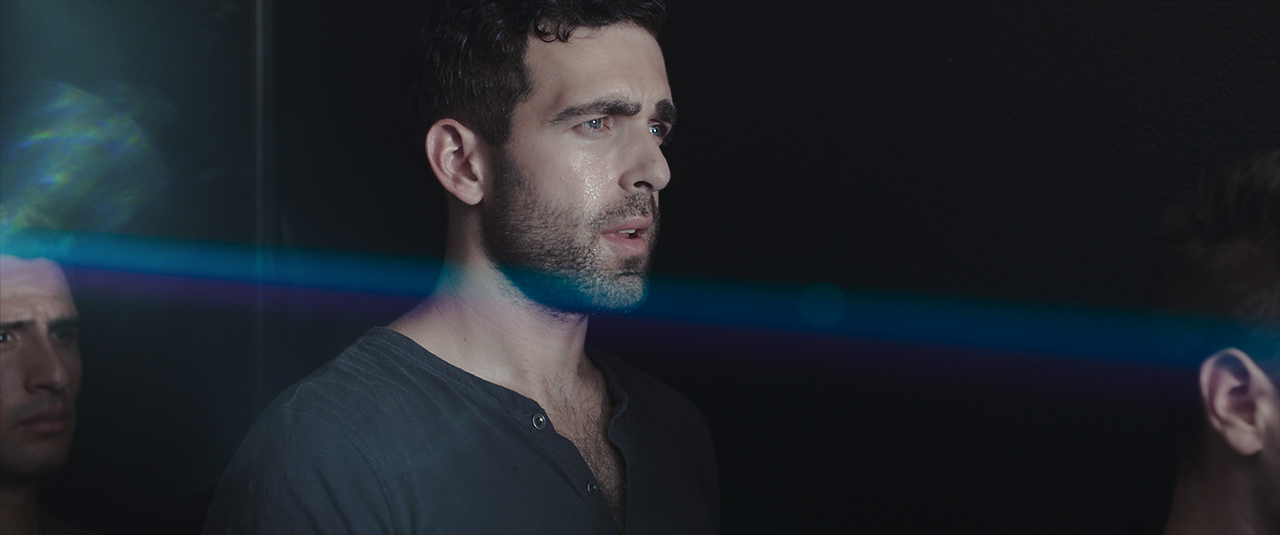
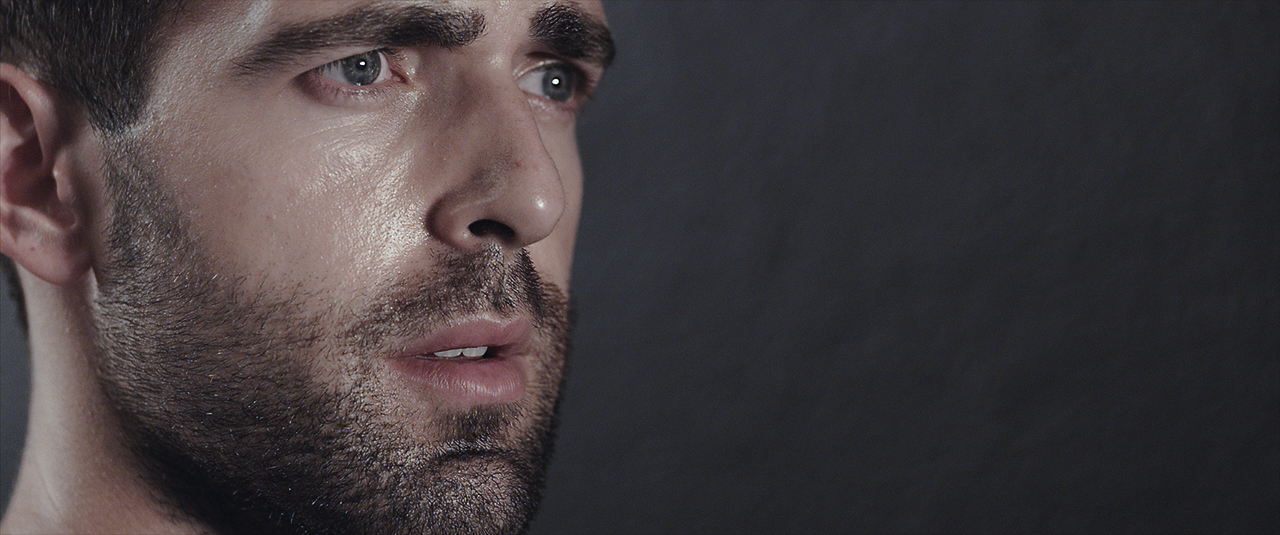
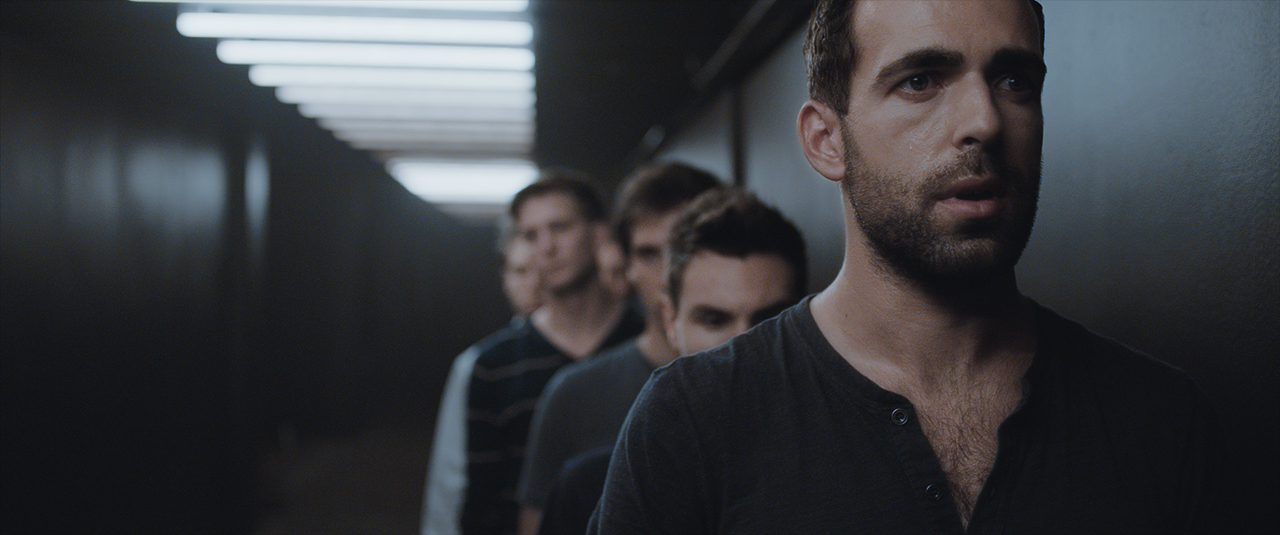
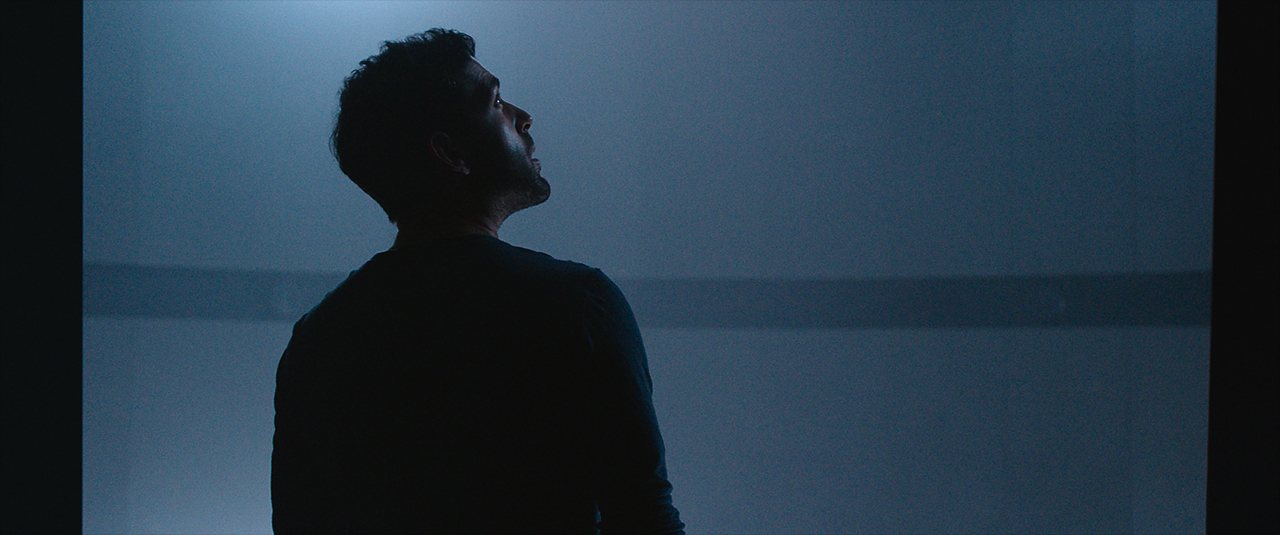
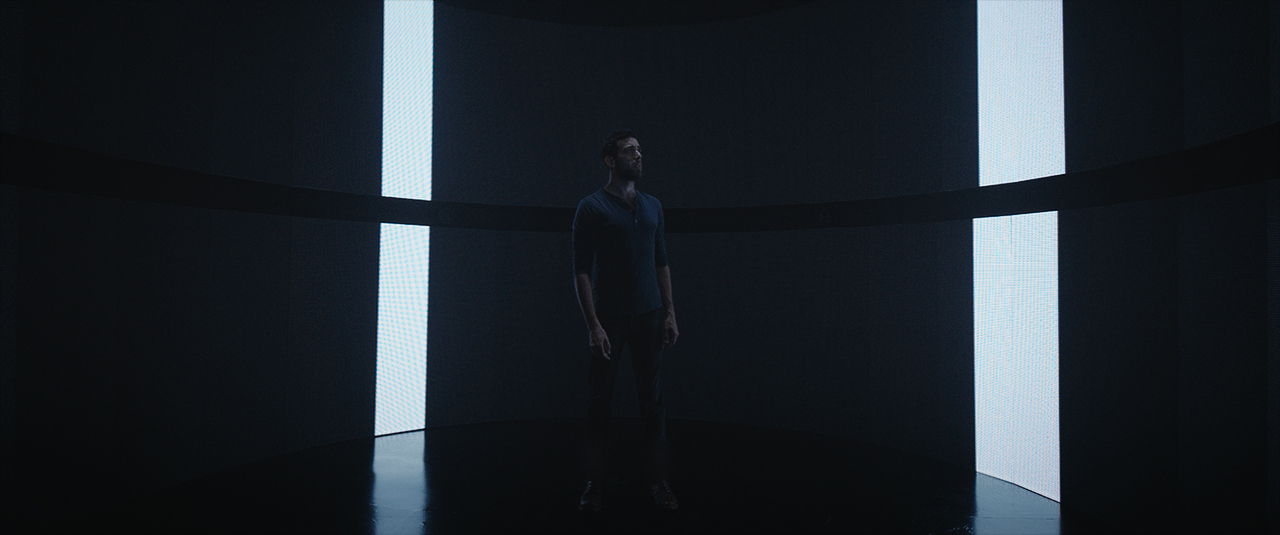


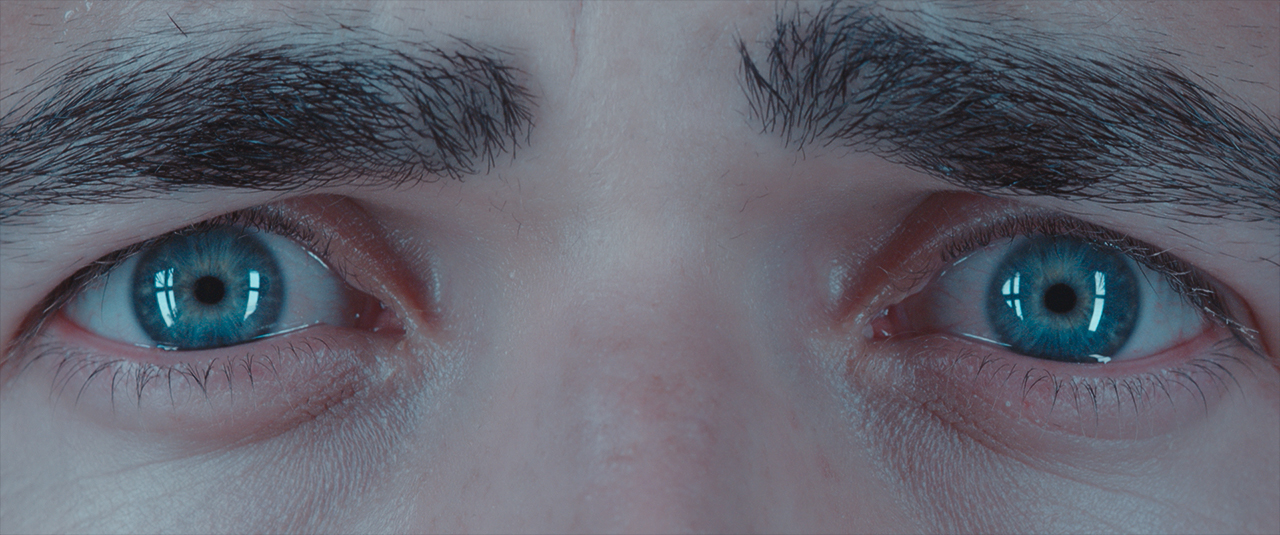
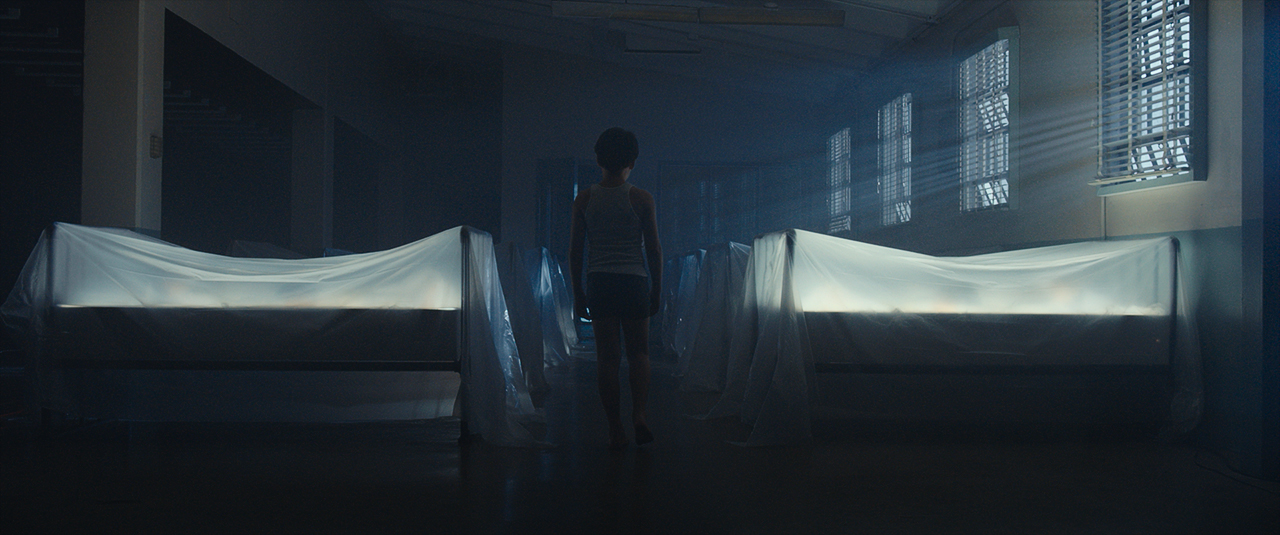
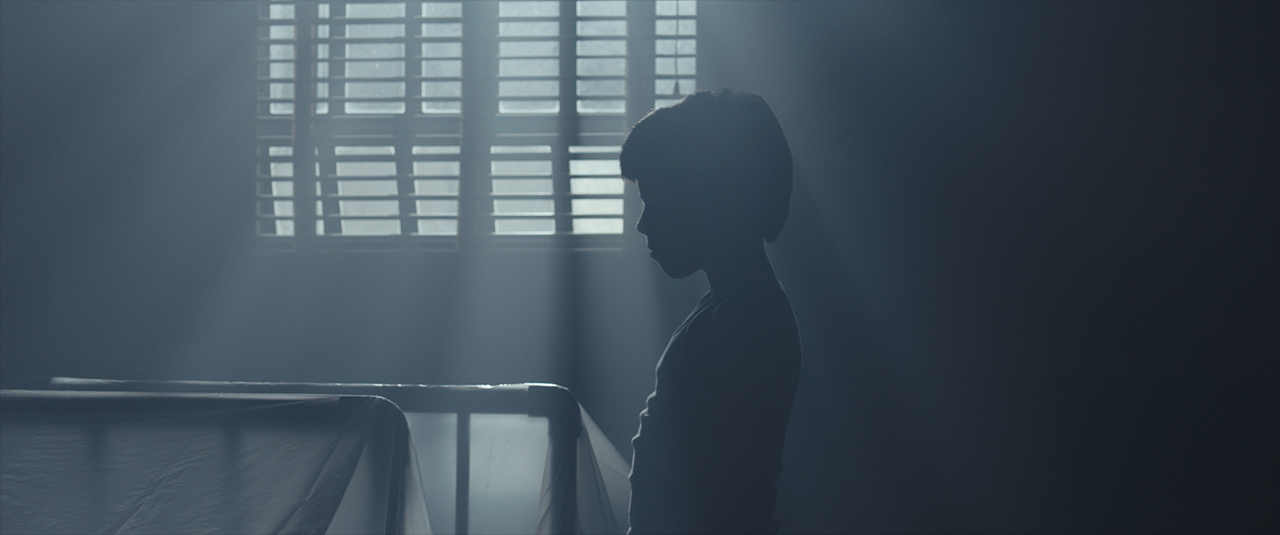
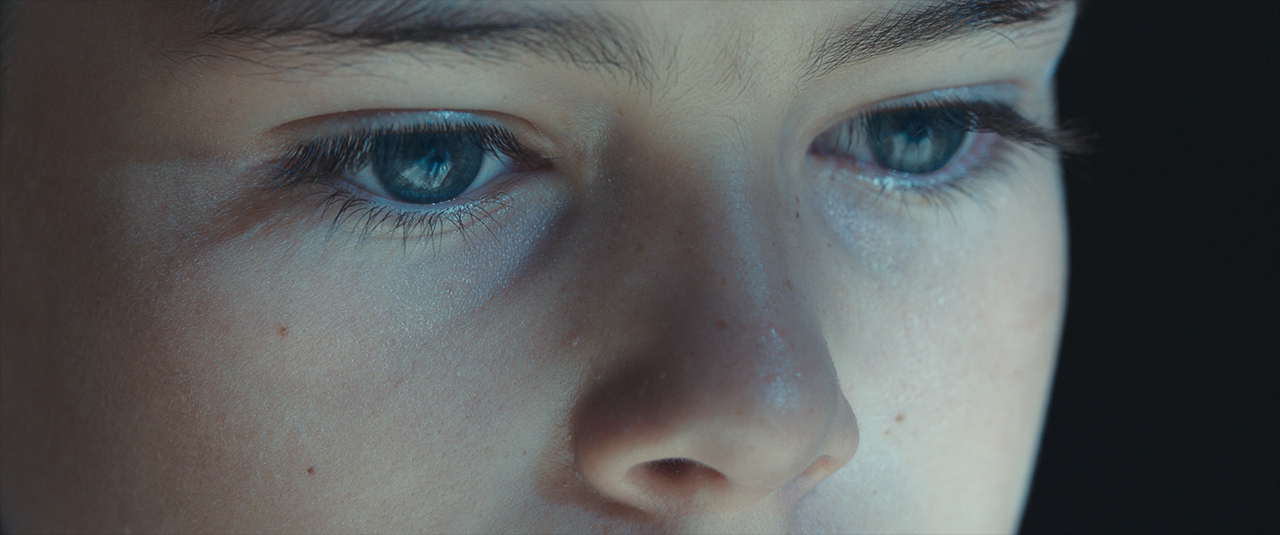
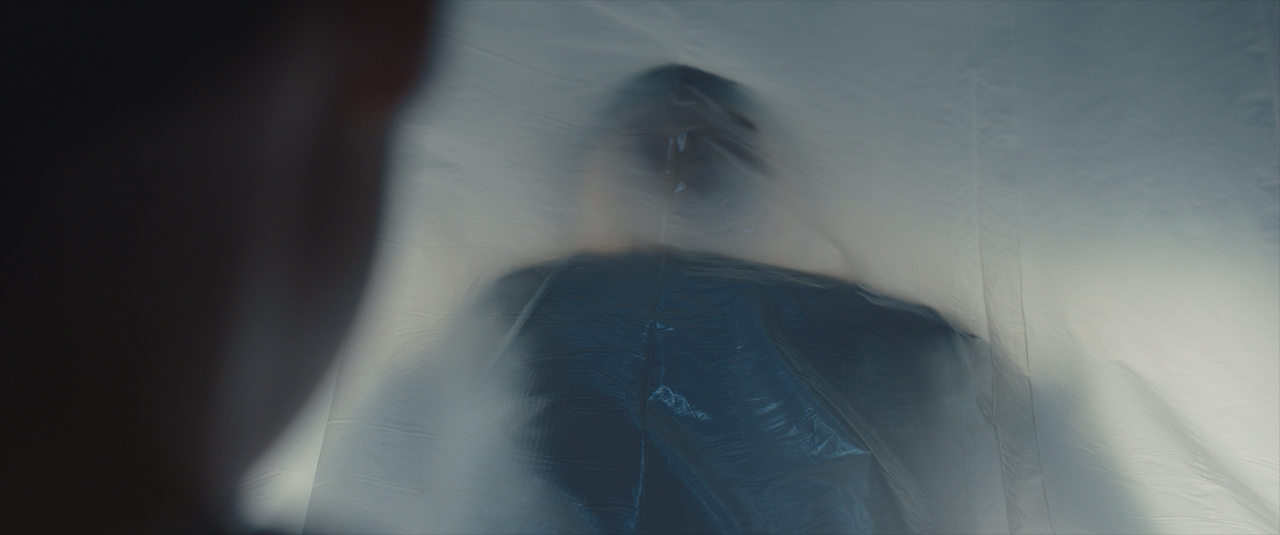
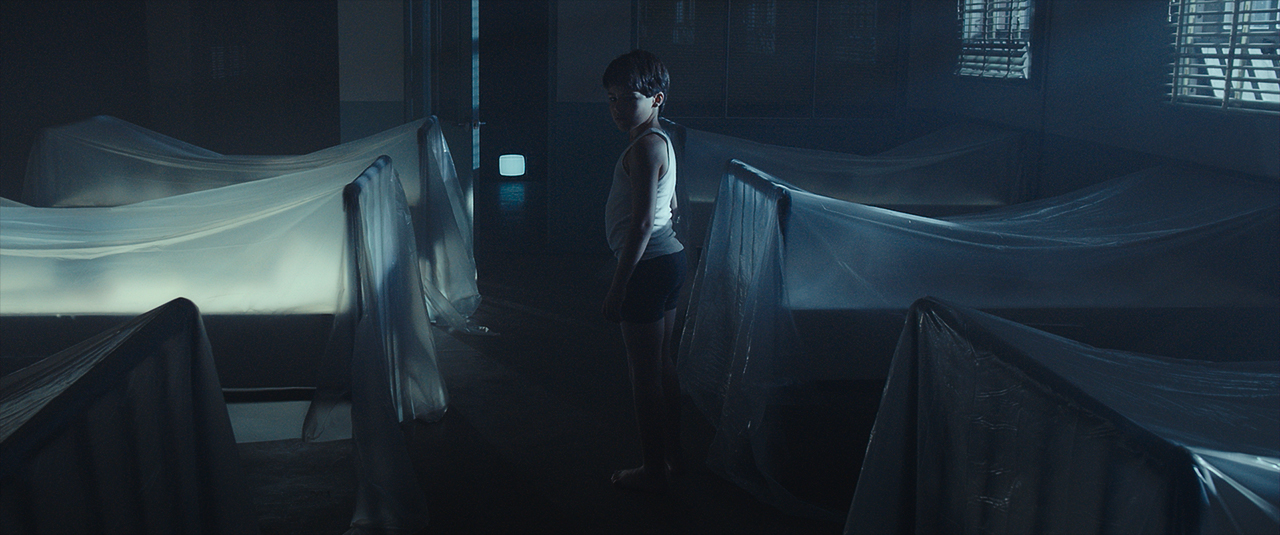

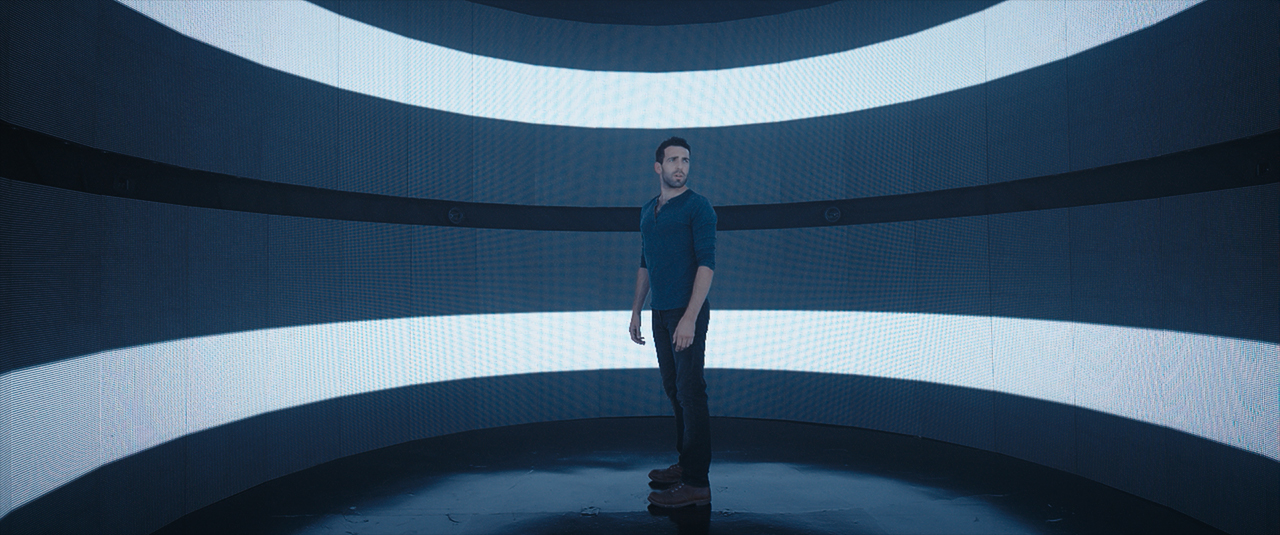
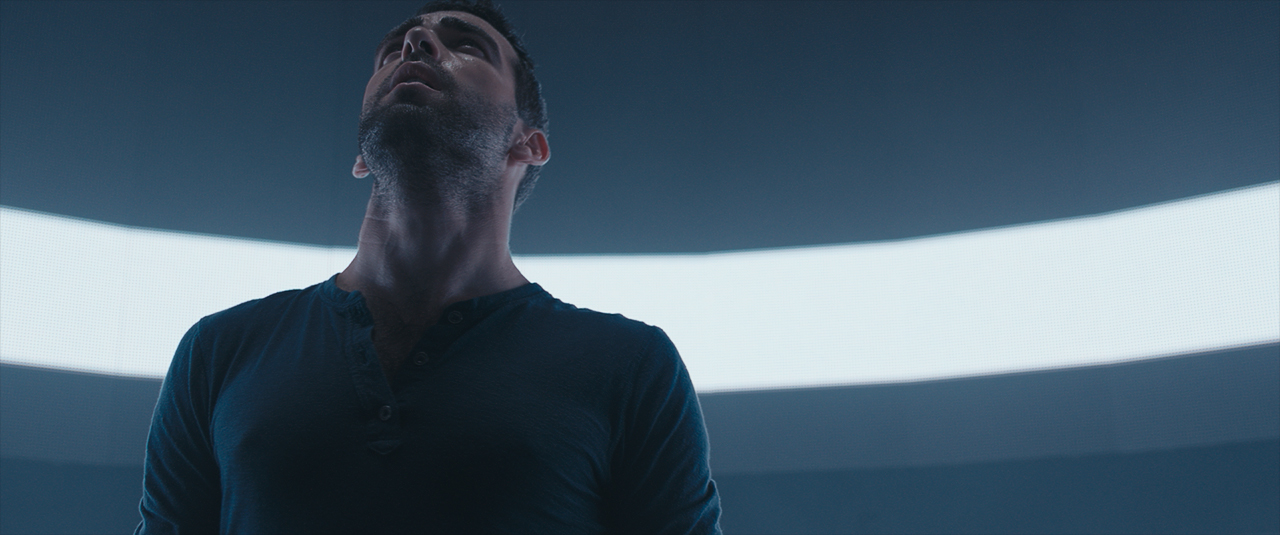
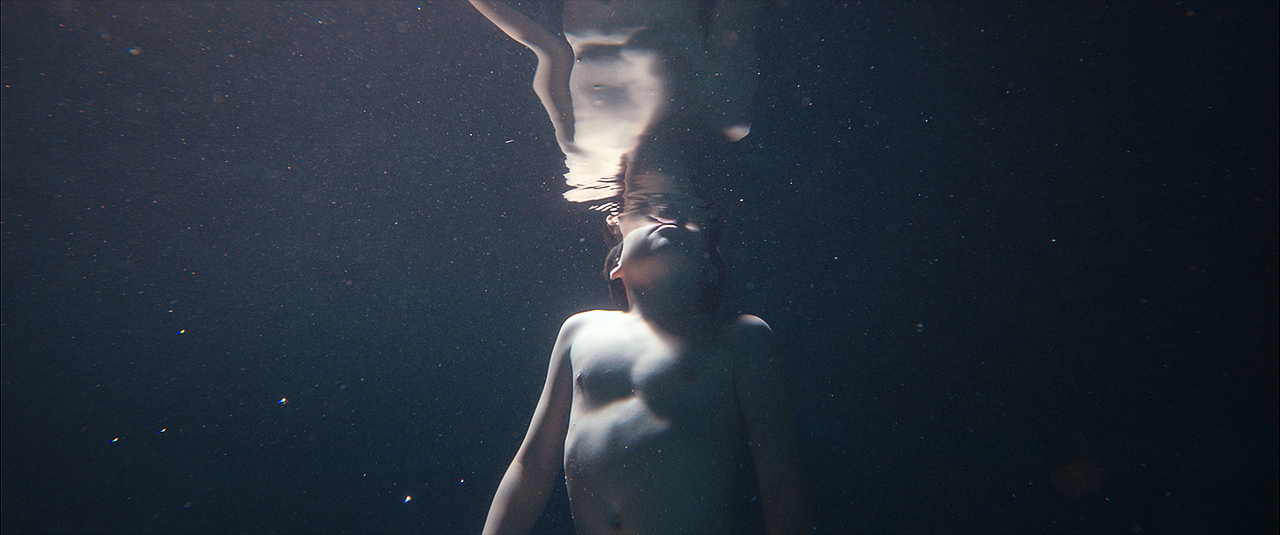

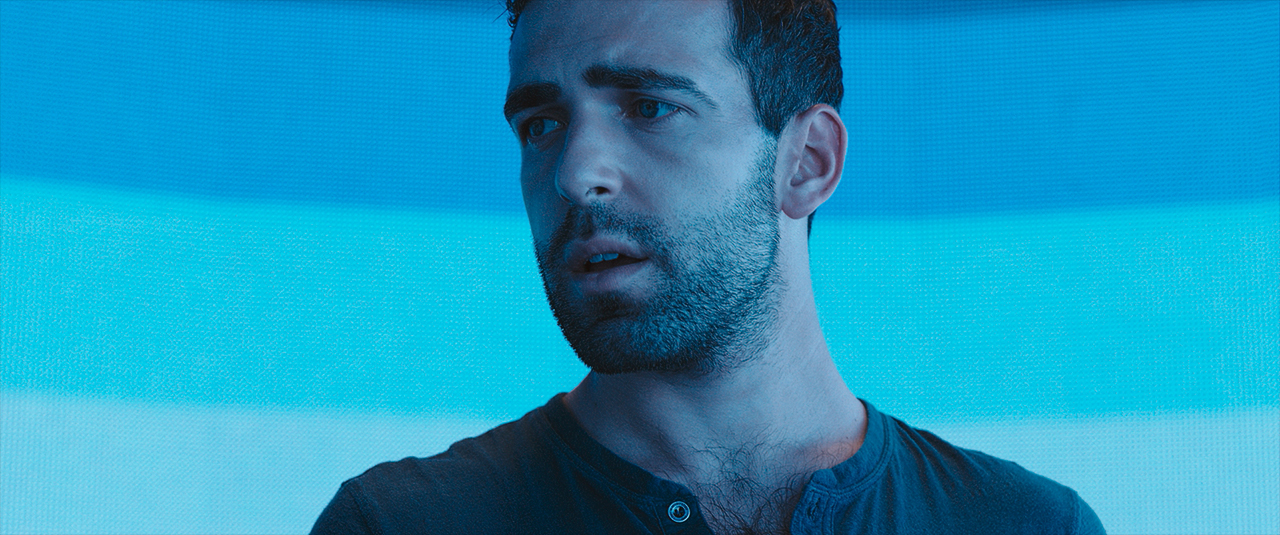

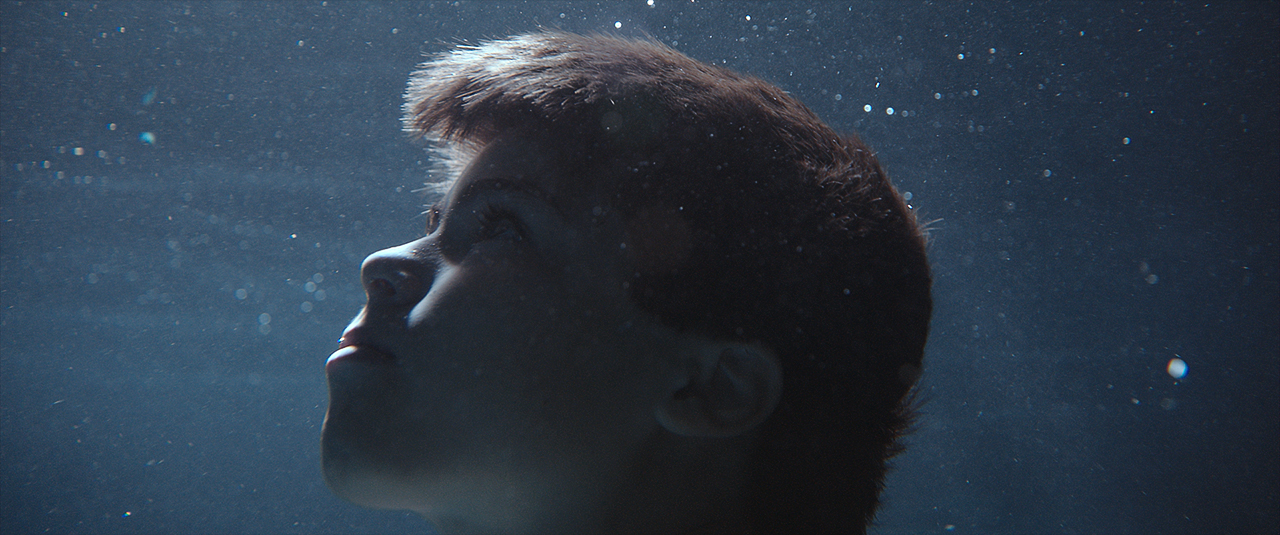
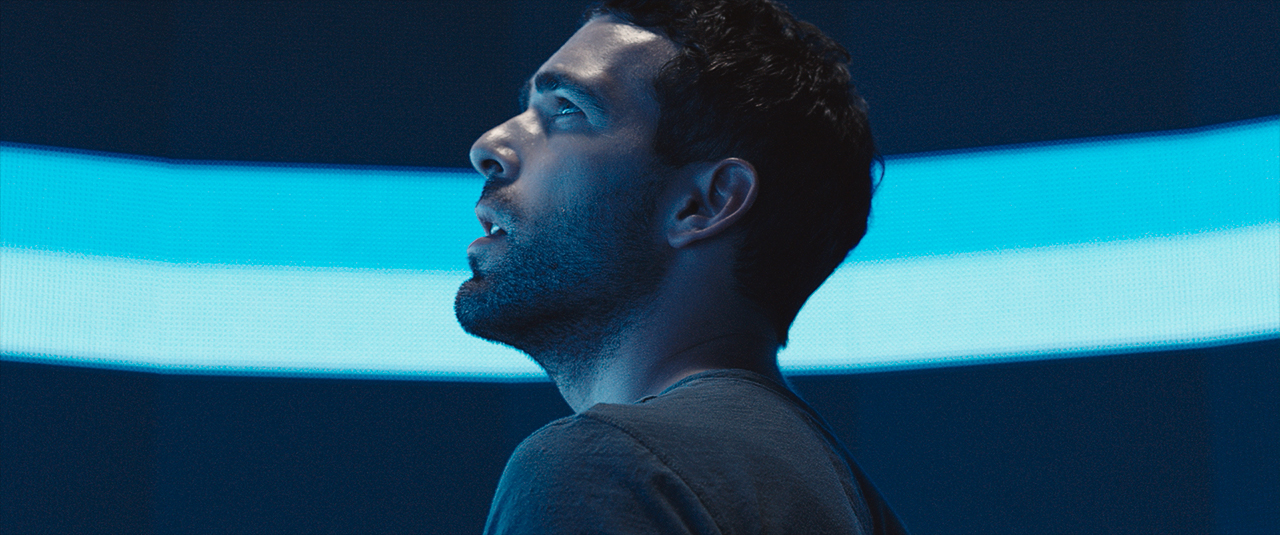

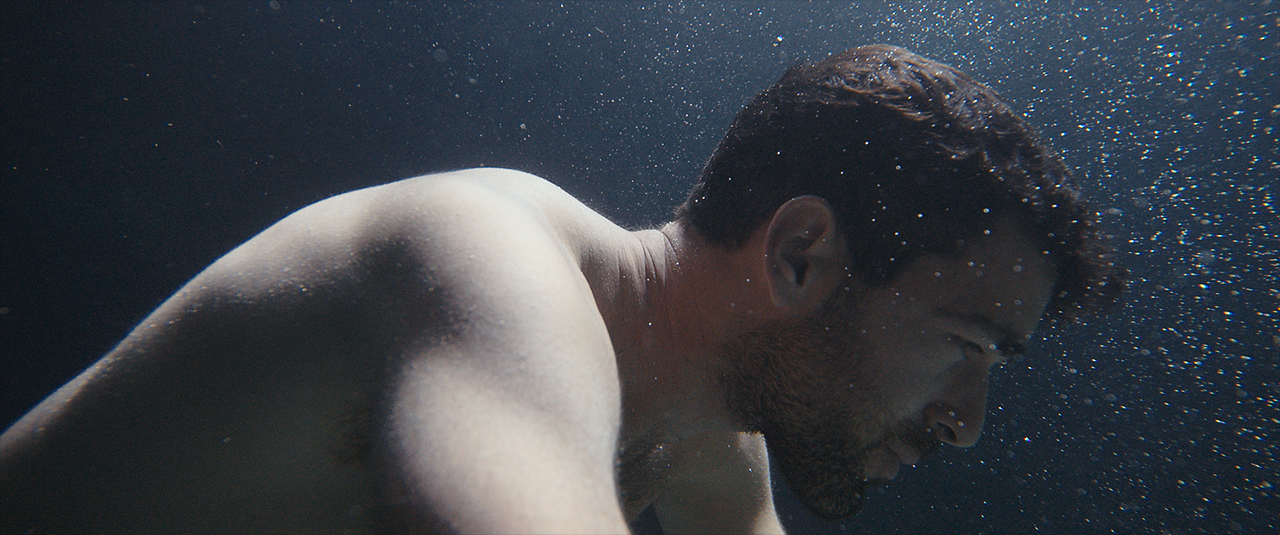
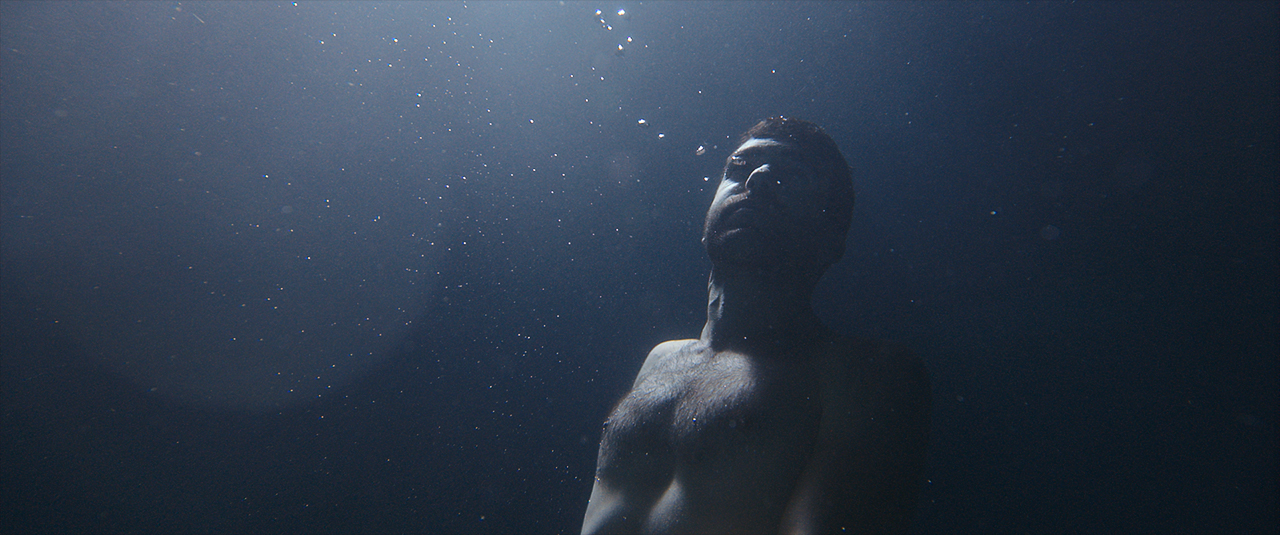
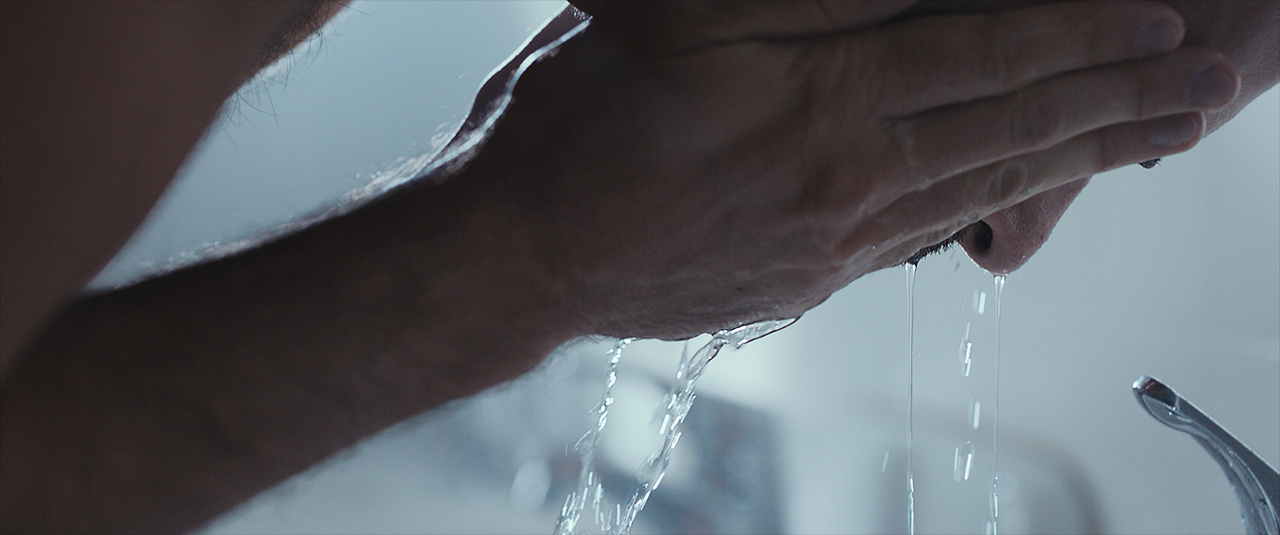

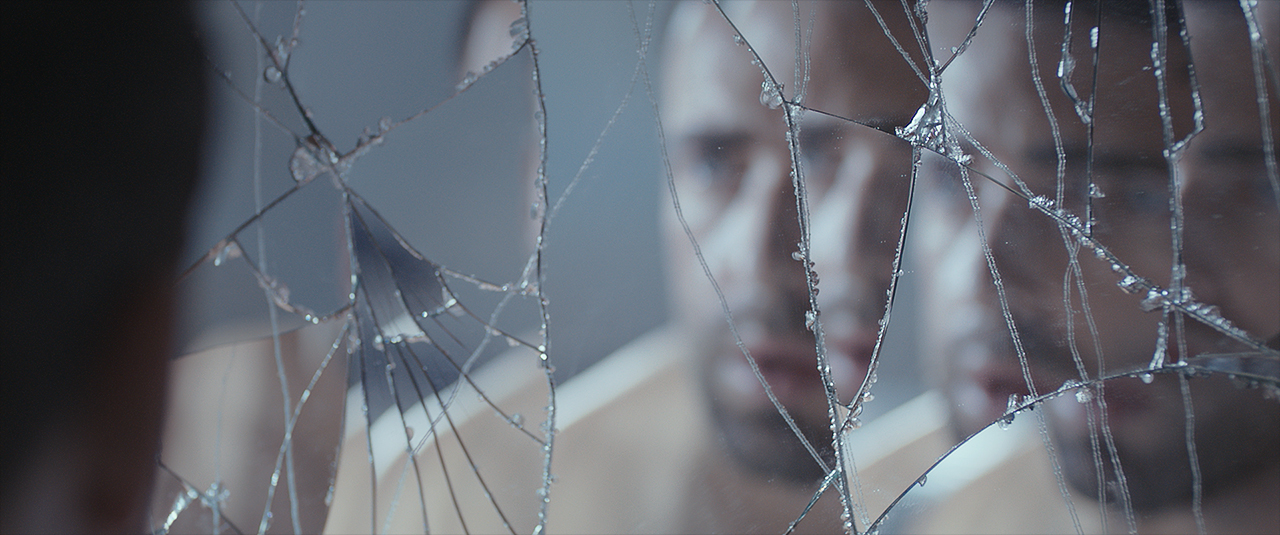
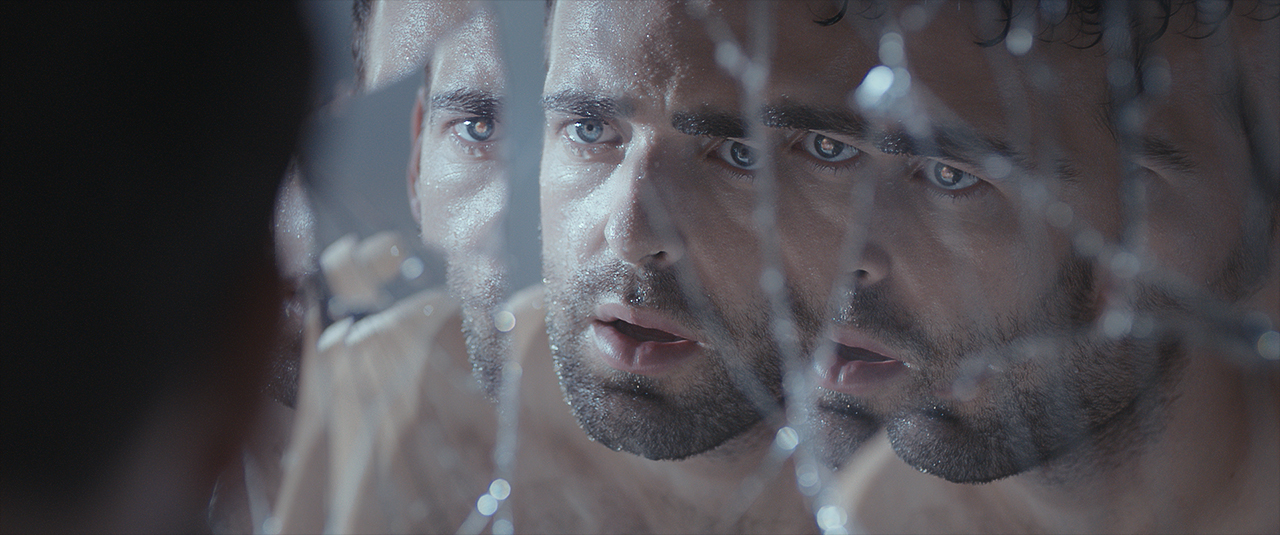
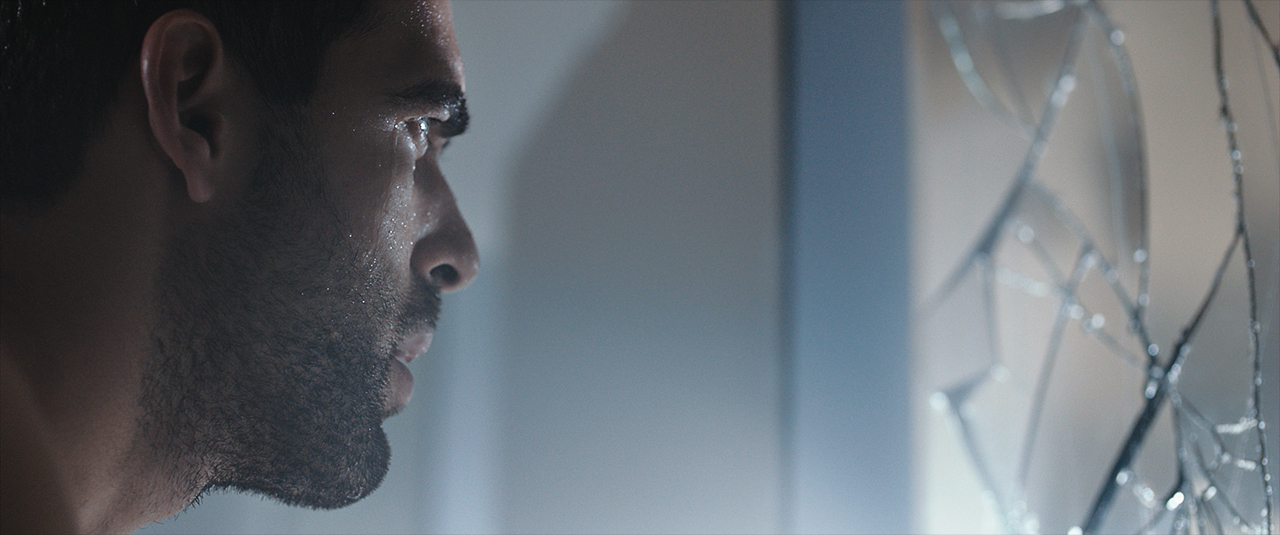
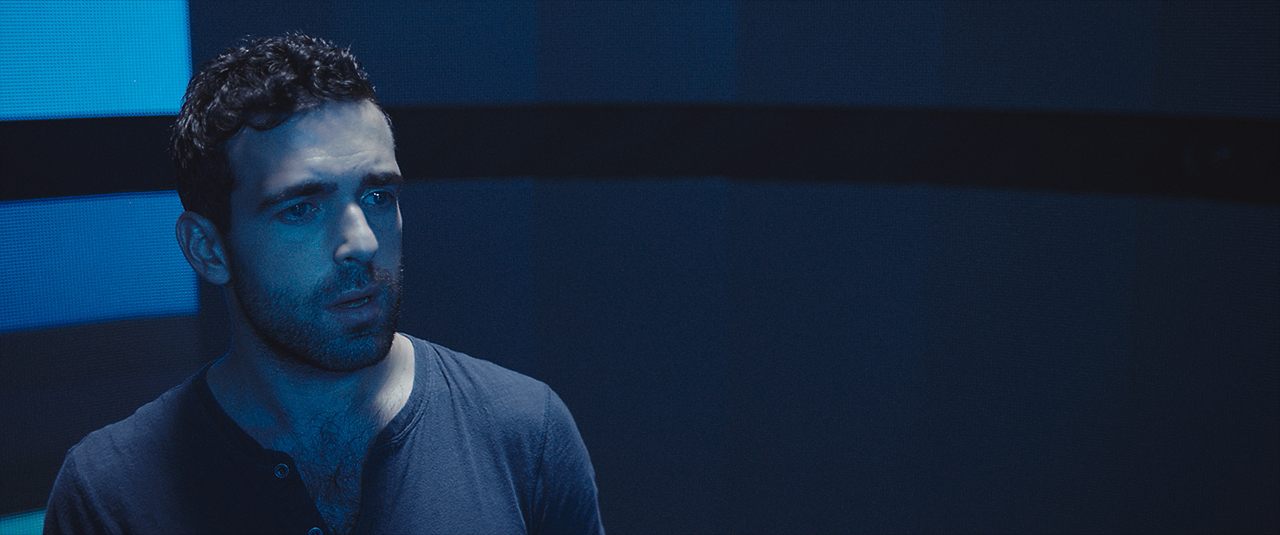

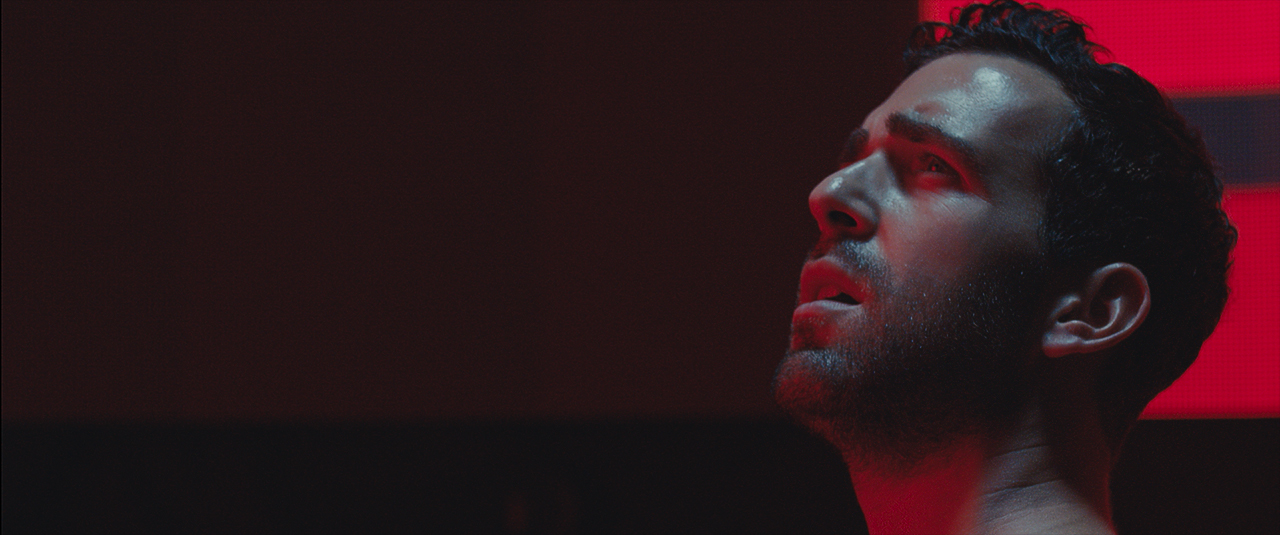
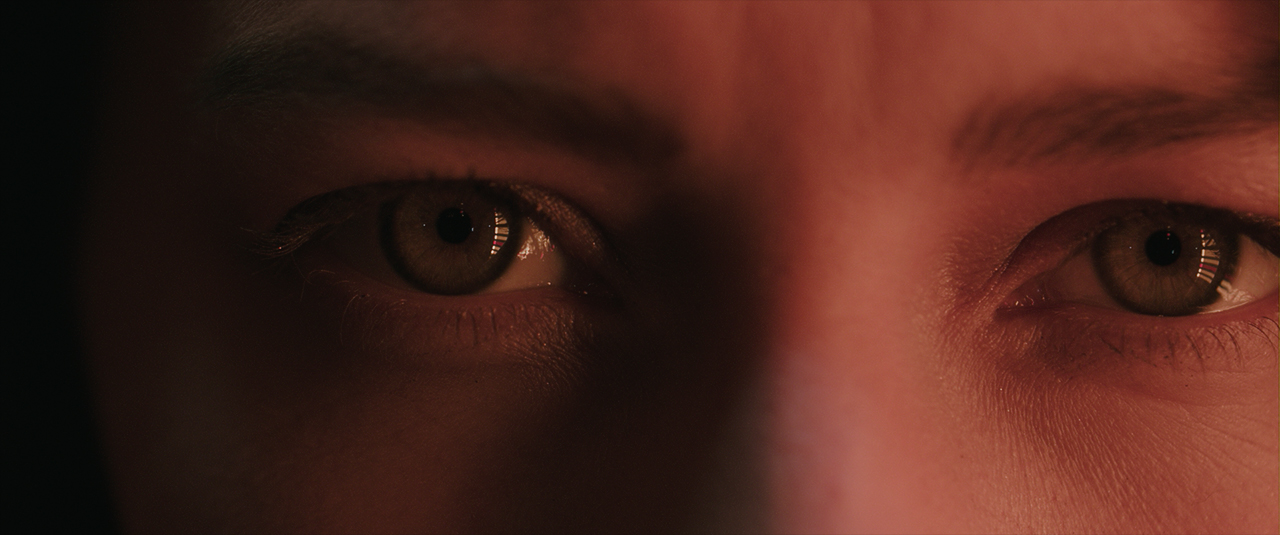

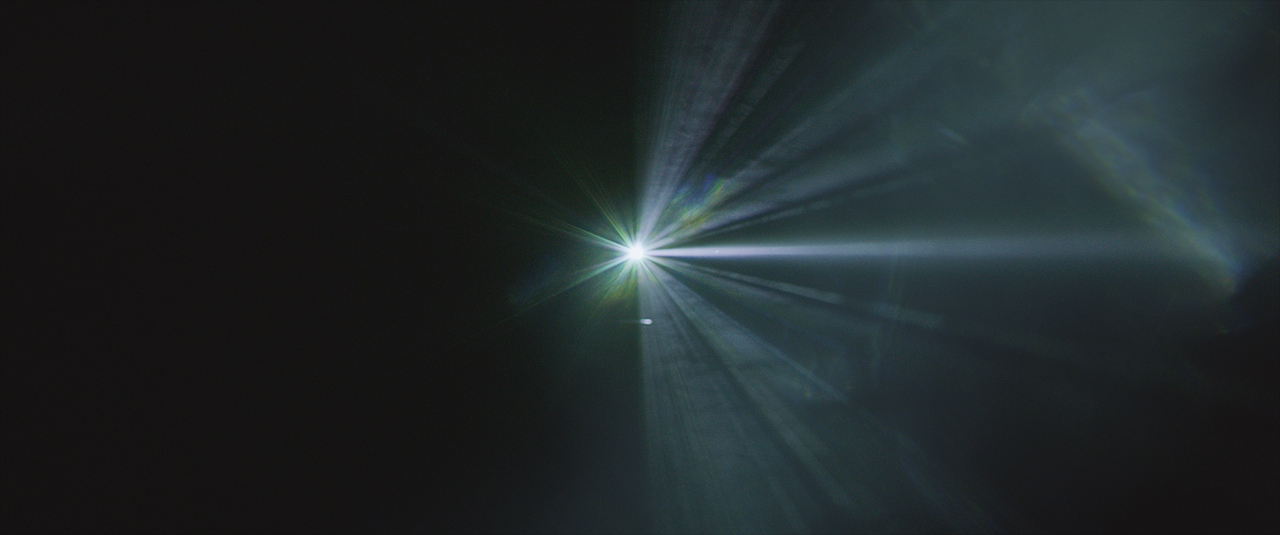
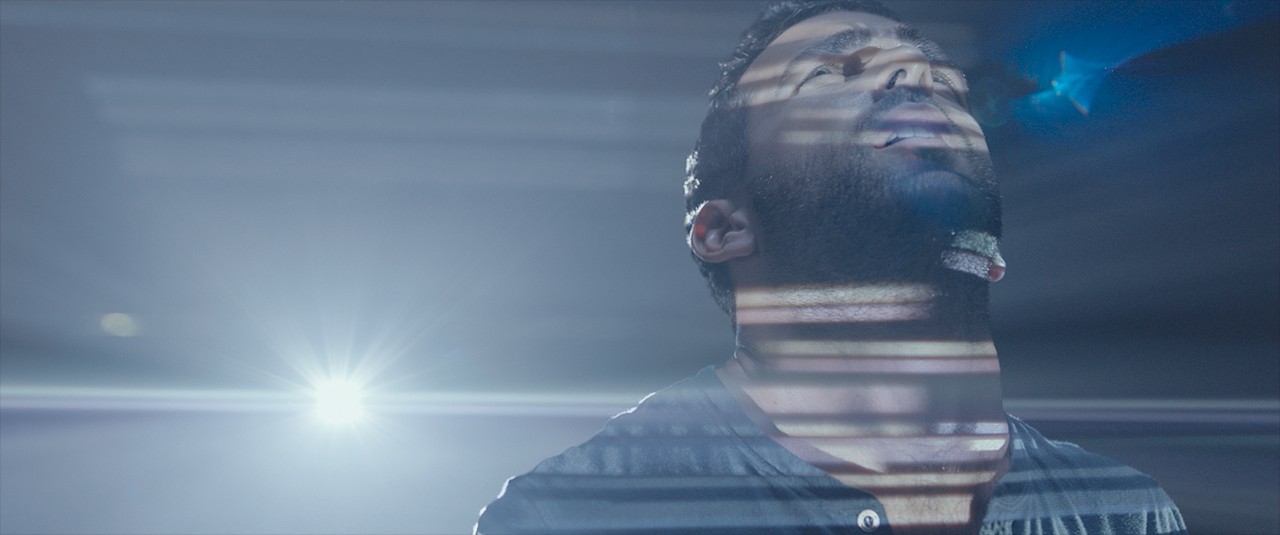
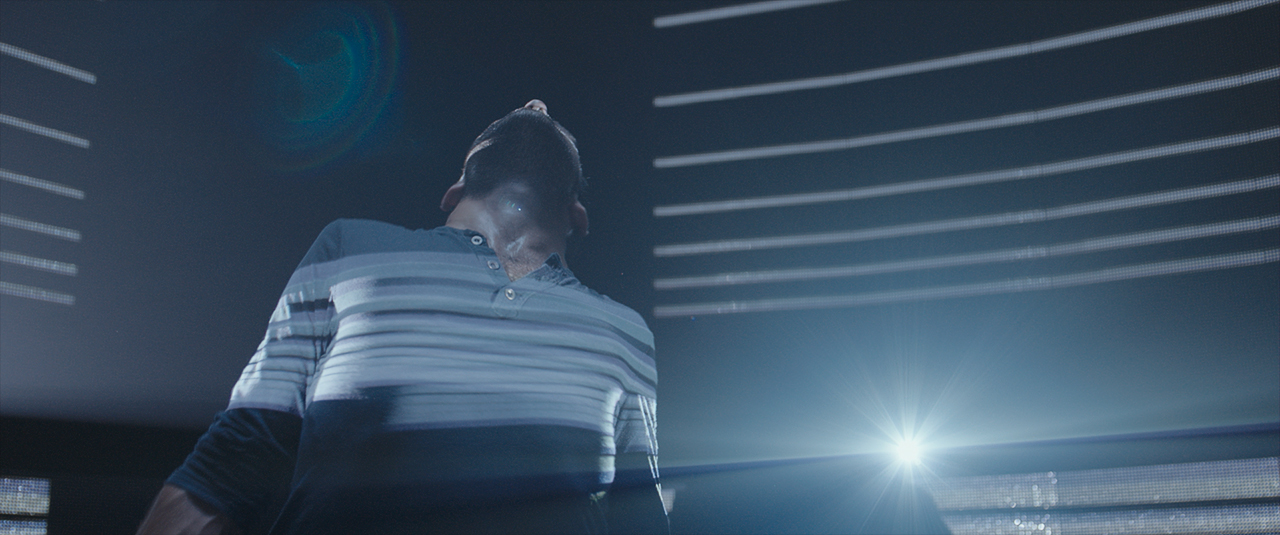

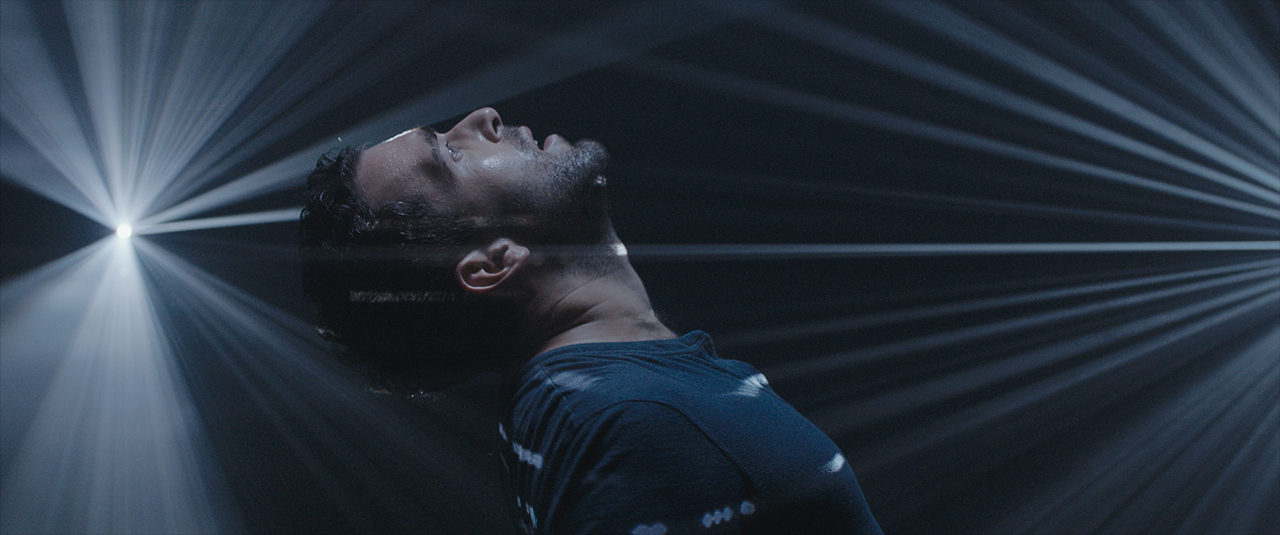
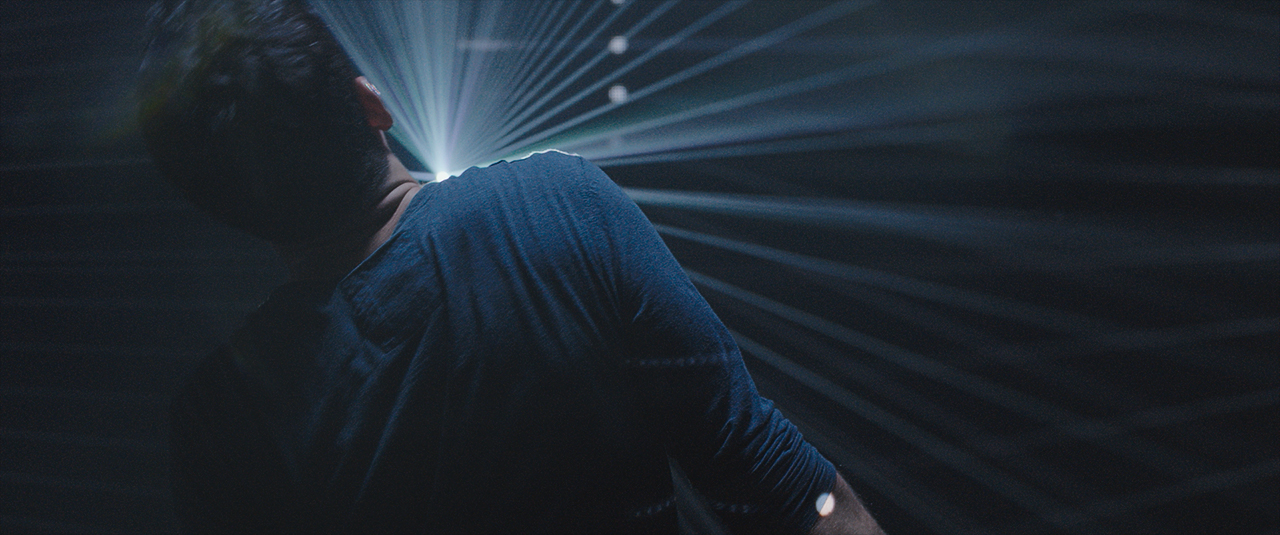

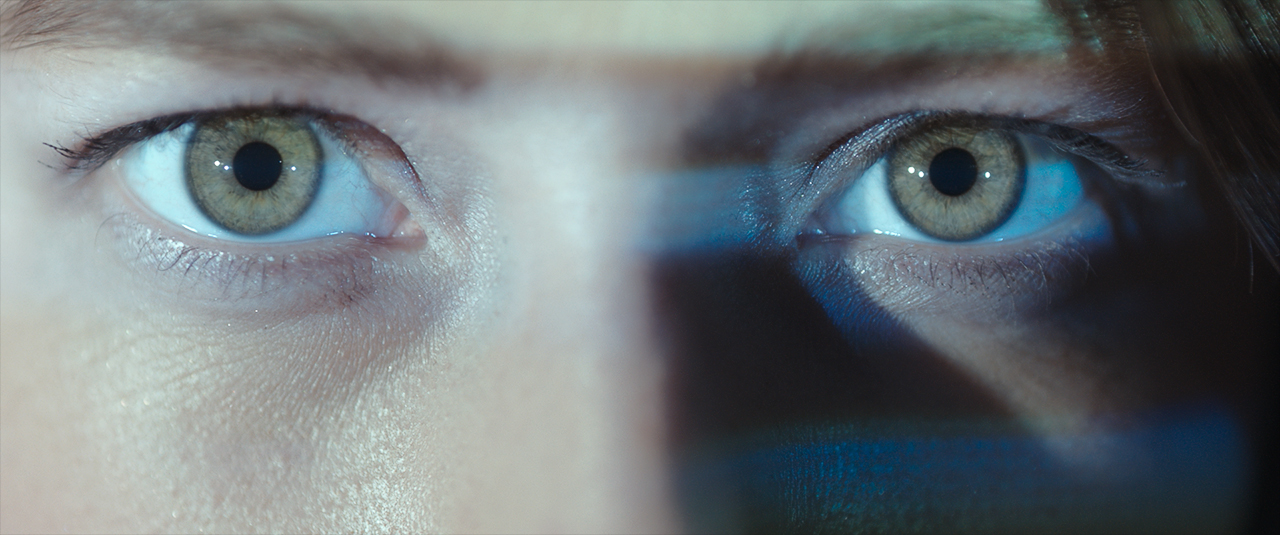
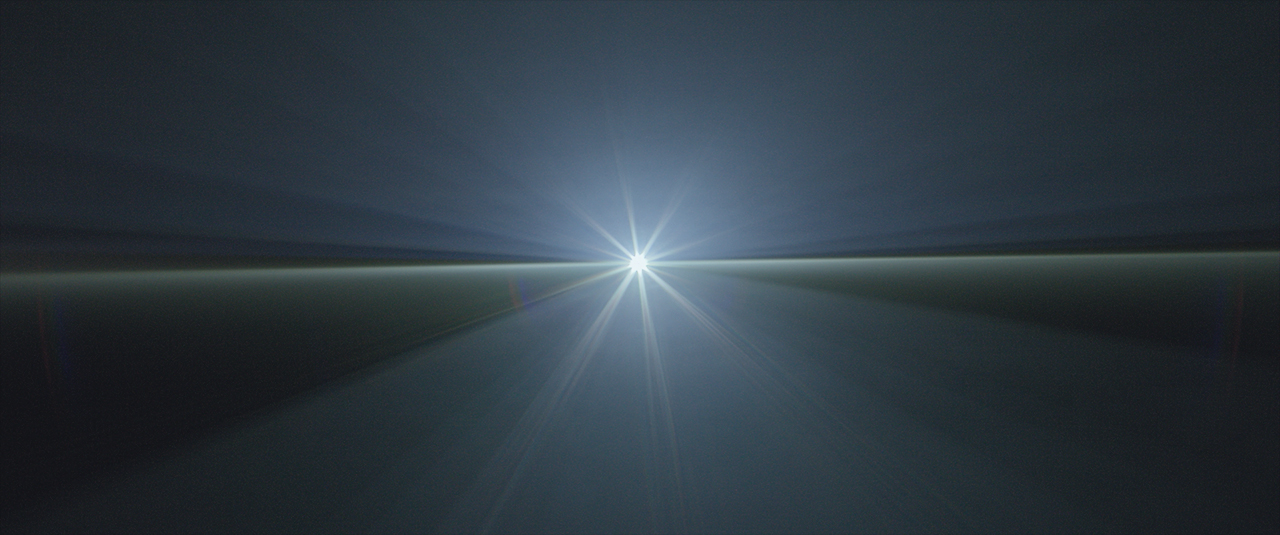
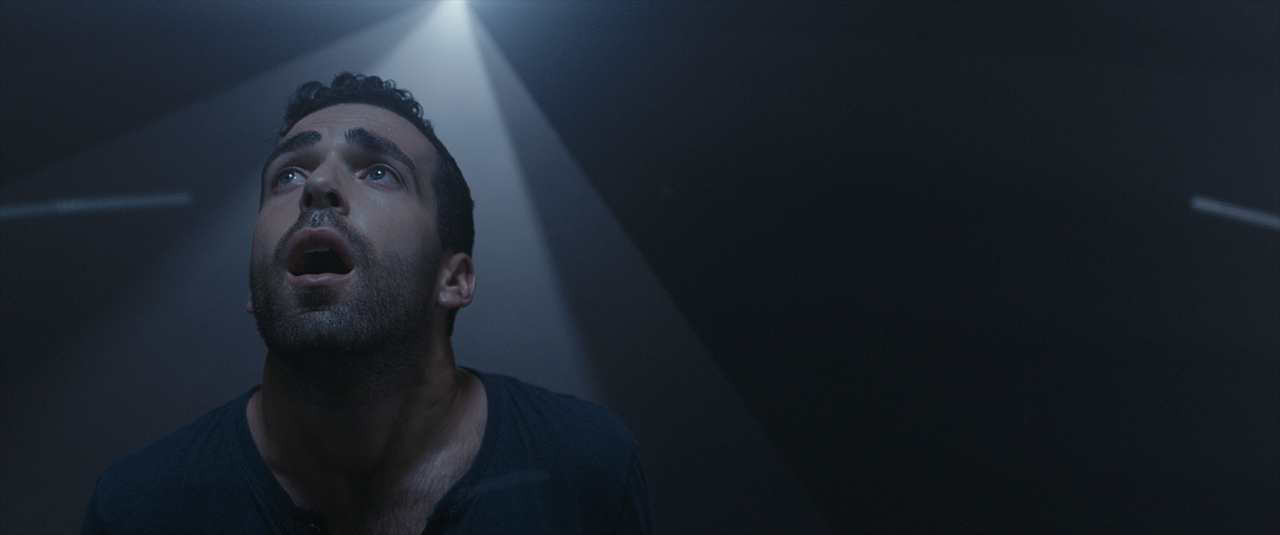
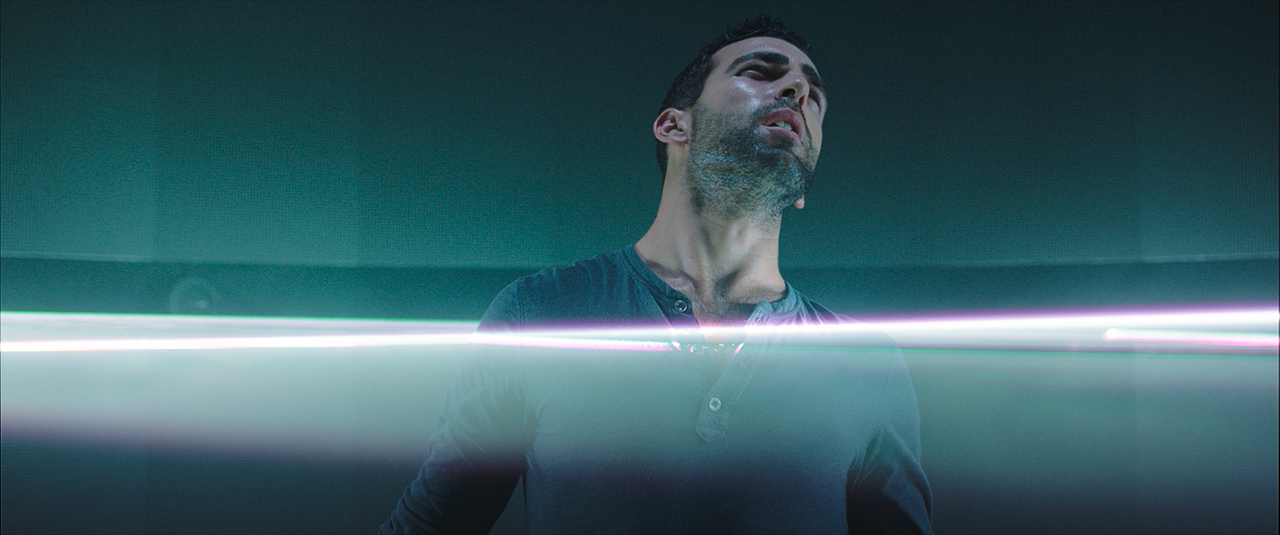
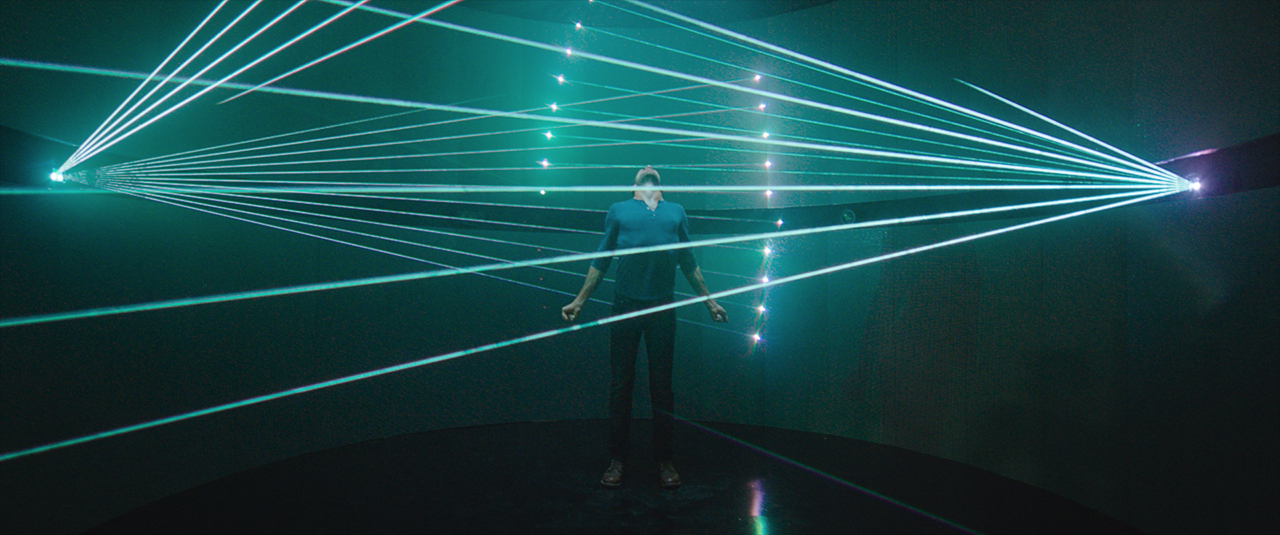
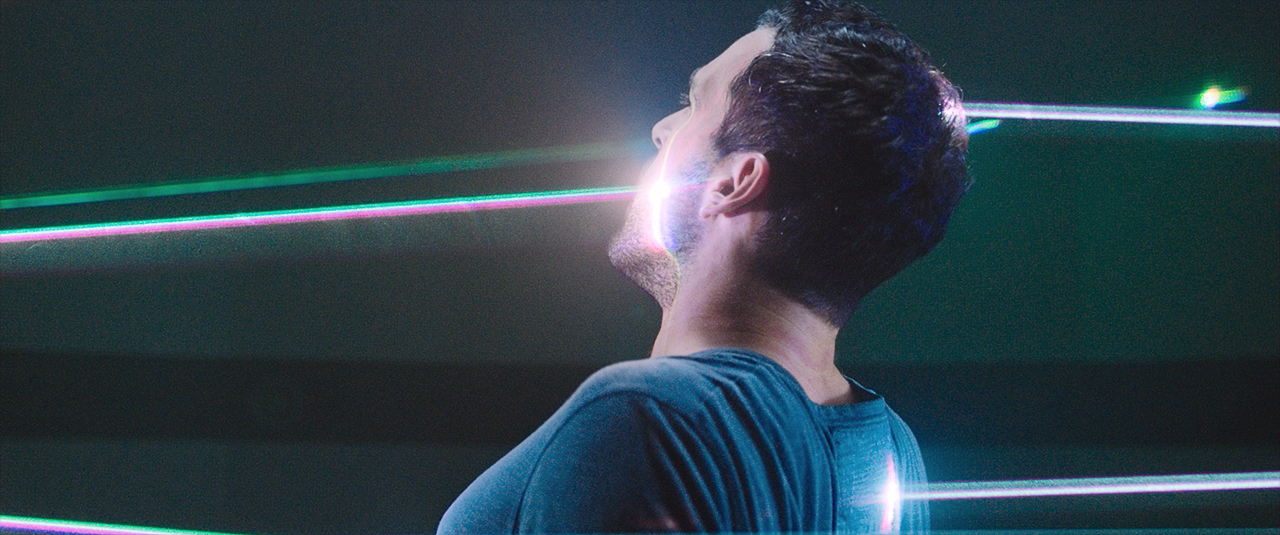
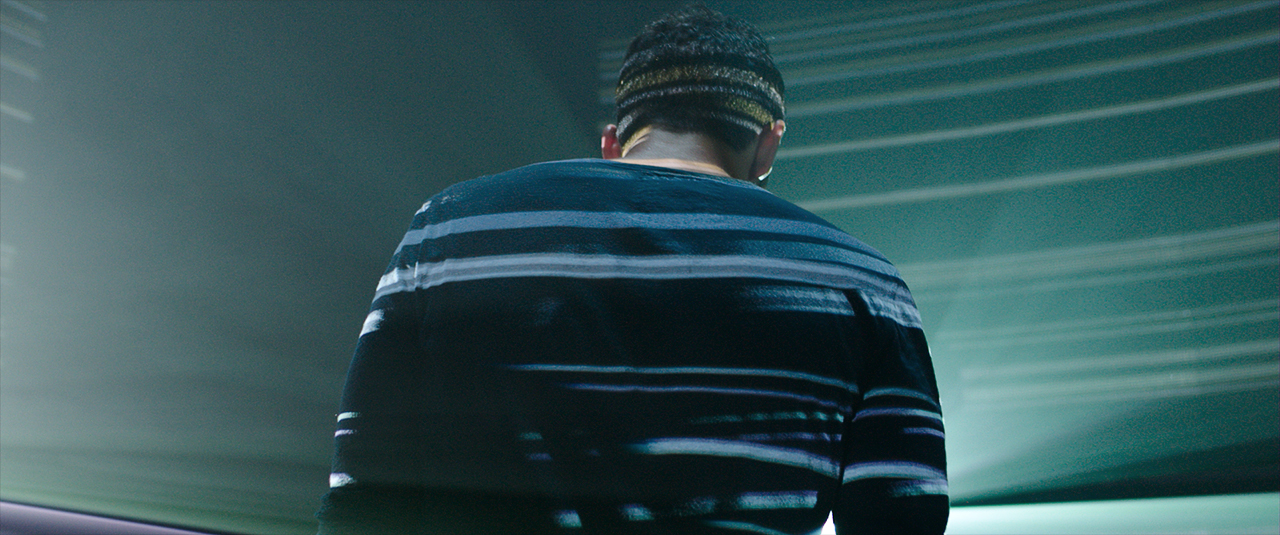

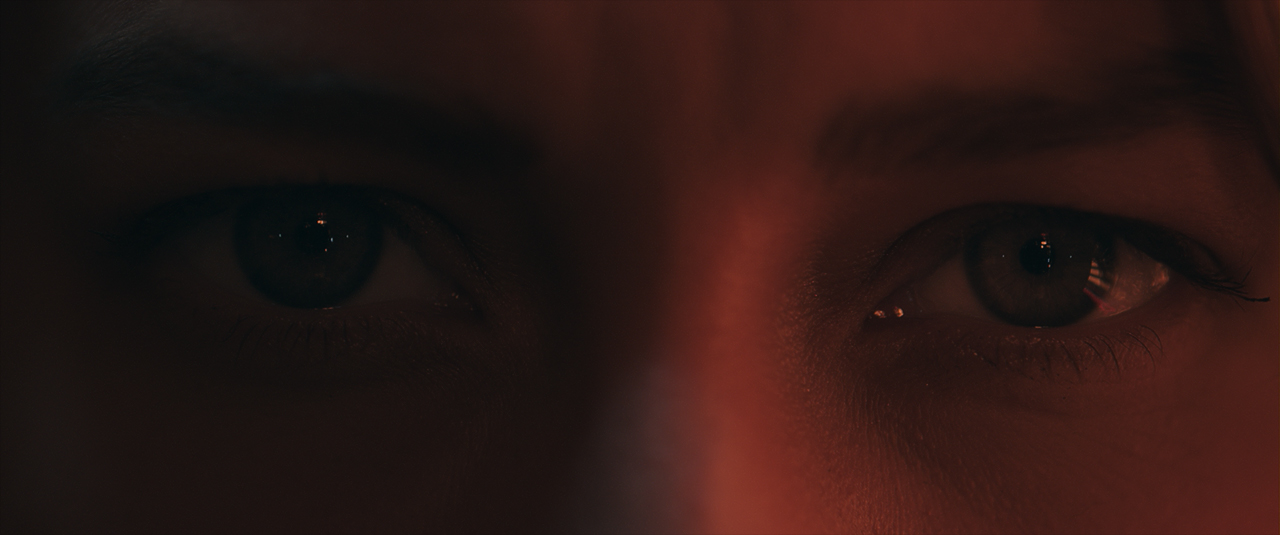
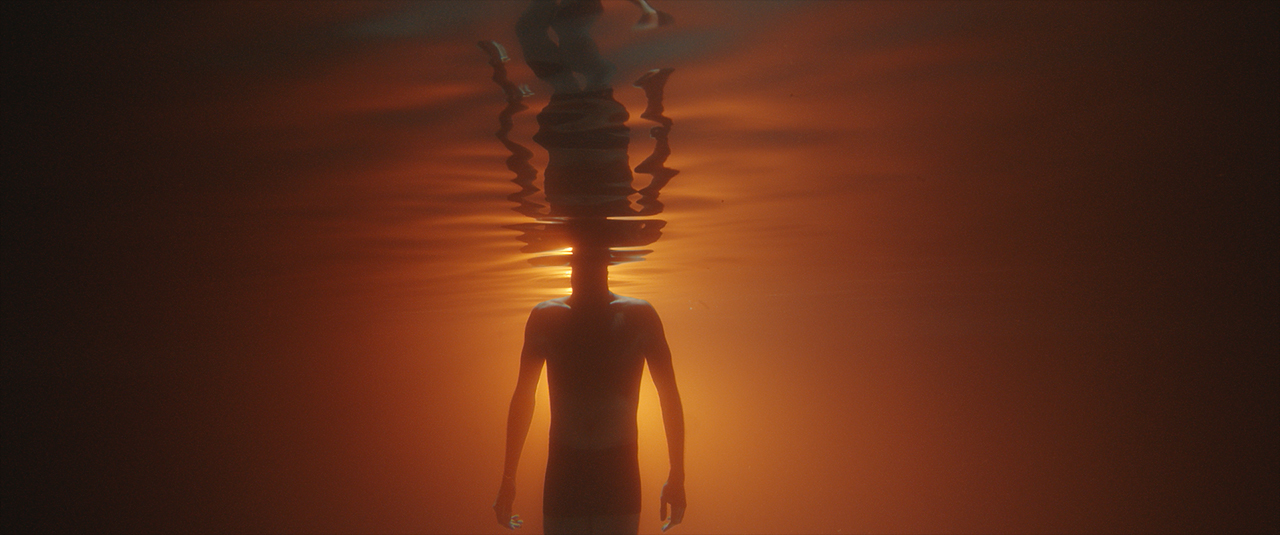

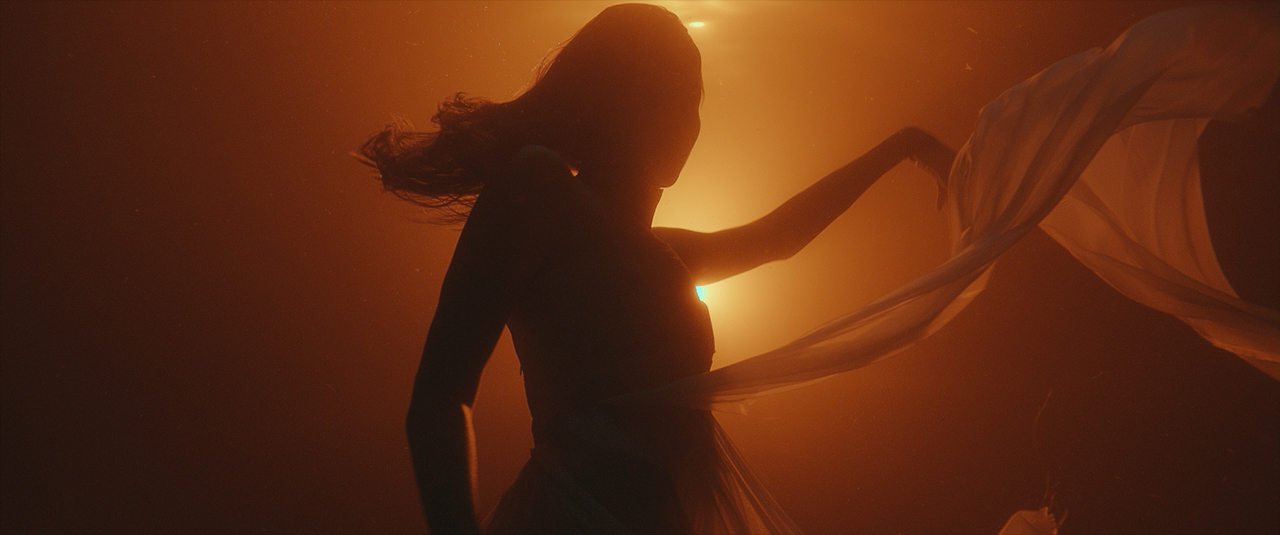
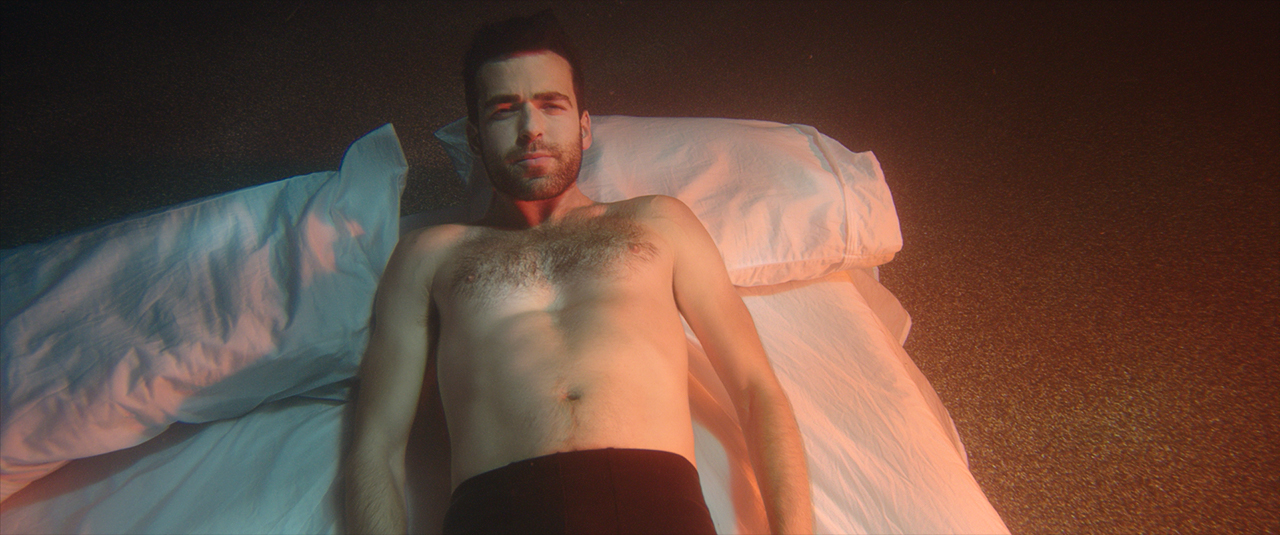
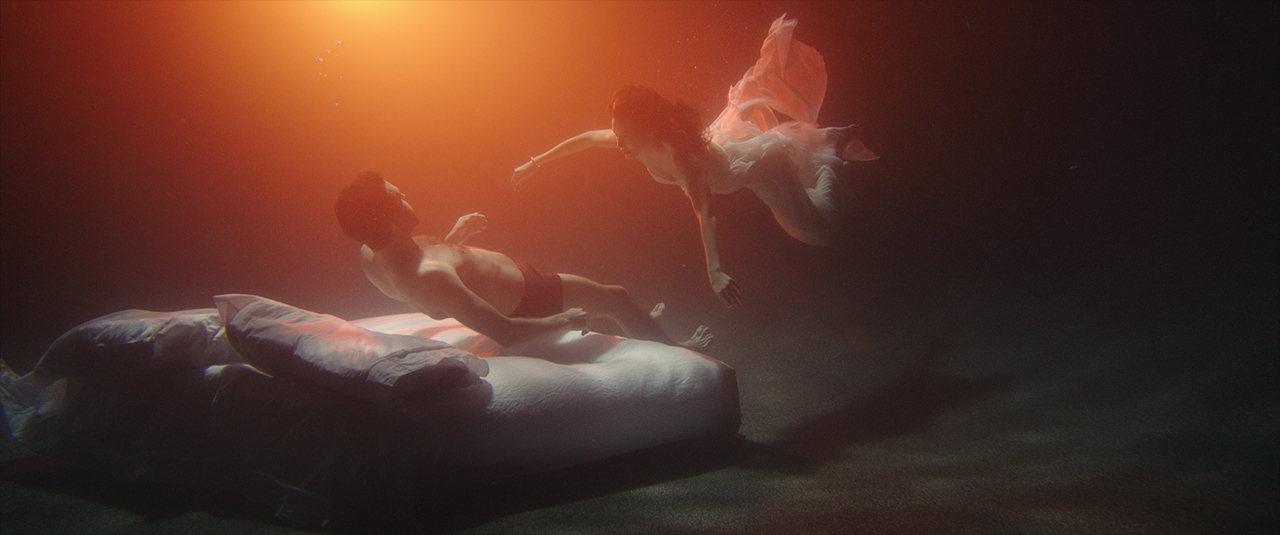
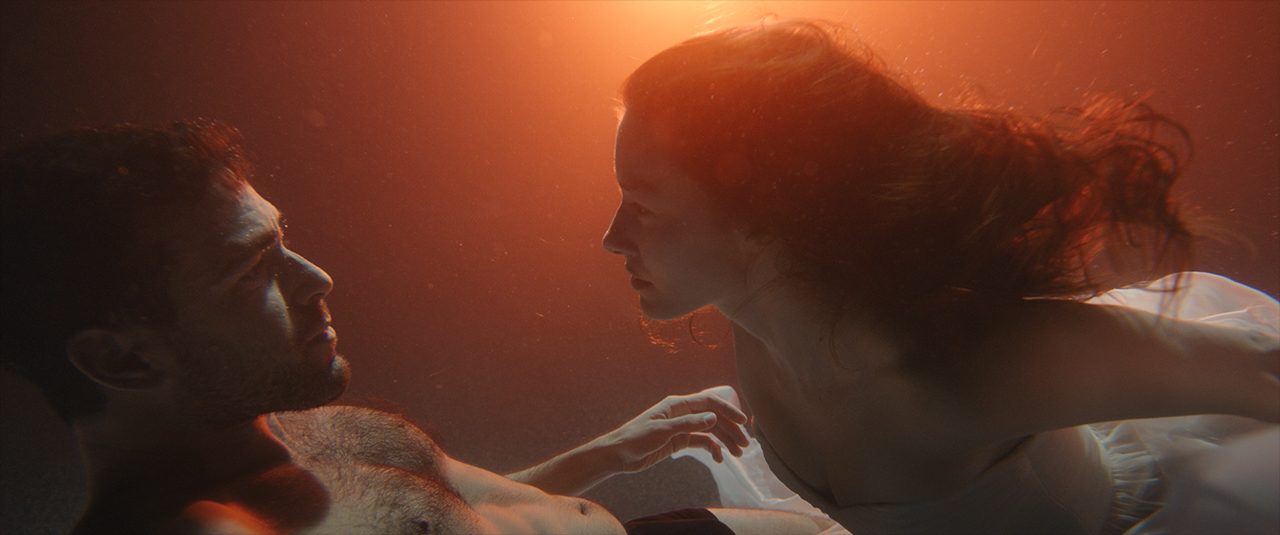





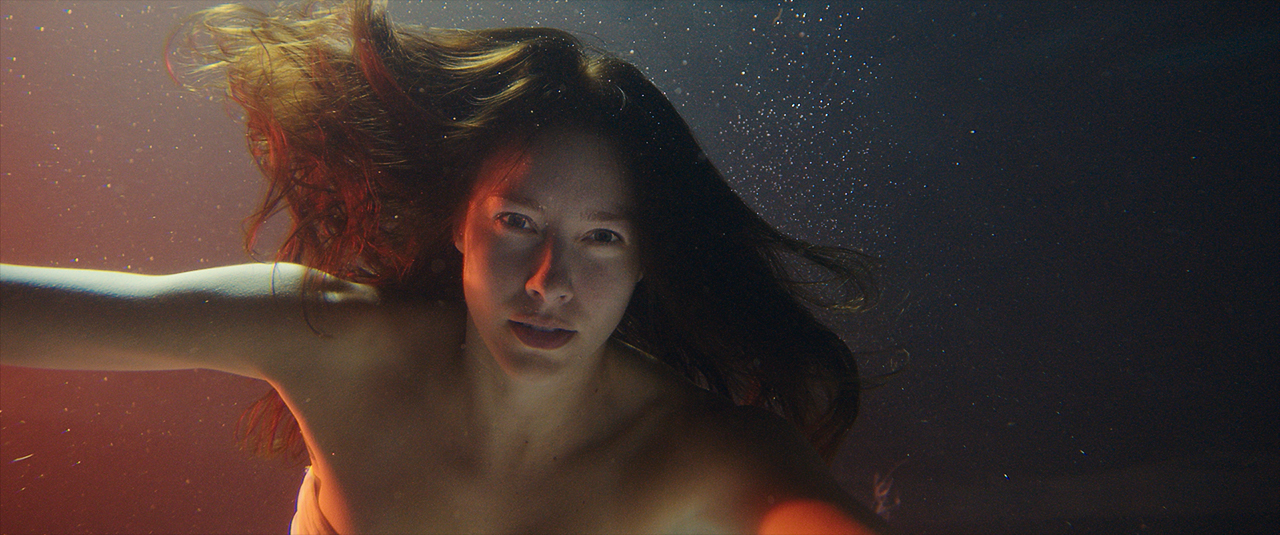

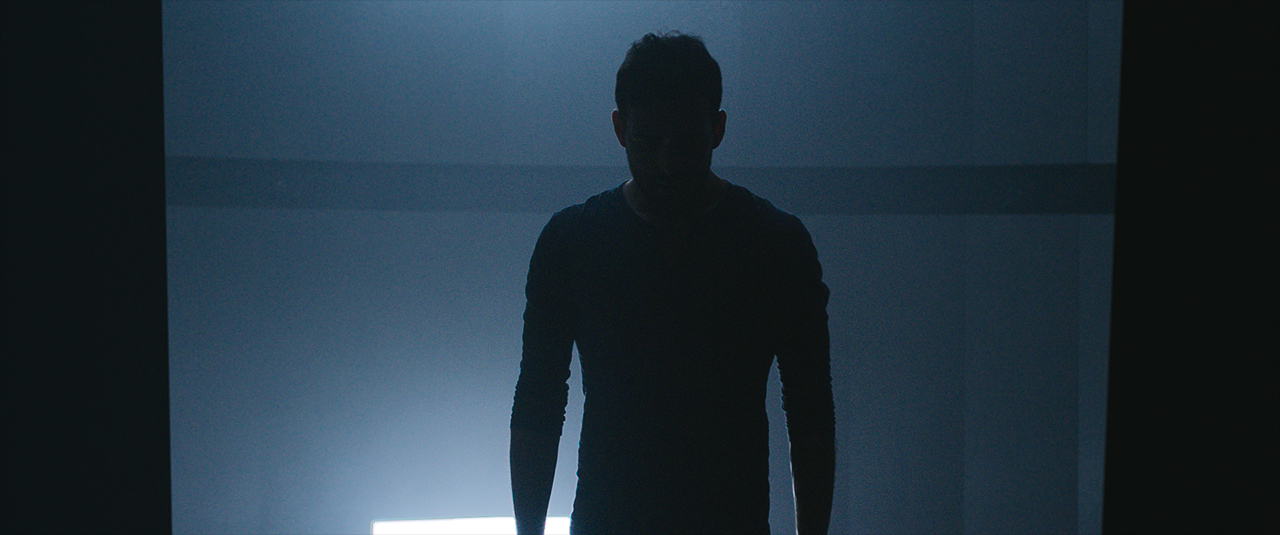
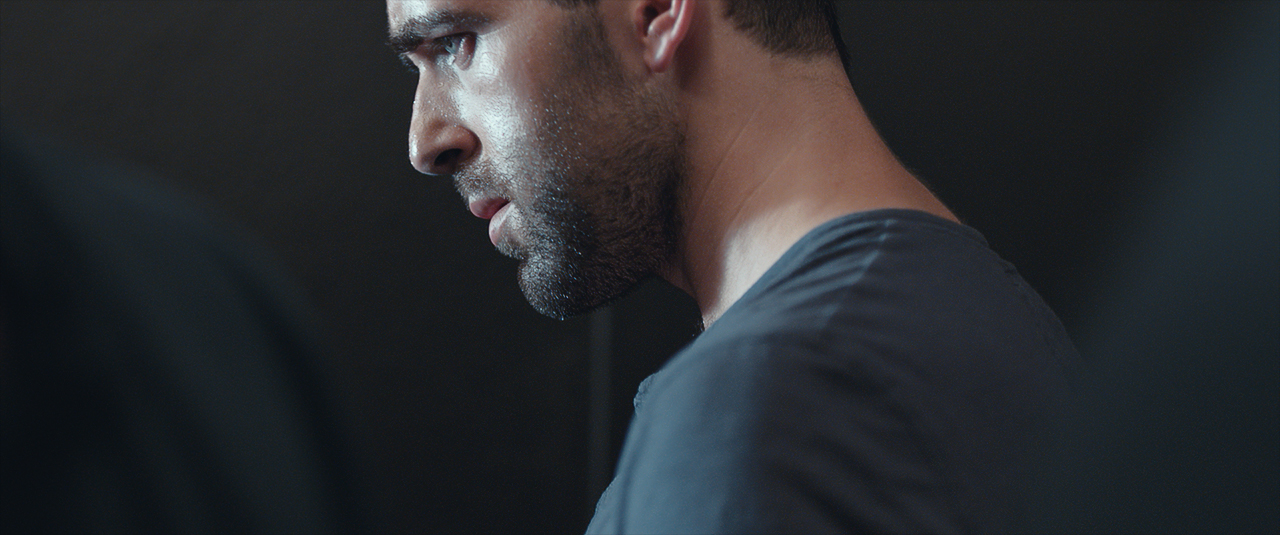
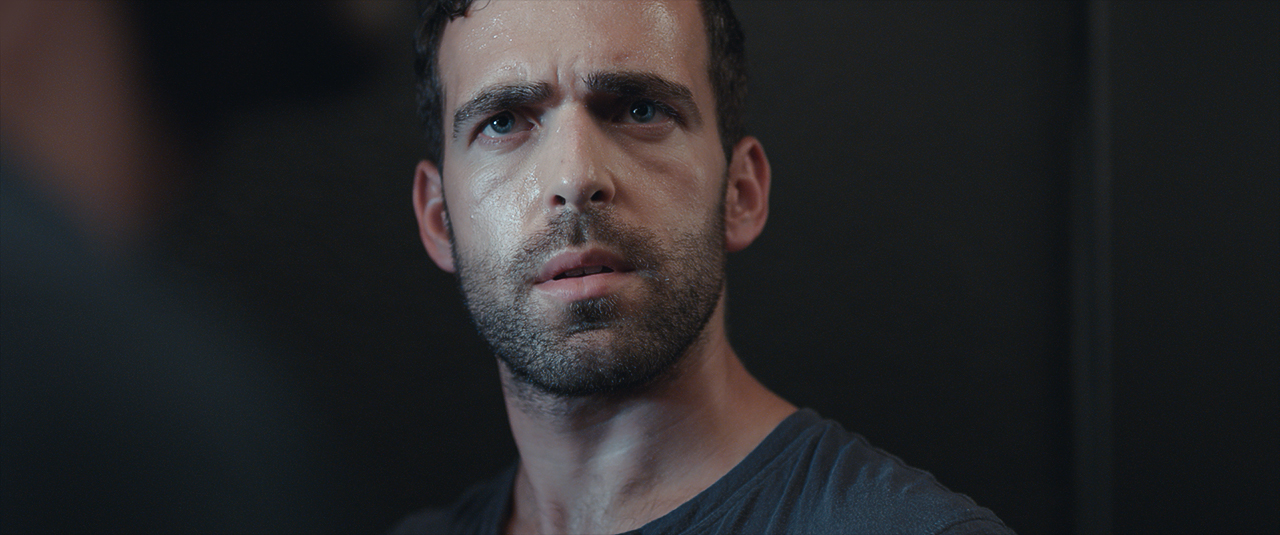
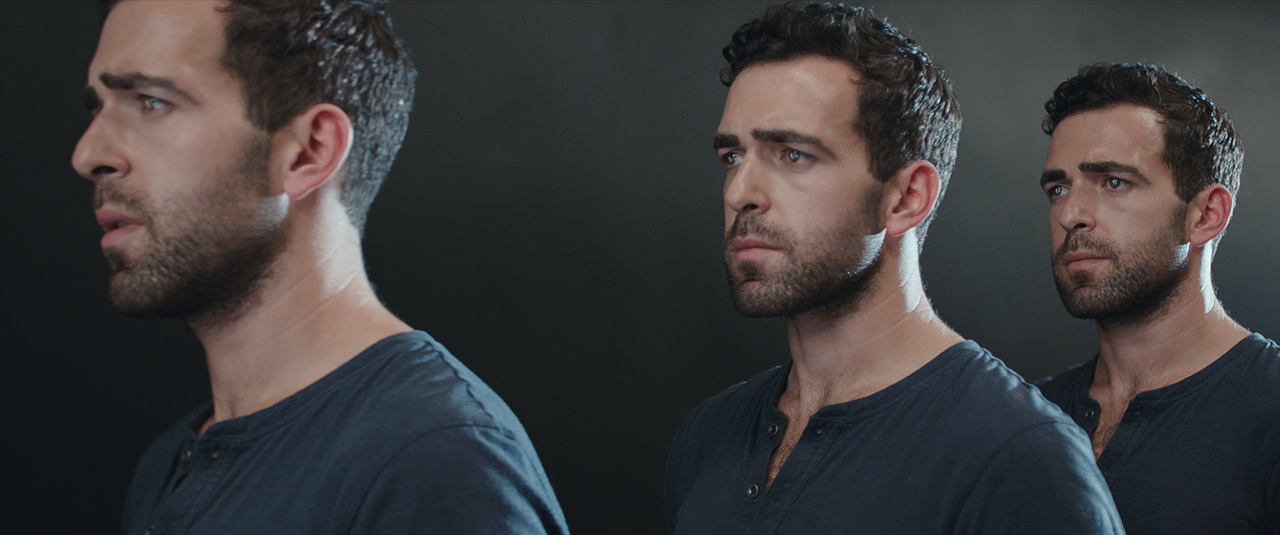



The Process
–– 03Each scene in The Chamber required a custom lighting setup to harmonize the concept that the light source itself would always represent the current state of technology in each scene.. This once again required the collaboration with the ultra-talented folks at VT Pro Design - specifically the great Michael Fullman - and paired their team with master Cinematographer Doctor Joseph Picard to create some very memorable imagery which collectively supported the narrative of the film.
This narrative, from a visual standpoint, was based on a series of signature images that Munkowitz had imagined and weaved into the final script - so in a way the film may be abstractly autobiographical to him. These images were supported with photos and styleframes and compiled into a huge Pinterest board for reference and inspiration. The team then took that reference board and built a very detailed storyboard and shot list from it, and then most of the scenes were pre-visualized in Maya. Through that process they were able to plan details of the character placement, camera path, lensing, lighting, location and set requirements, prop construction and even editorial style.
The actors who were chosen to play each part were paramount to communicating such an abstract concept.. In the casting session, the wonderful Victor Mazzone nailed the part of the Principal Male with his expressive face and astute physical acting. The Principal Female role was awarded to the beautiful Jessica Blackmore, who's intense and emotional eyes were perfect for the role of the future projection.. Lastly, the Young Principal Male was played by Austin Dean, who at such a young age showed amazing composure and emotional responses for the key scenes he was put into.
The score for the film, which was equally as vital as any other component, was composed by the amazing Keith Ruggiero aka SoundsRed - who together with Munkowitz was crafting out the soundscape during Pre-Production and continued to develop it as the shoot was approaching. Because there was not dialogue to take cue from, having the music at that stage was very helpful to crafting the cinematic tones in harmony and was paramount in capturing the tone of the shots during the shoot and refining afterwards in post-production.
The film was shot raw with the Alexa XT, lensed with Master Primes, Master Diopters and a Fuji Cabrio 19-90. It was taken to Glassworks in London for grade, where Munkowitz and Dr. Picard worked with the amazing Colorist Matt Hare while he exquisitely enhanced and massaged each frame.
This narrative, from a visual standpoint, was based on a series of signature images that Munkowitz had imagined and weaved into the final script - so in a way the film may be abstractly autobiographical to him. These images were supported with photos and styleframes and compiled into a huge Pinterest board for reference and inspiration. The team then took that reference board and built a very detailed storyboard and shot list from it, and then most of the scenes were pre-visualized in Maya. Through that process they were able to plan details of the character placement, camera path, lensing, lighting, location and set requirements, prop construction and even editorial style.
The actors who were chosen to play each part were paramount to communicating such an abstract concept.. In the casting session, the wonderful Victor Mazzone nailed the part of the Principal Male with his expressive face and astute physical acting. The Principal Female role was awarded to the beautiful Jessica Blackmore, who's intense and emotional eyes were perfect for the role of the future projection.. Lastly, the Young Principal Male was played by Austin Dean, who at such a young age showed amazing composure and emotional responses for the key scenes he was put into.
The score for the film, which was equally as vital as any other component, was composed by the amazing Keith Ruggiero aka SoundsRed - who together with Munkowitz was crafting out the soundscape during Pre-Production and continued to develop it as the shoot was approaching. Because there was not dialogue to take cue from, having the music at that stage was very helpful to crafting the cinematic tones in harmony and was paramount in capturing the tone of the shots during the shoot and refining afterwards in post-production.
The film was shot raw with the Alexa XT, lensed with Master Primes, Master Diopters and a Fuji Cabrio 19-90. It was taken to Glassworks in London for grade, where Munkowitz and Dr. Picard worked with the amazing Colorist Matt Hare while he exquisitely enhanced and massaged each frame.
–– 03
The Process Film
–– 04The Hallway Intro
–– 05The Intro Hallway scene is meant to build tension as the film begins - the act of waiting in line does that simply itself - and in context the sense of anticipation and tension building with each person disappearing into a void and not returning was meant to make our Principal uncomfortable. Throw into the mix a wild lighting environment with strobing lights across each character - and at the head of the line, a mysterious space that spills shards of frenzied light and mesmerizing laser patterns, it only served to heighten the tension.
To do so, the team built two counteracting lighting environments. The chamber light at the end of the hall and the surrounding hallway lighting counterbalancing each other - when something startling happened in the chamber the hall lighting would cascade and swell in a manner intended to sooth the cued participants. The result was a confusingly tense lighting environment, and its purpose was to be triggering conflicting thoughts. They were sweaty with heavy breath, and that was easy for them because the hall was well over 100 degrees fahrenheit.
The hallway was built out on a location, ironically at an old correctional facility.. It was painted completely black, and the house lighting was removed. At the end of the hall was an exit door which was tented with black out to block the daylight and create a controlled space to simulate the Chambers lighting. The hot LA sun quickly turned the tent into a oven perfect for the characters motivation. Also, we had the walls sprayed down with water to enhance the dank, dense feeling and to add a little sparkle.
Cowboy Shane Salyards, the fearless gaffer, sourced about 72 Vintage Lunestra Tungsten filament fixtures. He and his team rigged those to the ceiling and wired them individually to a dimmer rack. This is an fantastic fixture choice to counter the immediacy of the modern LED’s that line the walls of the chamber. Lunestra’s have a very long single filament, they burn slow and warm, producing a beautifully organic strike and decay rate. This lighting array created the soft, kinetic lighting that distorts the characters features and guides them to their first encounter with the chamber.
To do so, the team built two counteracting lighting environments. The chamber light at the end of the hall and the surrounding hallway lighting counterbalancing each other - when something startling happened in the chamber the hall lighting would cascade and swell in a manner intended to sooth the cued participants. The result was a confusingly tense lighting environment, and its purpose was to be triggering conflicting thoughts. They were sweaty with heavy breath, and that was easy for them because the hall was well over 100 degrees fahrenheit.
The hallway was built out on a location, ironically at an old correctional facility.. It was painted completely black, and the house lighting was removed. At the end of the hall was an exit door which was tented with black out to block the daylight and create a controlled space to simulate the Chambers lighting. The hot LA sun quickly turned the tent into a oven perfect for the characters motivation. Also, we had the walls sprayed down with water to enhance the dank, dense feeling and to add a little sparkle.
Cowboy Shane Salyards, the fearless gaffer, sourced about 72 Vintage Lunestra Tungsten filament fixtures. He and his team rigged those to the ceiling and wired them individually to a dimmer rack. This is an fantastic fixture choice to counter the immediacy of the modern LED’s that line the walls of the chamber. Lunestra’s have a very long single filament, they burn slow and warm, producing a beautifully organic strike and decay rate. This lighting array created the soft, kinetic lighting that distorts the characters features and guides them to their first encounter with the chamber.
–– 05


The Chamber
–– 06The Chamber was built out of over 200 7mm LED Panels, 4 projectors, and two 10 watt full color lasers. All of the LED Panels were directly controlled by a single video source that had endless amounts of live control over. In the physical build it was an incredibly heavy structure, the entire Volume was supported on chain motors from steel beams. To get the desired curve of the 16' in diameter chamber, they plasma cut and rolled custom steel brackets that held each panel in the desired curve.
All of the panels in the chamber are direct video surfaces with a resolution of 64x64 pixels. The entire chamber itself was a resolution of 1920X396, wrapping around the entire circumference and really placing our principal right in the center of the video environment.
The Projectors were all controlled via separate video feeds from a media server that allowed us to change the content easily and control each projector individually. All of the projectors were cross focused through the center of the chamber to really focus on hitting the principal while centered inside. In addition, they were used more as beam instruments, as they projected high contrast black and white minimal design to really punch through the atmosphere.
Lastly, for the future scenes, they also rigged a couple Laser Projectors in that gap between the panels, and blasted a variety of laser patterns while carefully aiming them away from the Glass so as to not sabotage the entire shoot. The lasers created a rich palette of green hues, and also rendered a distinct aesthetic to key parts of the story – particularly the moments when the Chamber begins to present the future.
All three of the different elements were all controlled together live in repeatable manners so shots could be replicated and practiced. This enabled a very free-form way of shooting, maximizing the content they gathered and for the camera to keep rolling with ample time for iteration and experimentation.
In addition to the large LED panels encompassing the walls, a single cinema fixture was added to the center of the Chamber. Specifically, they rigged a prototype of the Creamsource Sky in the center above the protagonist and were able to dial in the color and intensity of it to match the color of the LED wall precisely over DMX.
Once they got into the Chamber they shoot the scene out from a 360 circular dolly track. Being on the same curved path as the structure itself really embedded the audience into the protagonist interaction with the Chamber. It also created a ton of opportunity for graceful camera movement inside of the tight space.
All of the panels in the chamber are direct video surfaces with a resolution of 64x64 pixels. The entire chamber itself was a resolution of 1920X396, wrapping around the entire circumference and really placing our principal right in the center of the video environment.
The Projectors were all controlled via separate video feeds from a media server that allowed us to change the content easily and control each projector individually. All of the projectors were cross focused through the center of the chamber to really focus on hitting the principal while centered inside. In addition, they were used more as beam instruments, as they projected high contrast black and white minimal design to really punch through the atmosphere.
Lastly, for the future scenes, they also rigged a couple Laser Projectors in that gap between the panels, and blasted a variety of laser patterns while carefully aiming them away from the Glass so as to not sabotage the entire shoot. The lasers created a rich palette of green hues, and also rendered a distinct aesthetic to key parts of the story – particularly the moments when the Chamber begins to present the future.
All three of the different elements were all controlled together live in repeatable manners so shots could be replicated and practiced. This enabled a very free-form way of shooting, maximizing the content they gathered and for the camera to keep rolling with ample time for iteration and experimentation.
In addition to the large LED panels encompassing the walls, a single cinema fixture was added to the center of the Chamber. Specifically, they rigged a prototype of the Creamsource Sky in the center above the protagonist and were able to dial in the color and intensity of it to match the color of the LED wall precisely over DMX.
Once they got into the Chamber they shoot the scene out from a 360 circular dolly track. Being on the same curved path as the structure itself really embedded the audience into the protagonist interaction with the Chamber. It also created a ton of opportunity for graceful camera movement inside of the tight space.
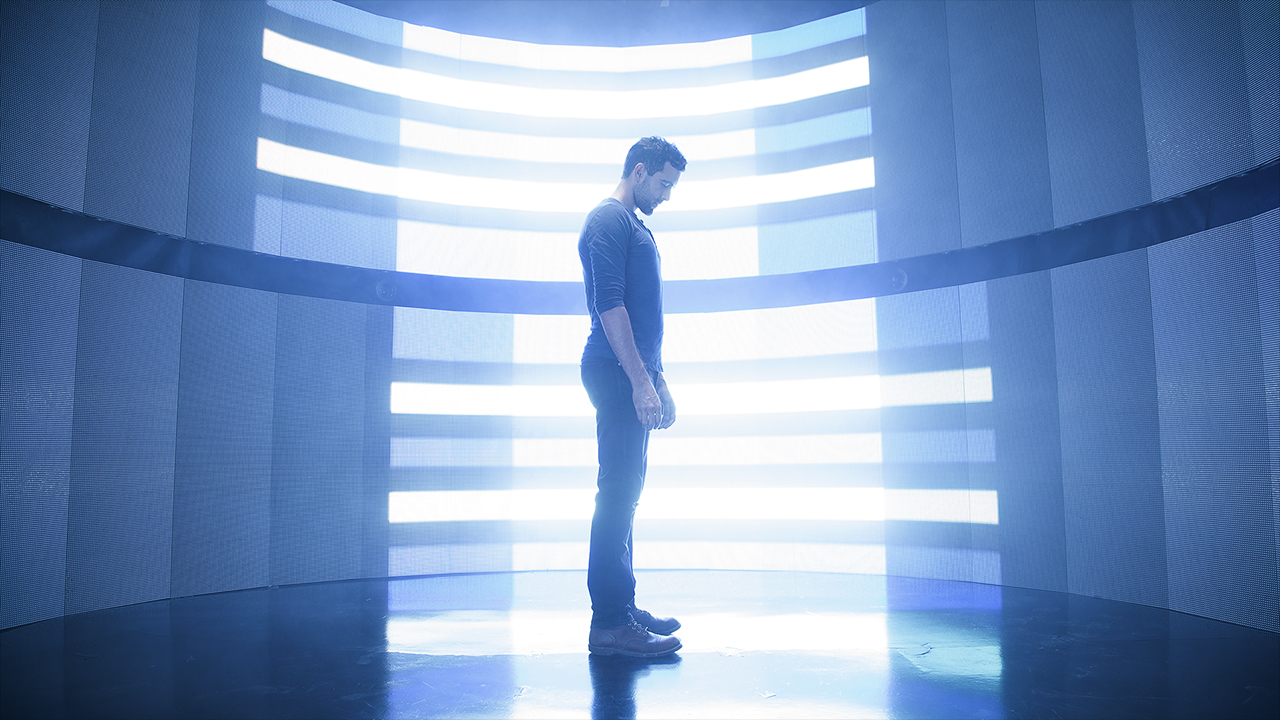
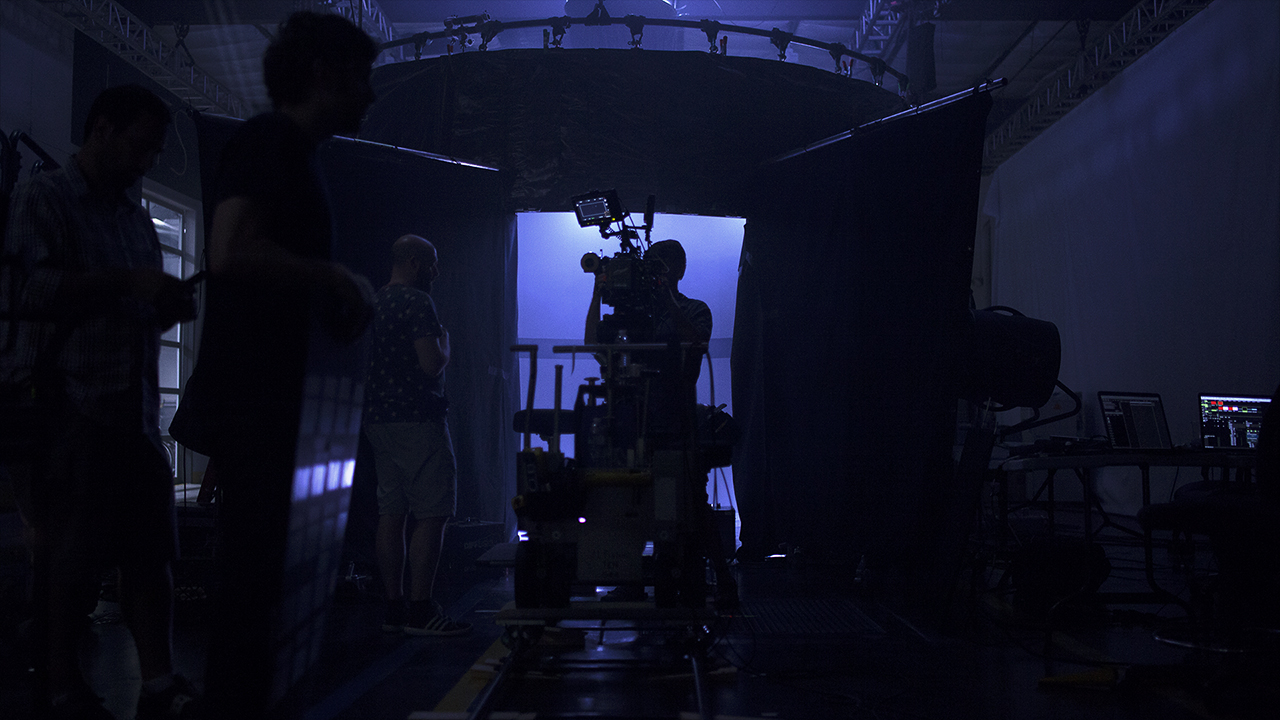
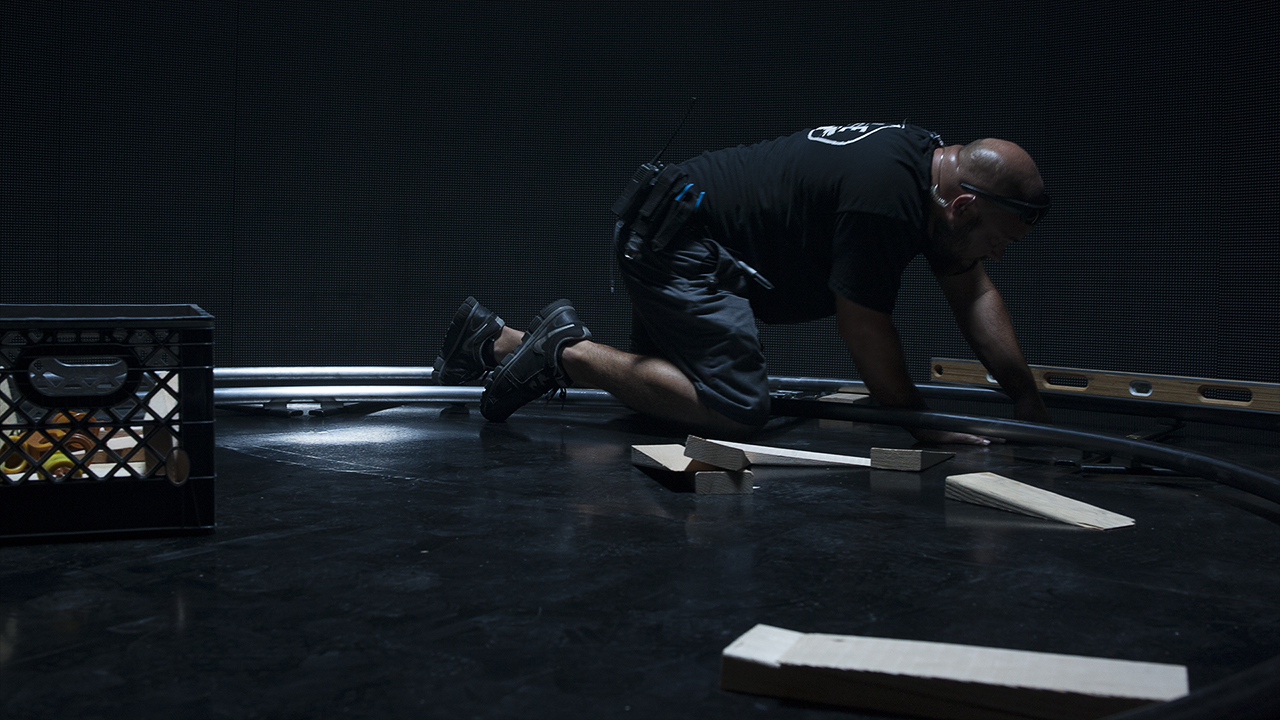
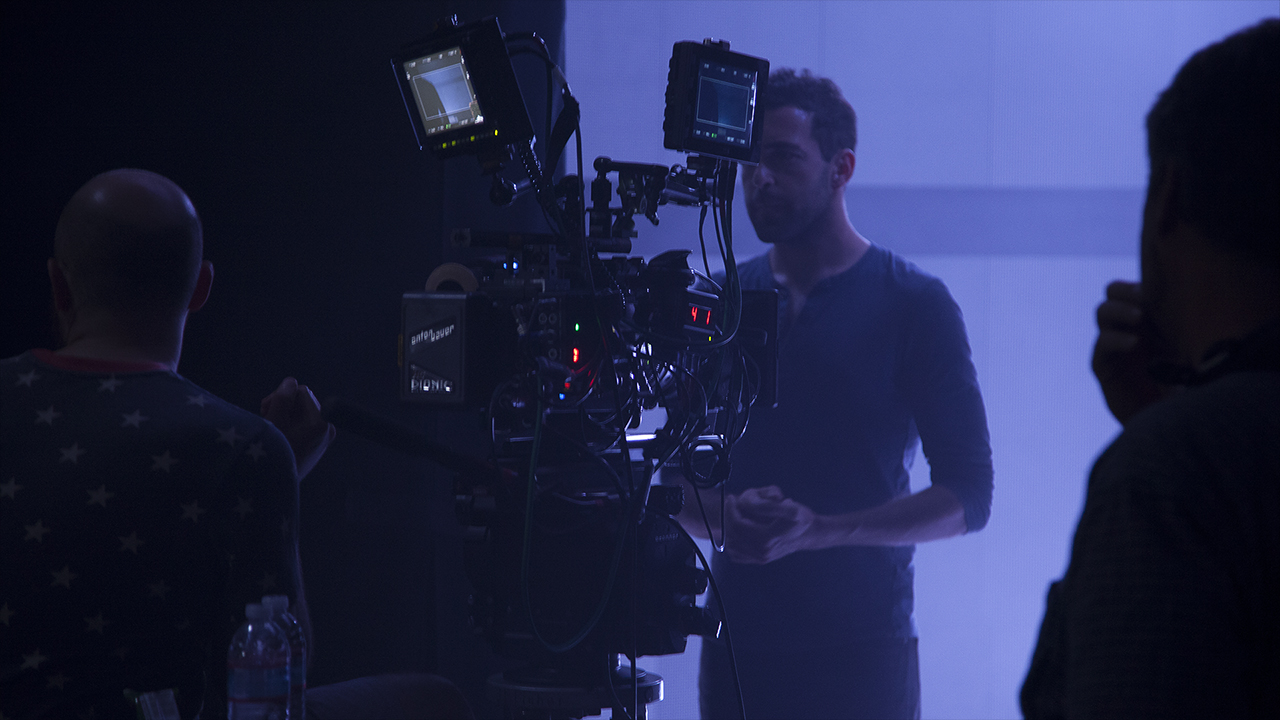
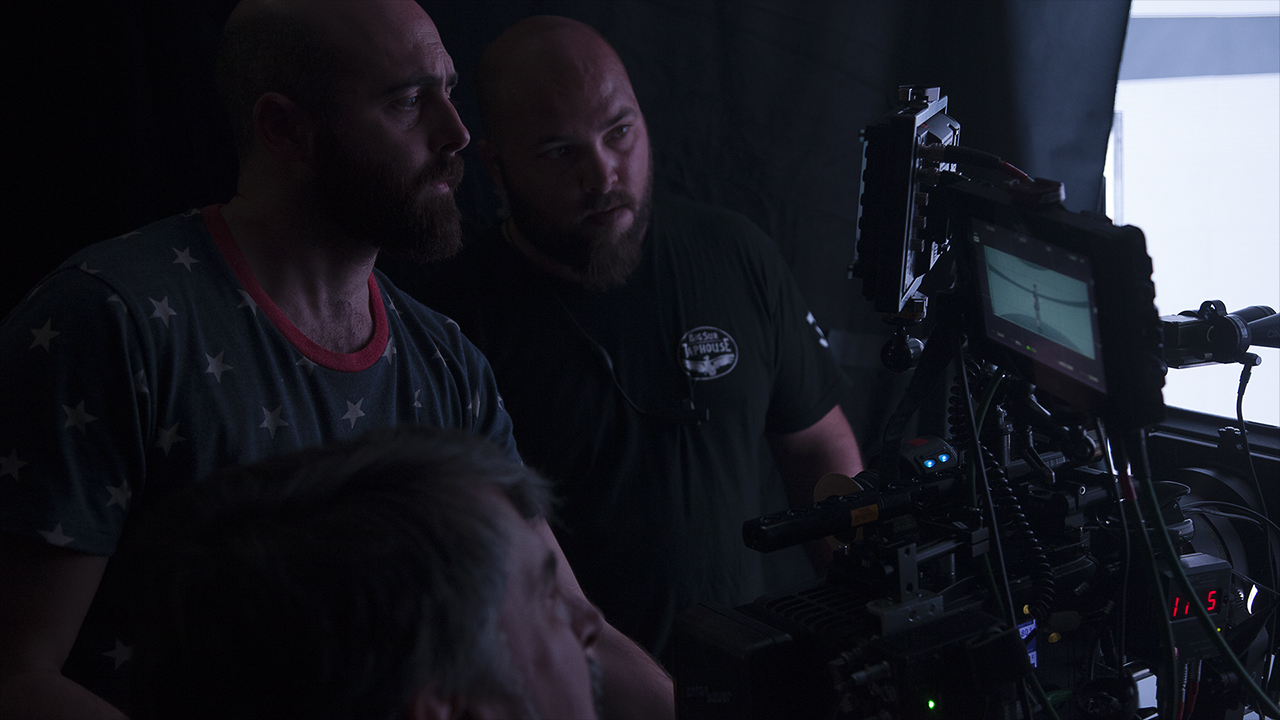

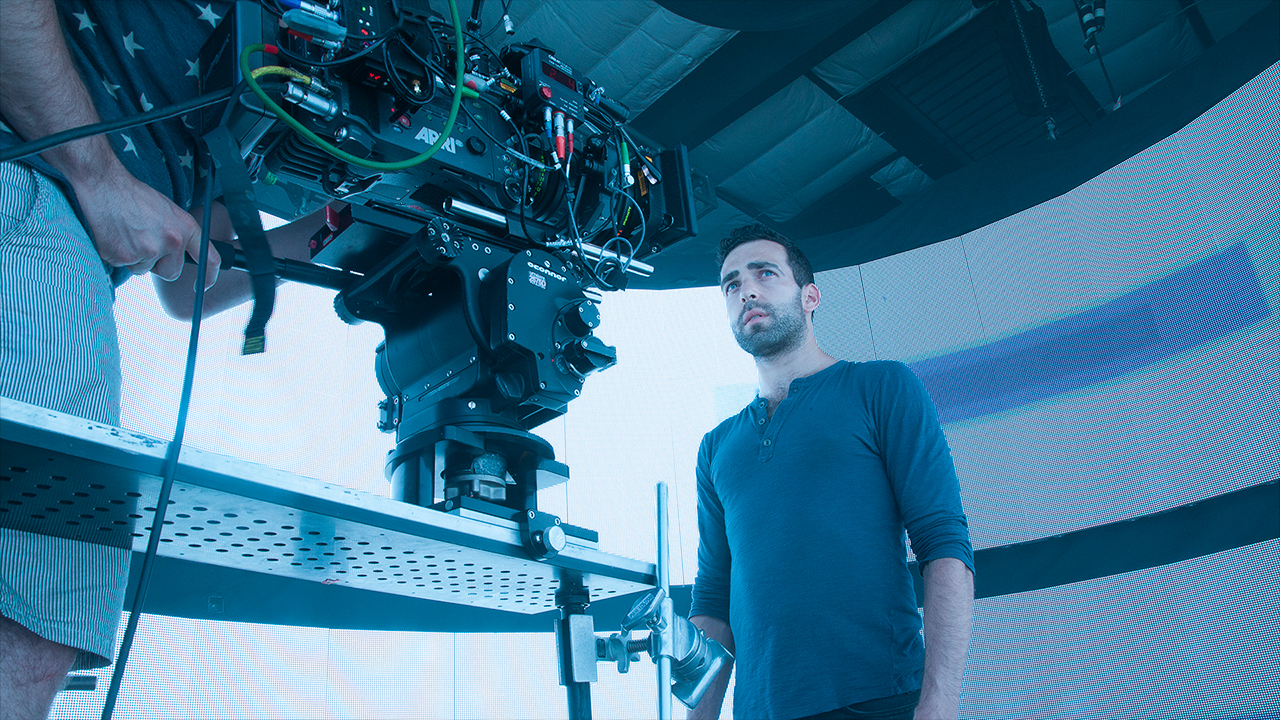
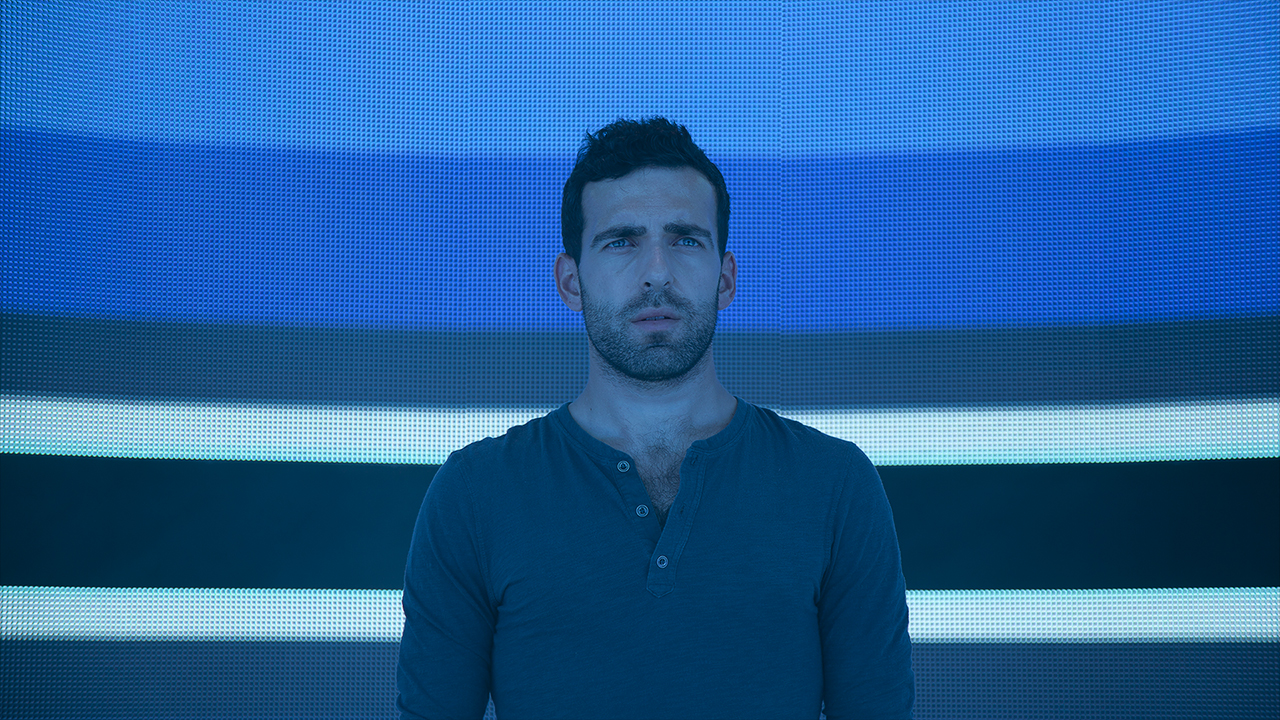

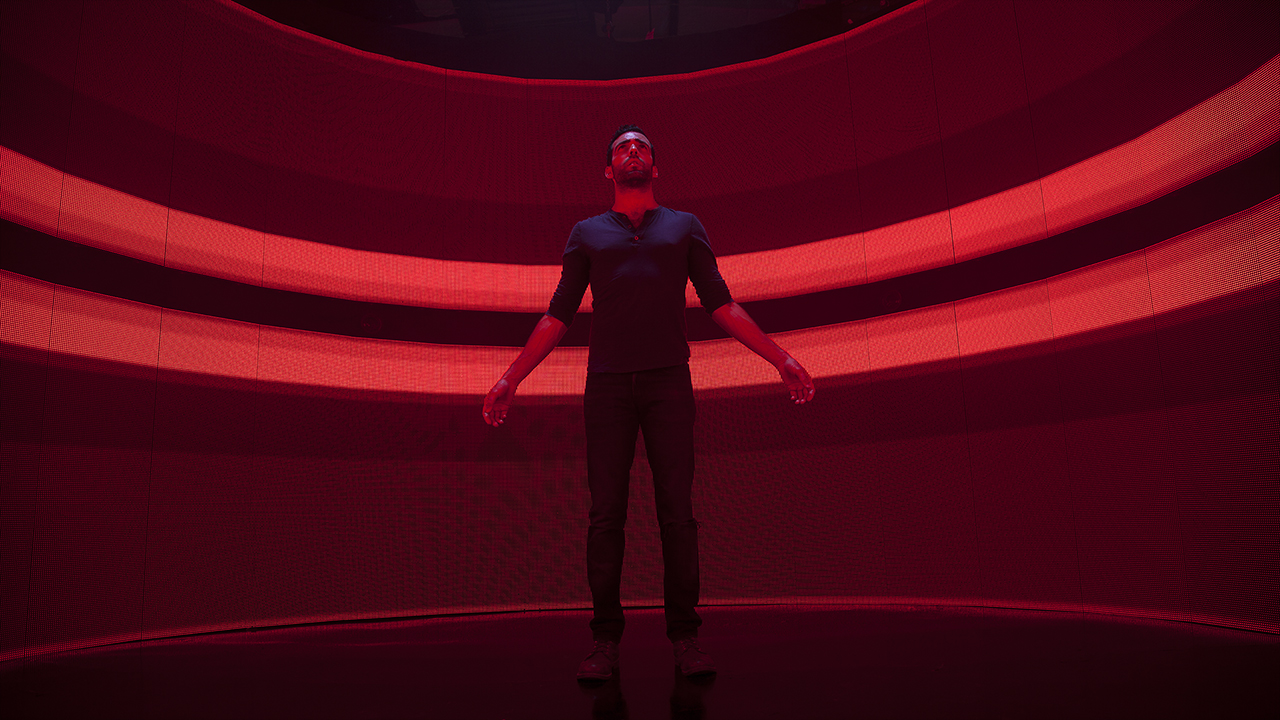
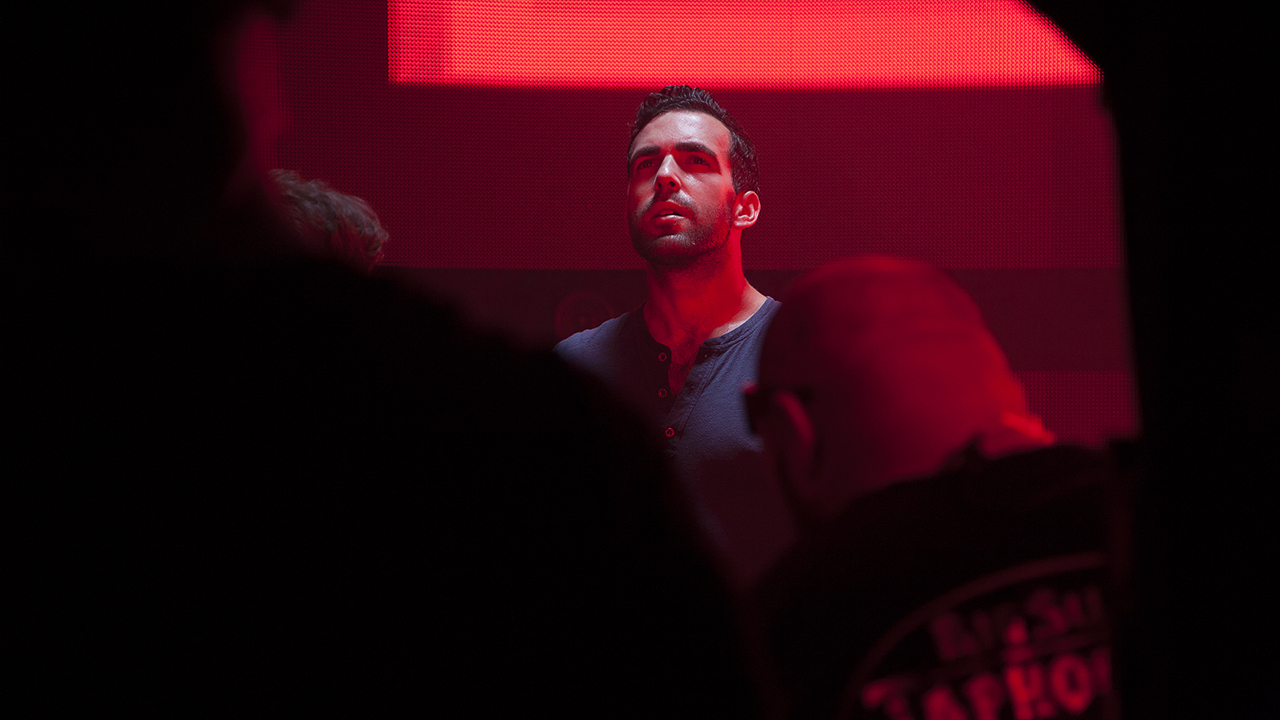

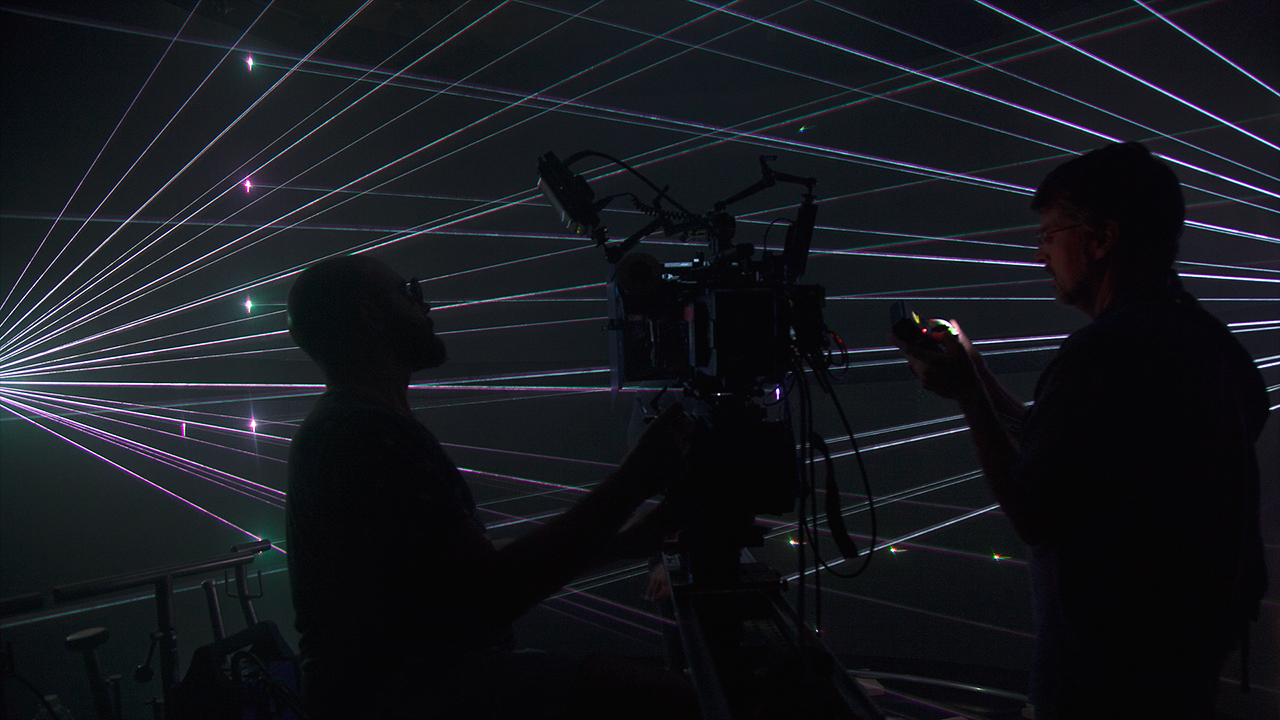
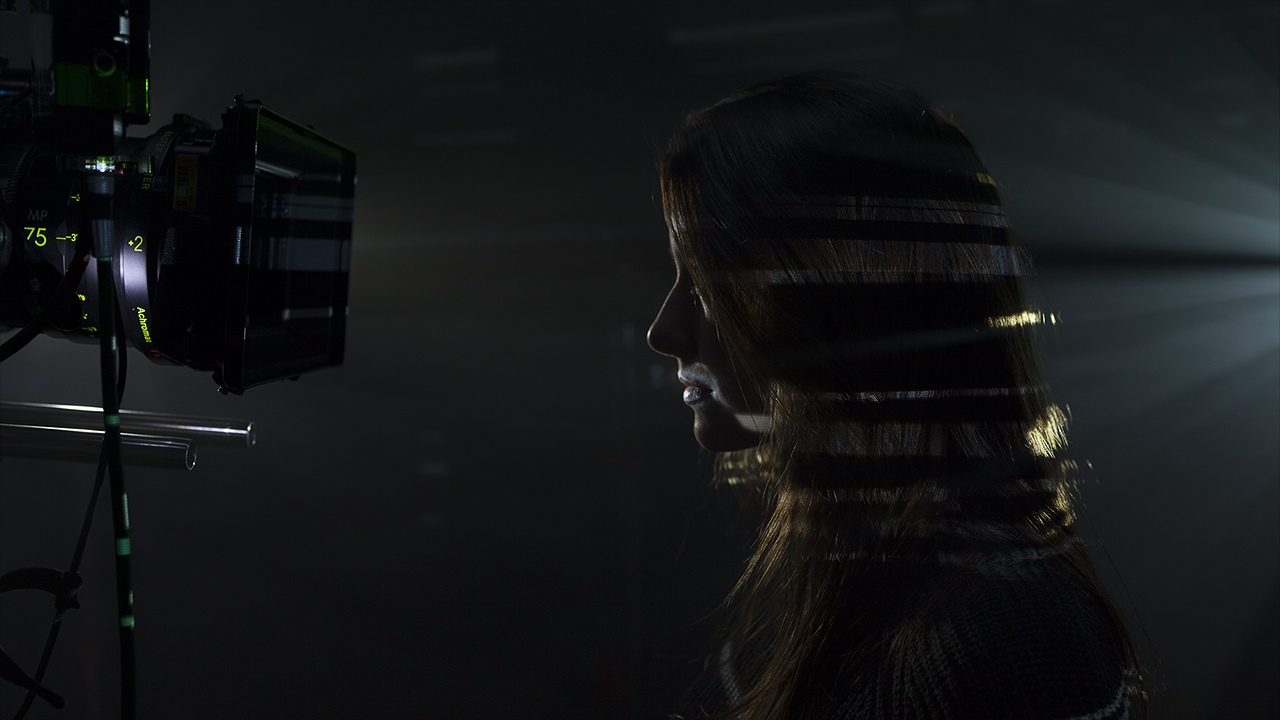

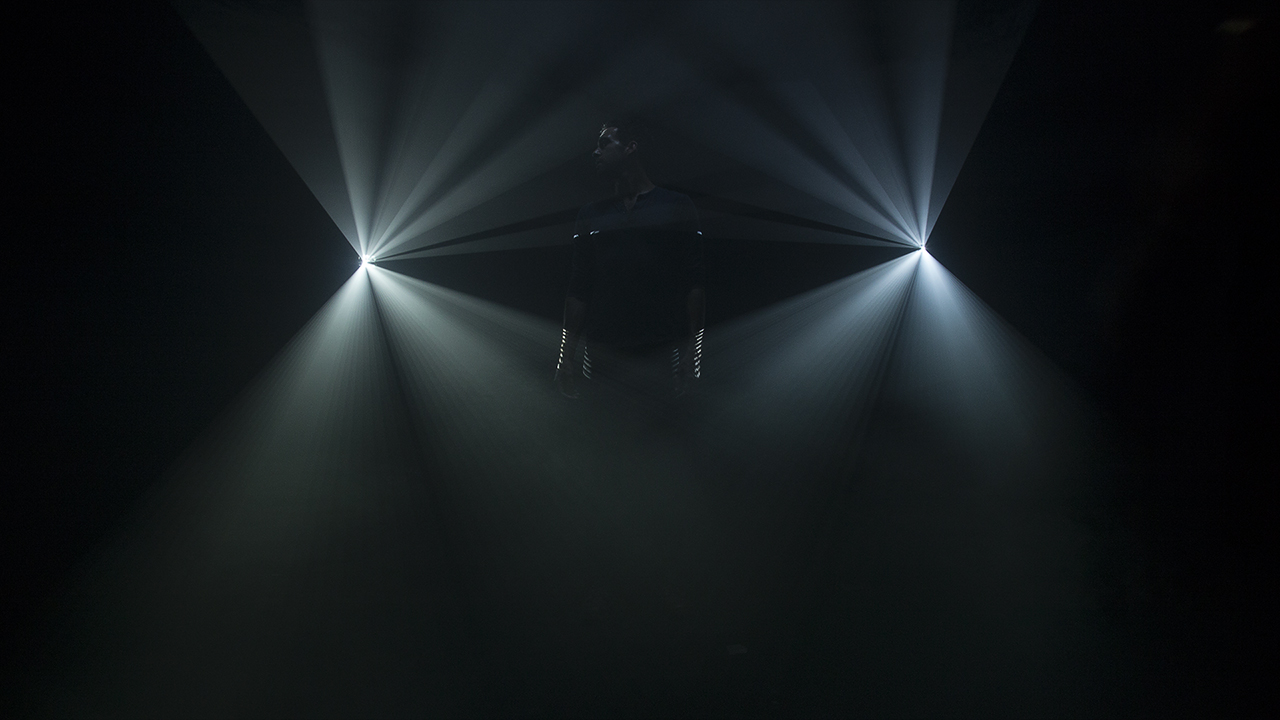
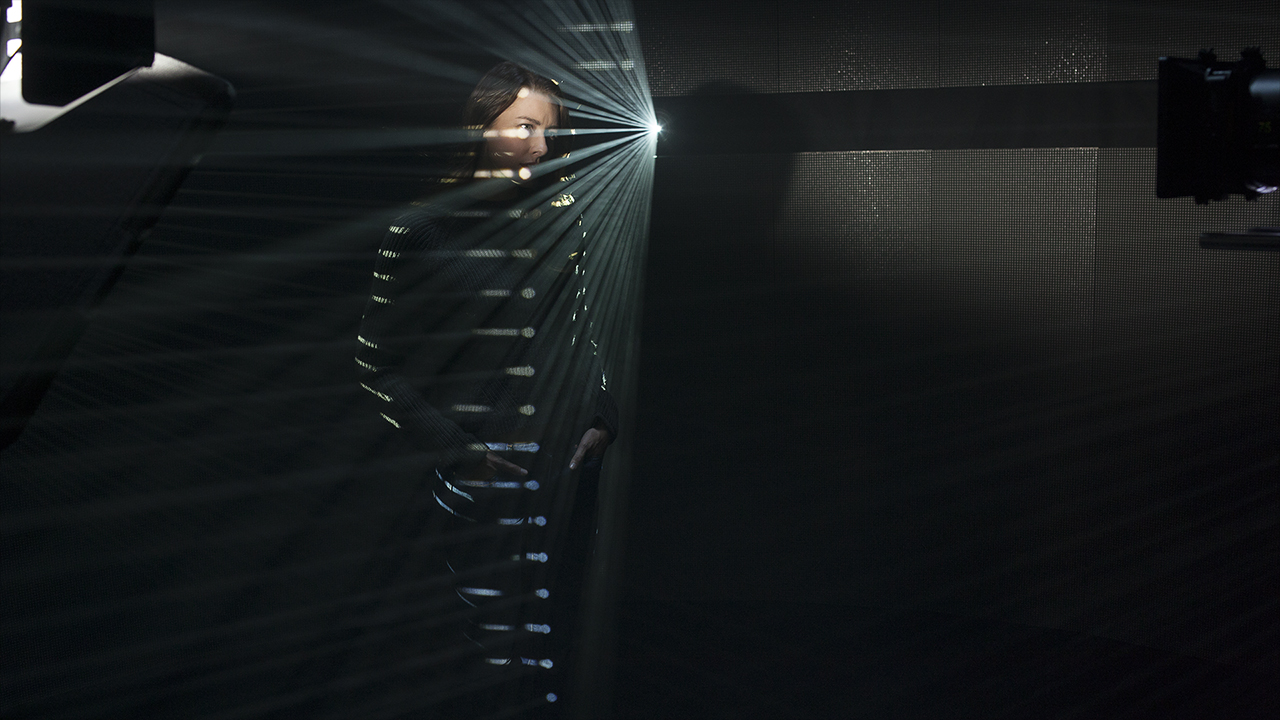
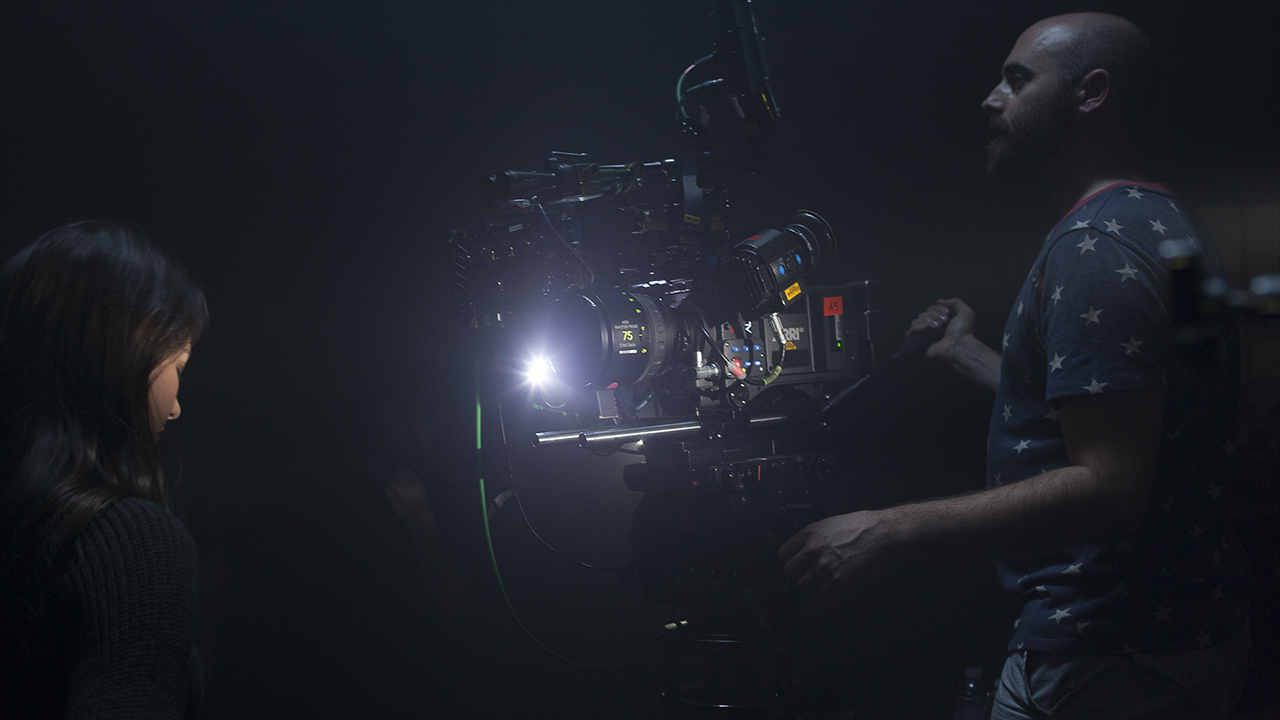
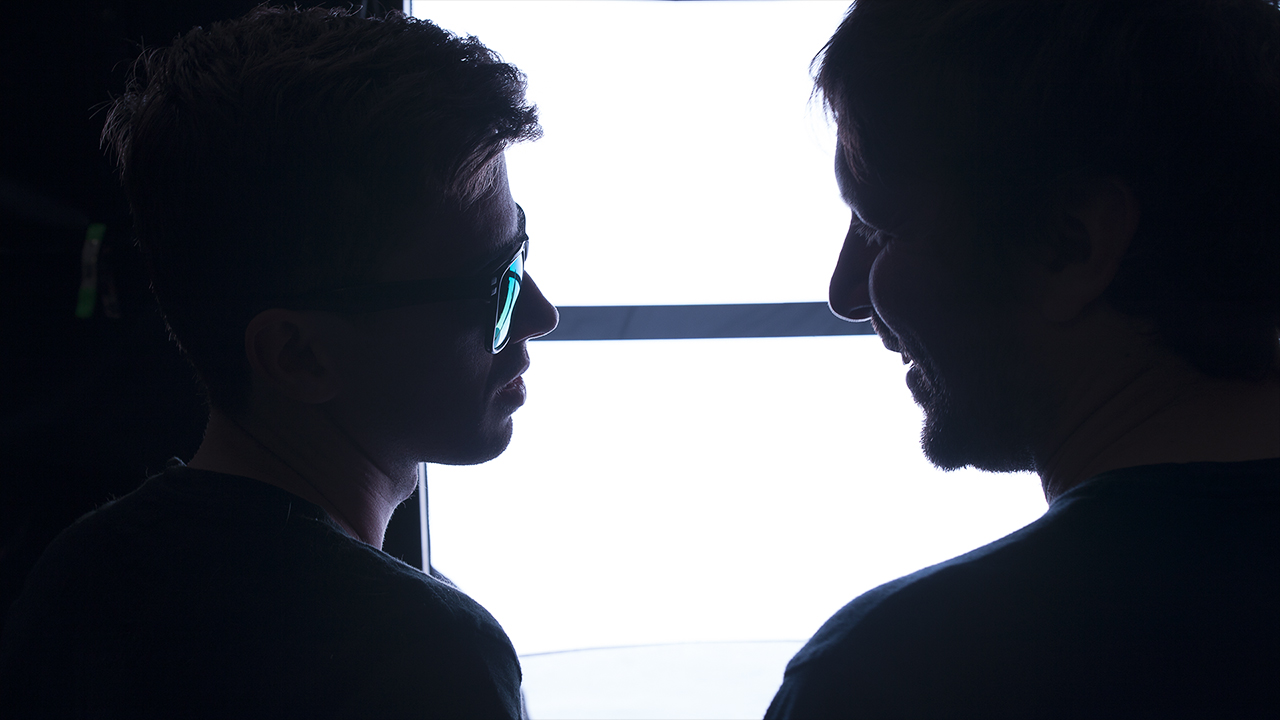
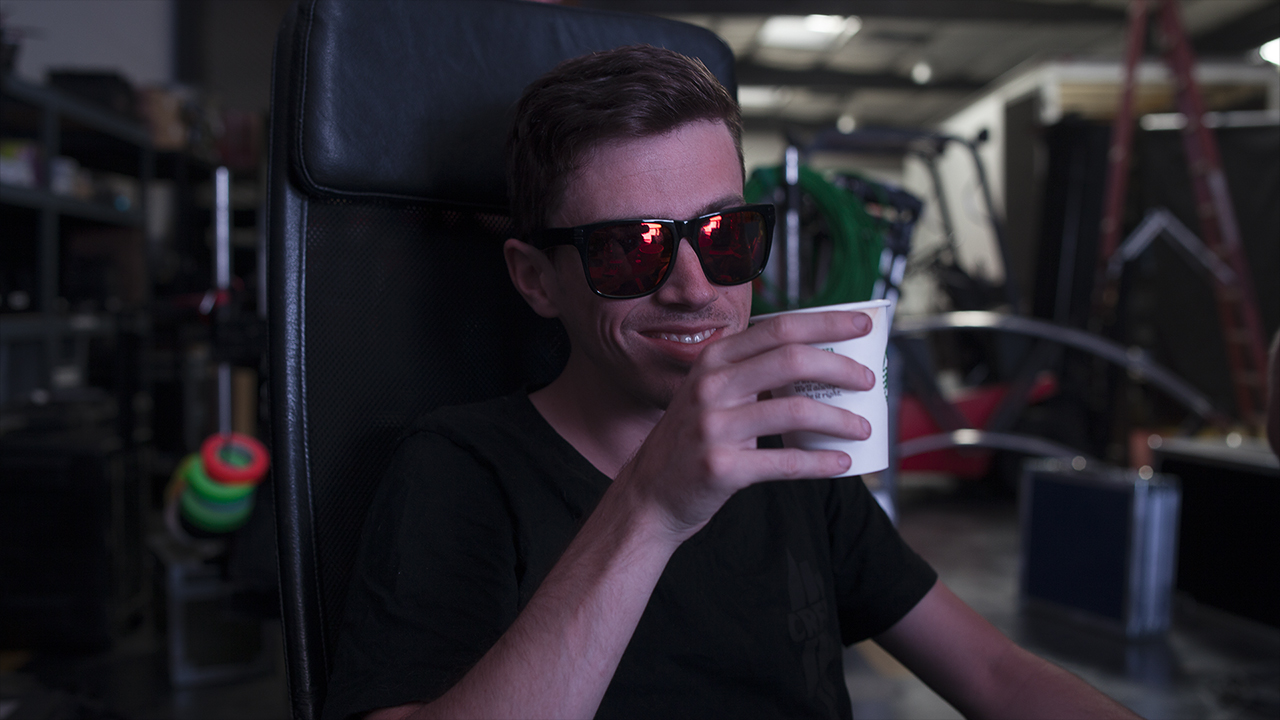
The Orphanage
–– 07The Orphanage is a flashback to the protagonist childhood and perhaps the precursor to the chamber procedures. It was important that this felt more like a dream than an actual place. To accomplish this, they took it into a moon-light interior, large streams of light pouring through the windows and the environment coated in a heavy treatment of haze. Arne Knudson and his team built the beds with translucent materials and placed child mannequins on them, concealing them with clear film to detach them from the child.
Michael Fullman lined the beds with LED tape on their base and inside the four walls. Each line of tape was then wired for separate control so patterns and chases could be run through the array. Each bed was then controlled as well with video content that was decoded directly to DMX for control, and then recorded into a cueing process so that cues could be written and played back as complete sequences for playback and filming. They also had free form control of each bed so they could experiment with looks and light output on the fly.
Michael Fullman lined the beds with LED tape on their base and inside the four walls. Each line of tape was then wired for separate control so patterns and chases could be run through the array. Each bed was then controlled as well with video content that was decoded directly to DMX for control, and then recorded into a cueing process so that cues could be written and played back as complete sequences for playback and filming. They also had free form control of each bed so they could experiment with looks and light output on the fly.
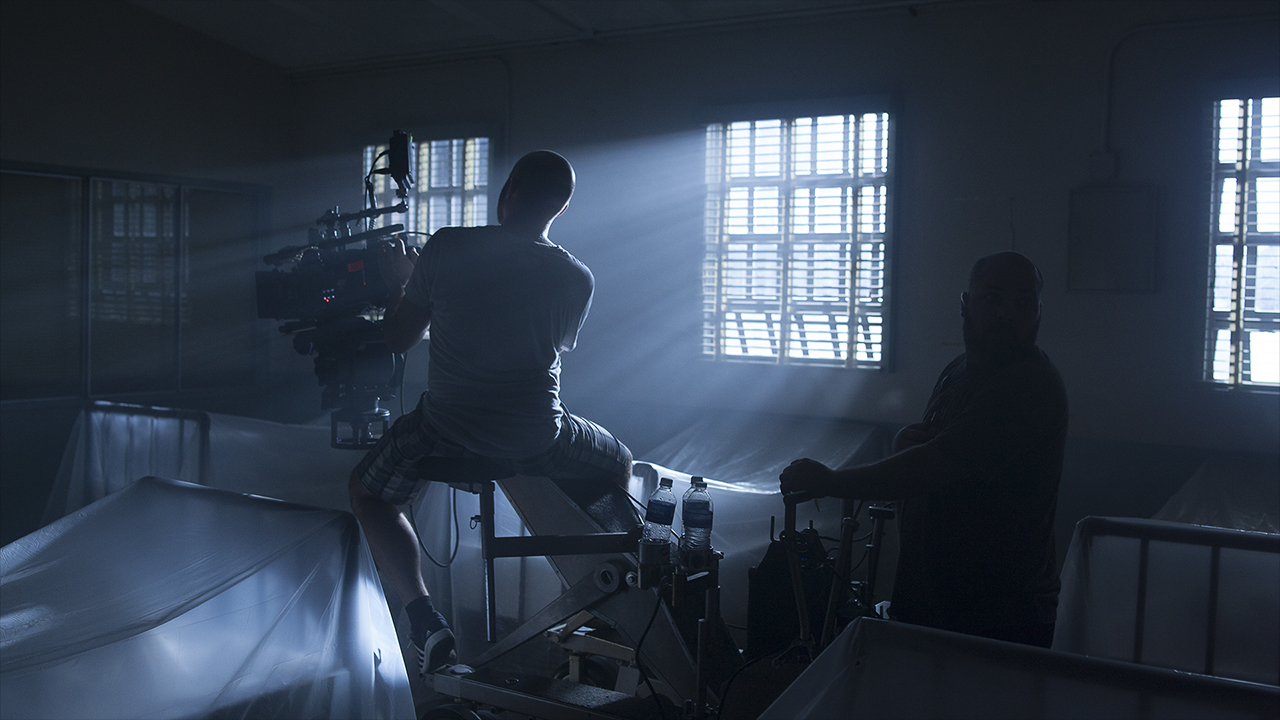

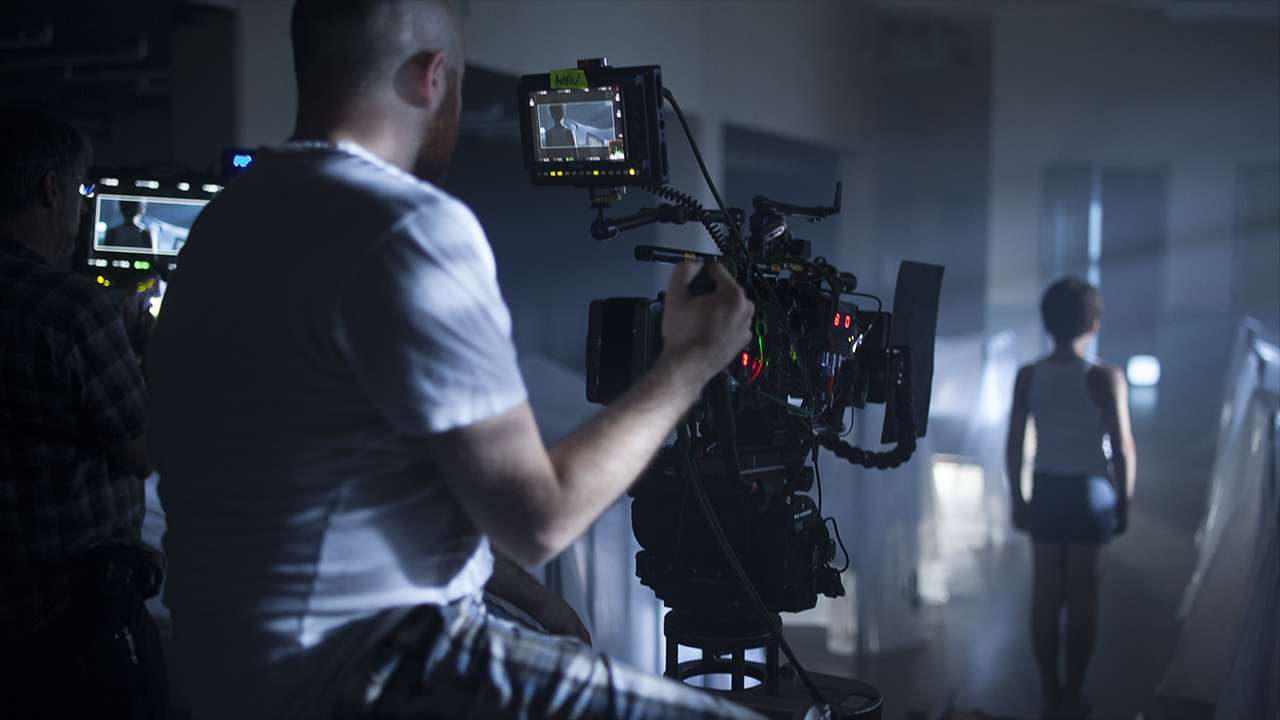
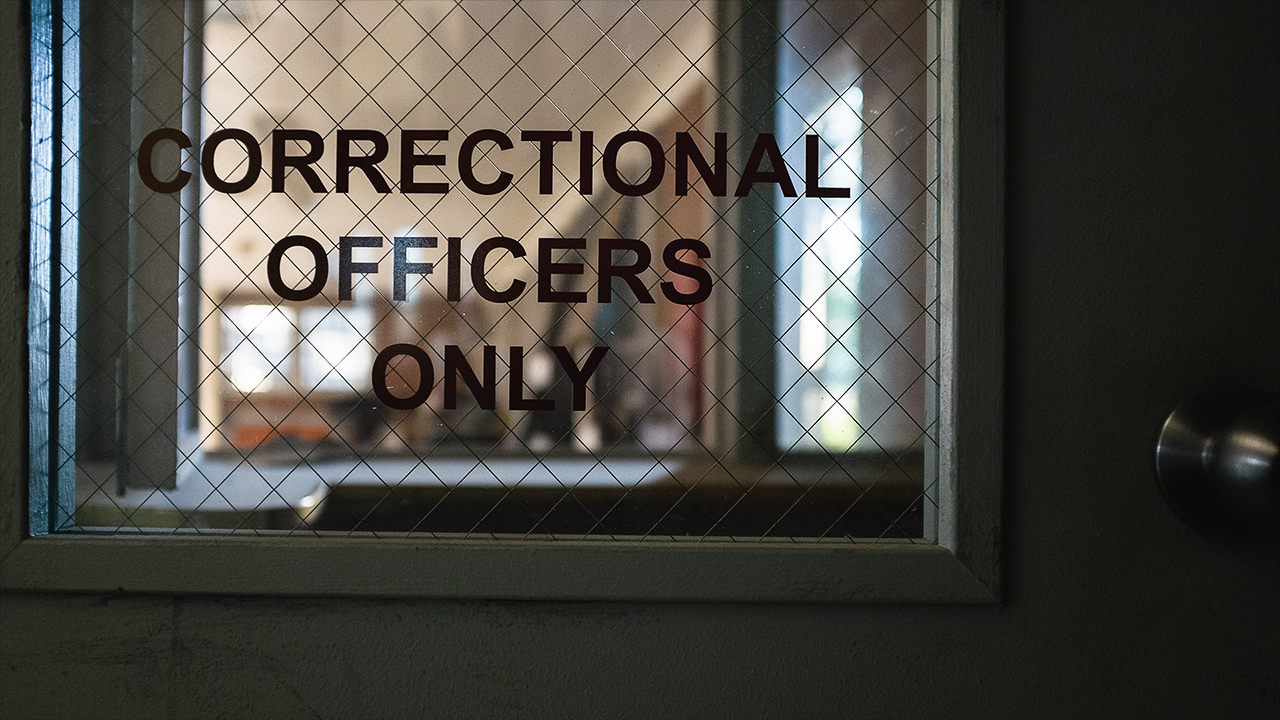
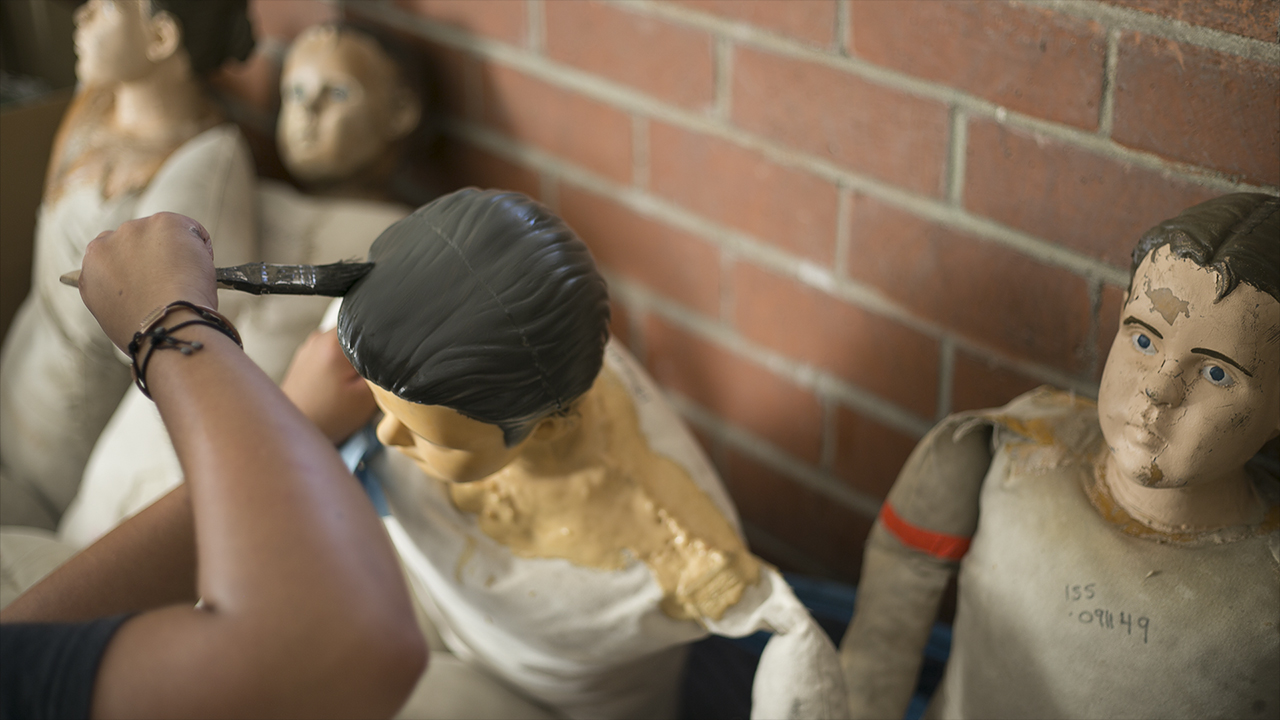
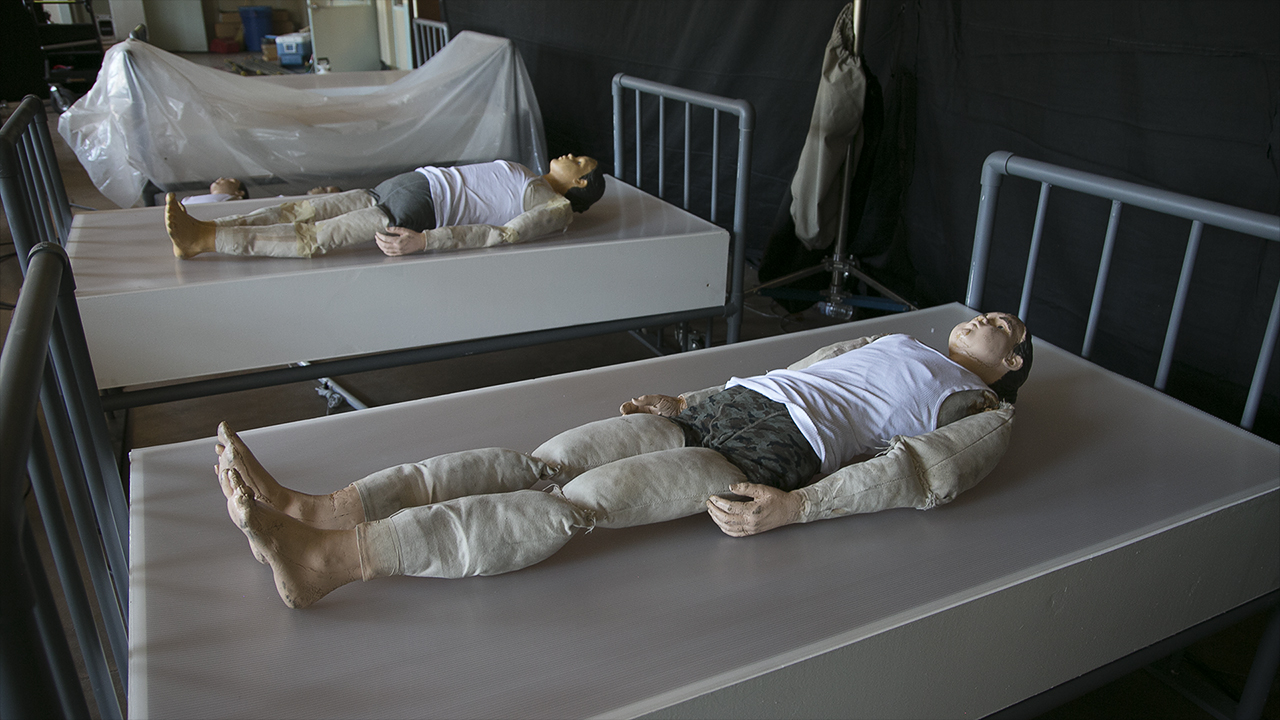


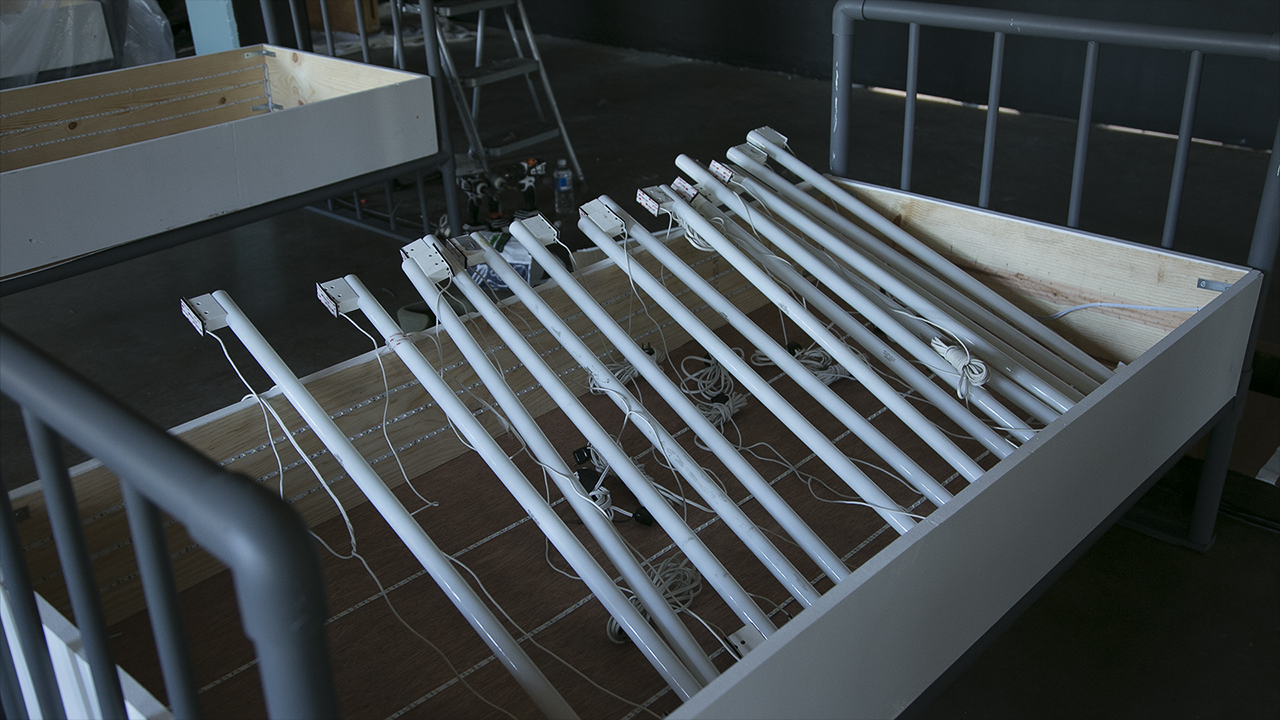
The Bathroom Mirror
–– 08The Bathroom Mirror was the only scene in the film where the lighting wasn’t hero - instead giving way to a custom prop that was both challenging in its build and exciting in its results.. Munko has been obsessed with fragmented reflections for a long long time, his favorite being through shattered mirrors. So for the Archetype scene where the Hero Man gazes upon his multiple avatars for the first time, the team wanted to align his eye-line to create a series of augmented eyes staring back at him. So the big challenge was to create a Mirror prop that achieved this, and so they sought out the great Arne Knudson to custom break each facet, fasten them to a flexible backing and then curved the mirror to direct where the reflections would appear.
The result - with a little help from Spypost to track and insert the digital touches to the avatar eyes – was exactly what was storyboarded and was definitely a highlight of the shoot when the initial shots yielded such encouraging results. This thematically echoed the array of beds in the orphanage and the multiplicity in the final scene. The Bathroom scene was an introspective moment of reflection for the protagonist, where he has a moment to calm and collect his thoughts. The water from washing his face bridges a transition from the underwater scene beforehand. This was the only daylit scene, we streamed in a crisp and cool hard light into a hazy white room for a monochromatic and tranquil look.
The result - with a little help from Spypost to track and insert the digital touches to the avatar eyes – was exactly what was storyboarded and was definitely a highlight of the shoot when the initial shots yielded such encouraging results. This thematically echoed the array of beds in the orphanage and the multiplicity in the final scene. The Bathroom scene was an introspective moment of reflection for the protagonist, where he has a moment to calm and collect his thoughts. The water from washing his face bridges a transition from the underwater scene beforehand. This was the only daylit scene, we streamed in a crisp and cool hard light into a hazy white room for a monochromatic and tranquil look.

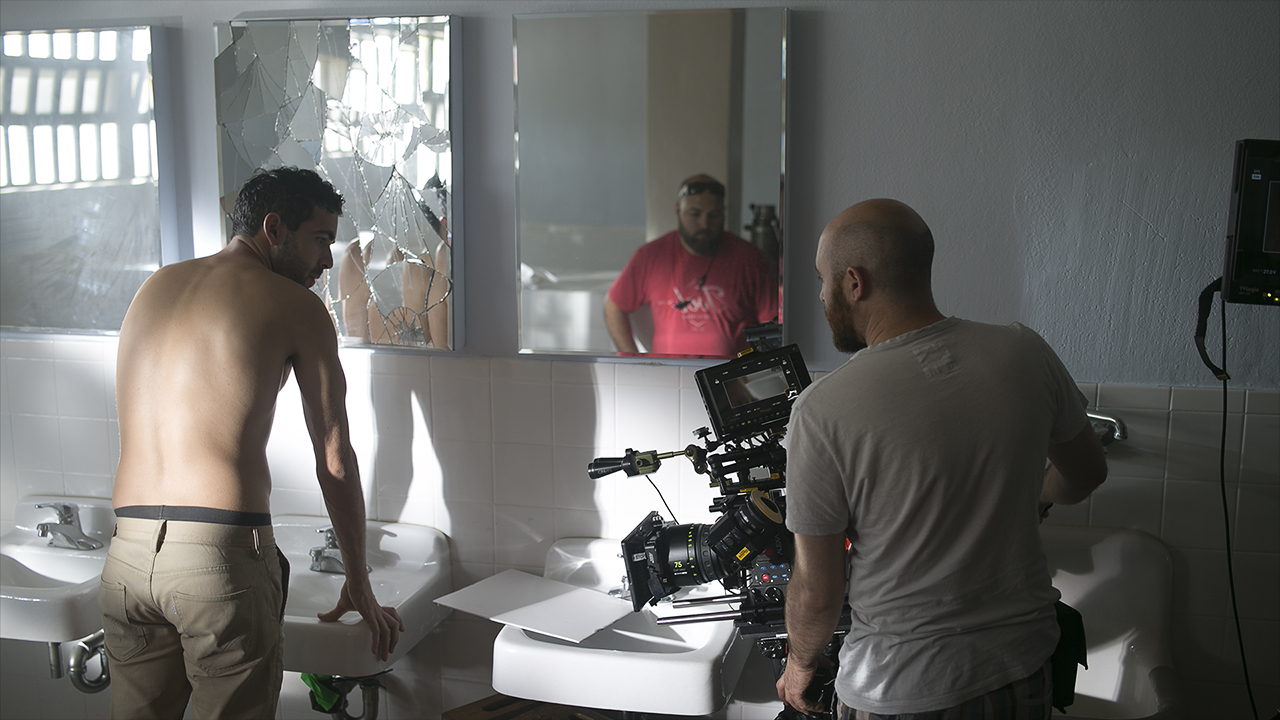


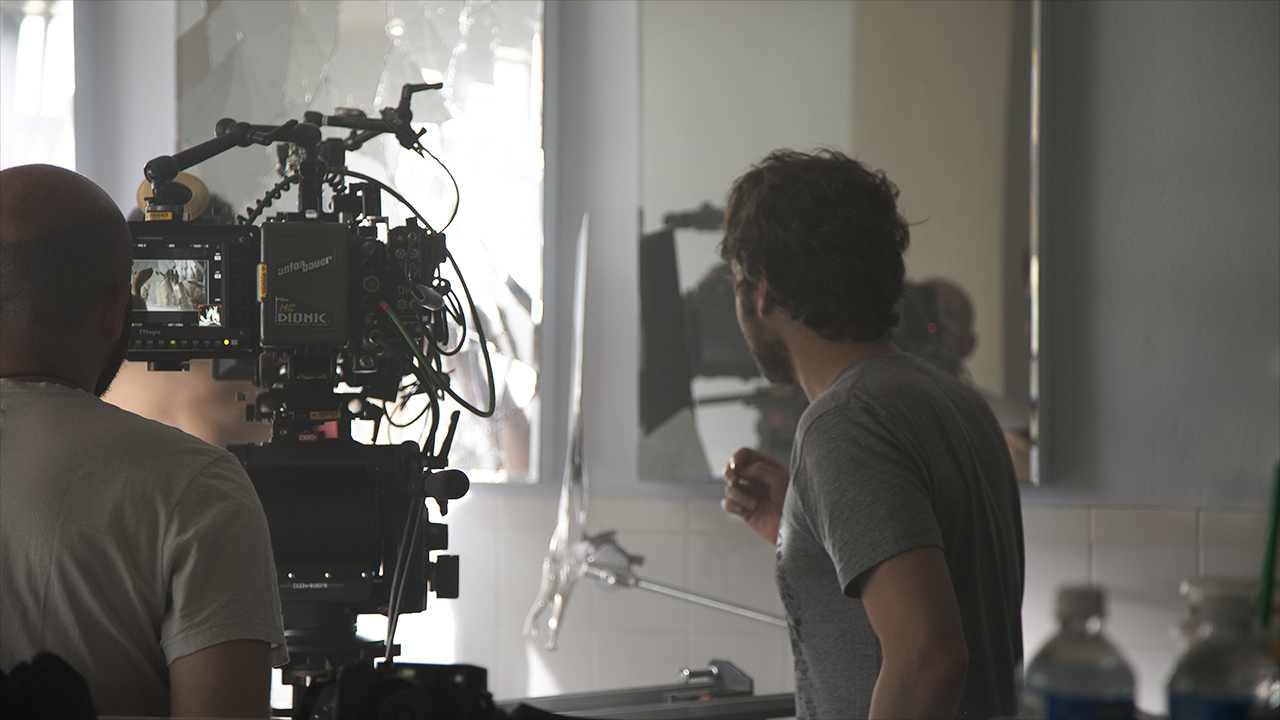
The Underwater Dream
–– 09The Underwater Dream World is like an ethereal representation of the intermingling story lines - it was important that it felt like a unique environment and not like a body of water. The location scout found the perfect pool for the objective, as it had no flat walls or corners and was lined with a light brown pebbly sand texture to appear like a deep-ocean terrain.
The Lighting was key in transforming the pool to an otherworld, as they wanted to keep the walls dark but have soft light that did not create iconic water caustics. For this particular aesthetic, a key light was spanned the pool with a box truss and rigged with a large chimera - to control the falloff they had a very tight metal grid on the chimera.
For the hero dreamscape, when the woman descends to greet the man, they wanted to add more mood to the image. At this point in the shoot the water was starting to get cloudy from all the action - it was like a smoky room, perfect for a volumetric god light, which was placed in the far corner of the pool and colored with a wonderful orange red gel that Cowboy Shane had in his kit - Instant Love.
They shot the scene with the Alexa in a Hydroflex with a cabrio zoom. The team was lucky to have a fabulous team of underwater camera and light technicians.
The Lighting was key in transforming the pool to an otherworld, as they wanted to keep the walls dark but have soft light that did not create iconic water caustics. For this particular aesthetic, a key light was spanned the pool with a box truss and rigged with a large chimera - to control the falloff they had a very tight metal grid on the chimera.
For the hero dreamscape, when the woman descends to greet the man, they wanted to add more mood to the image. At this point in the shoot the water was starting to get cloudy from all the action - it was like a smoky room, perfect for a volumetric god light, which was placed in the far corner of the pool and colored with a wonderful orange red gel that Cowboy Shane had in his kit - Instant Love.
They shot the scene with the Alexa in a Hydroflex with a cabrio zoom. The team was lucky to have a fabulous team of underwater camera and light technicians.
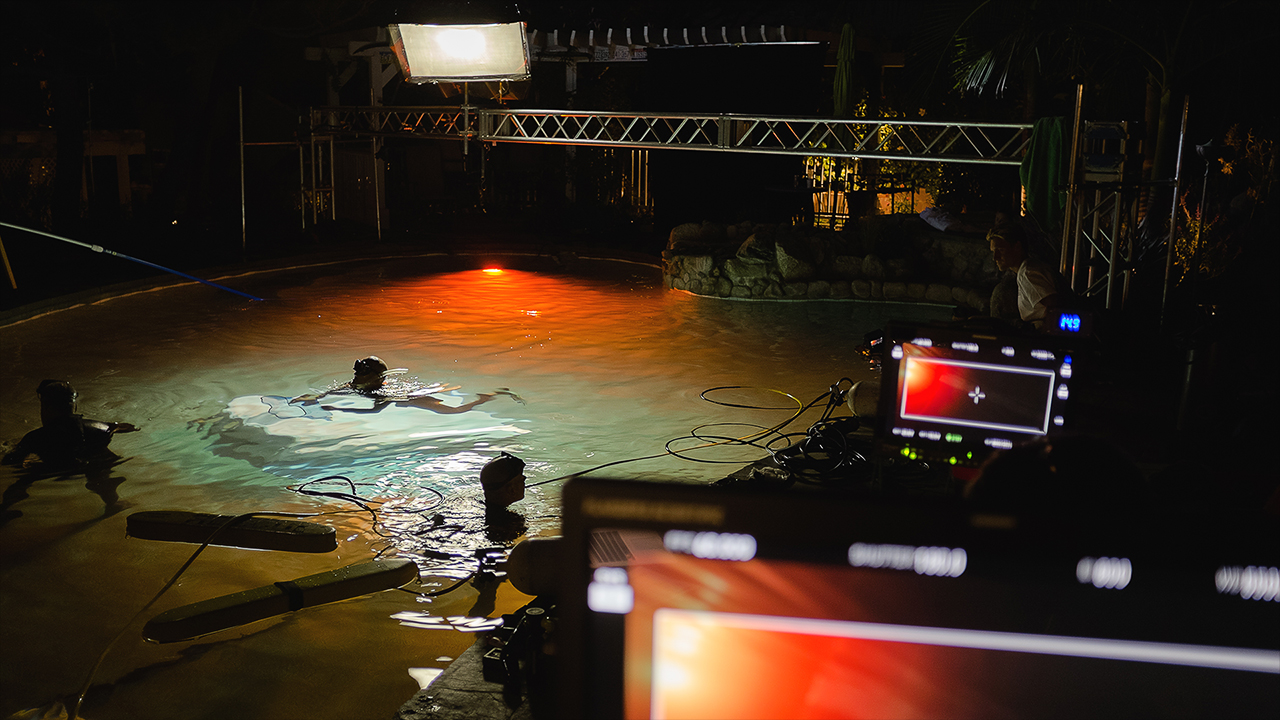
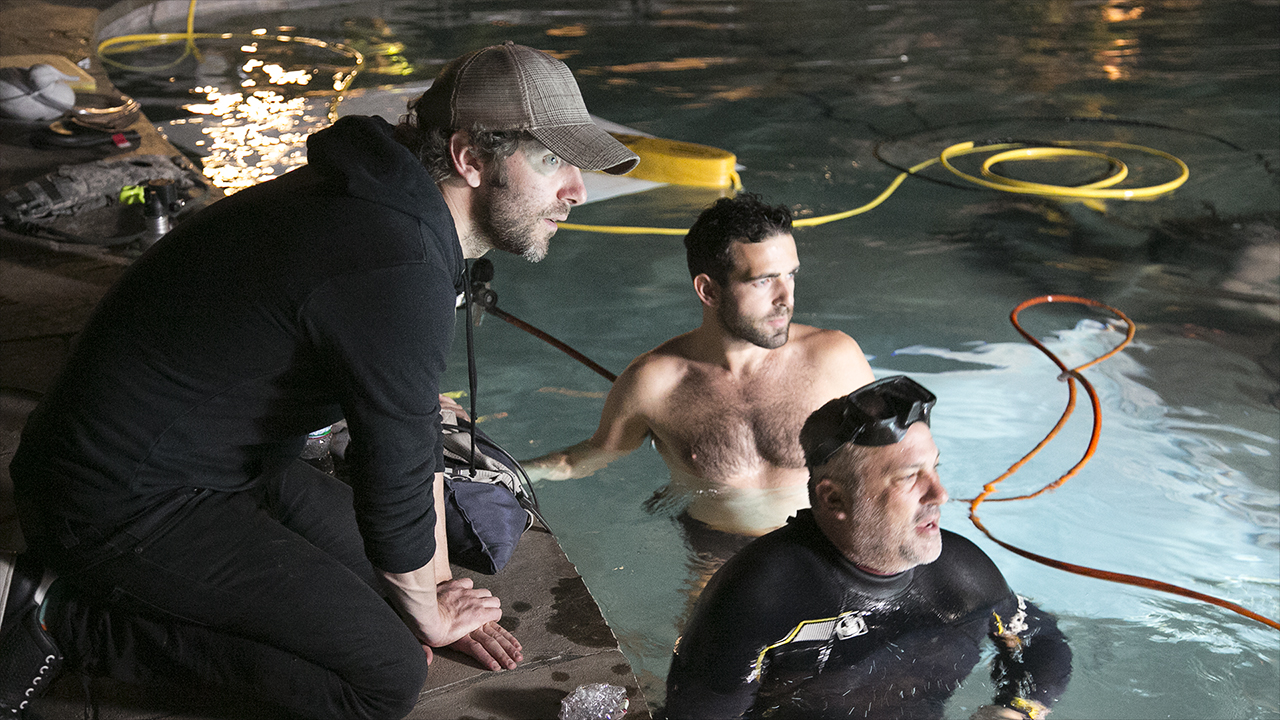
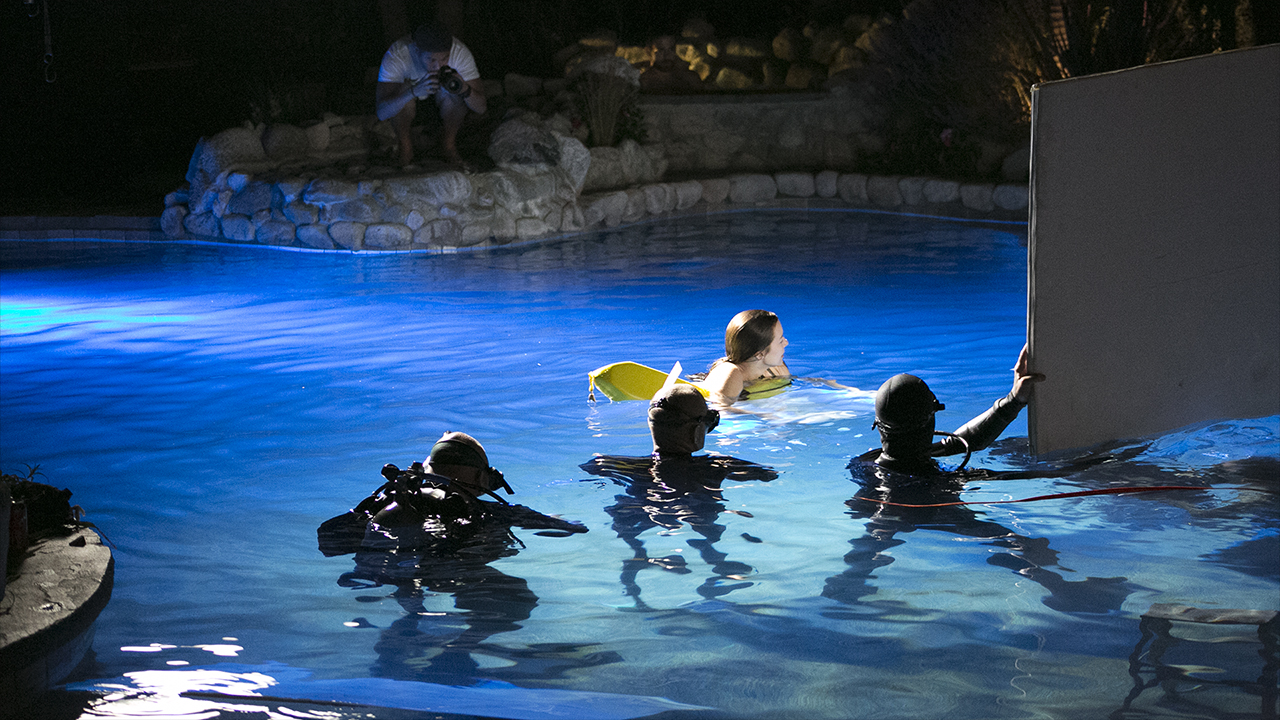
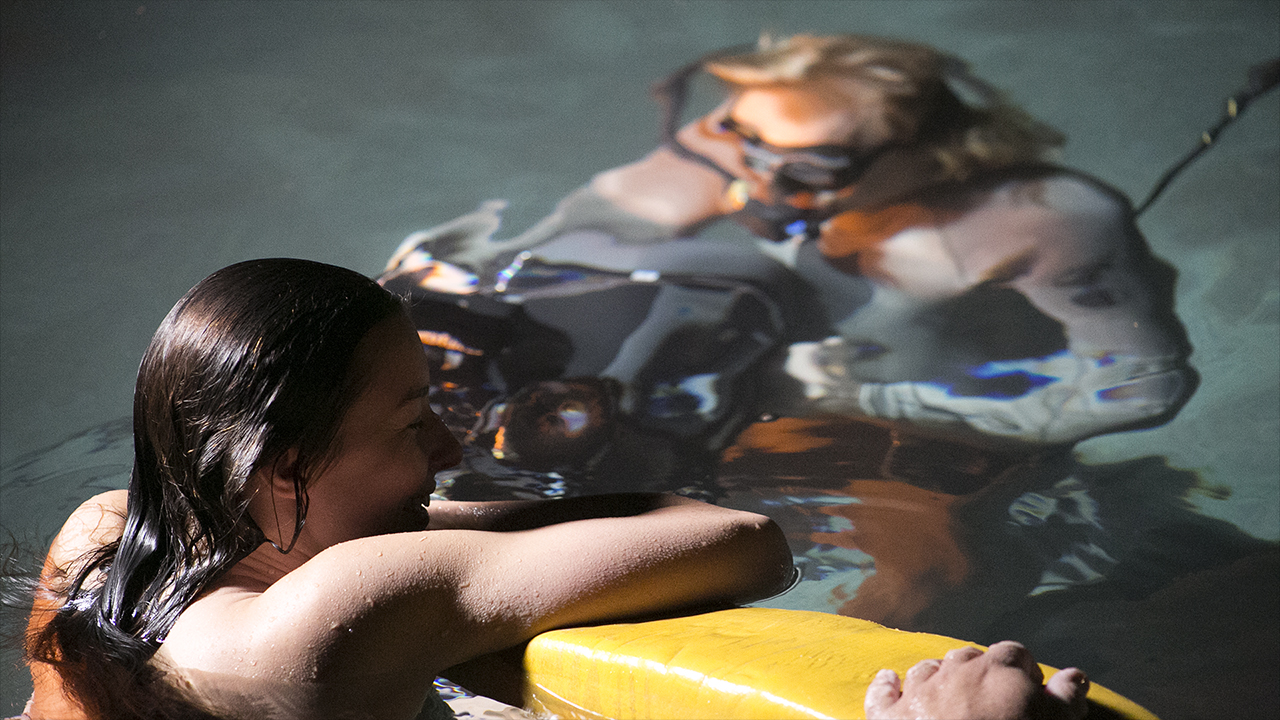

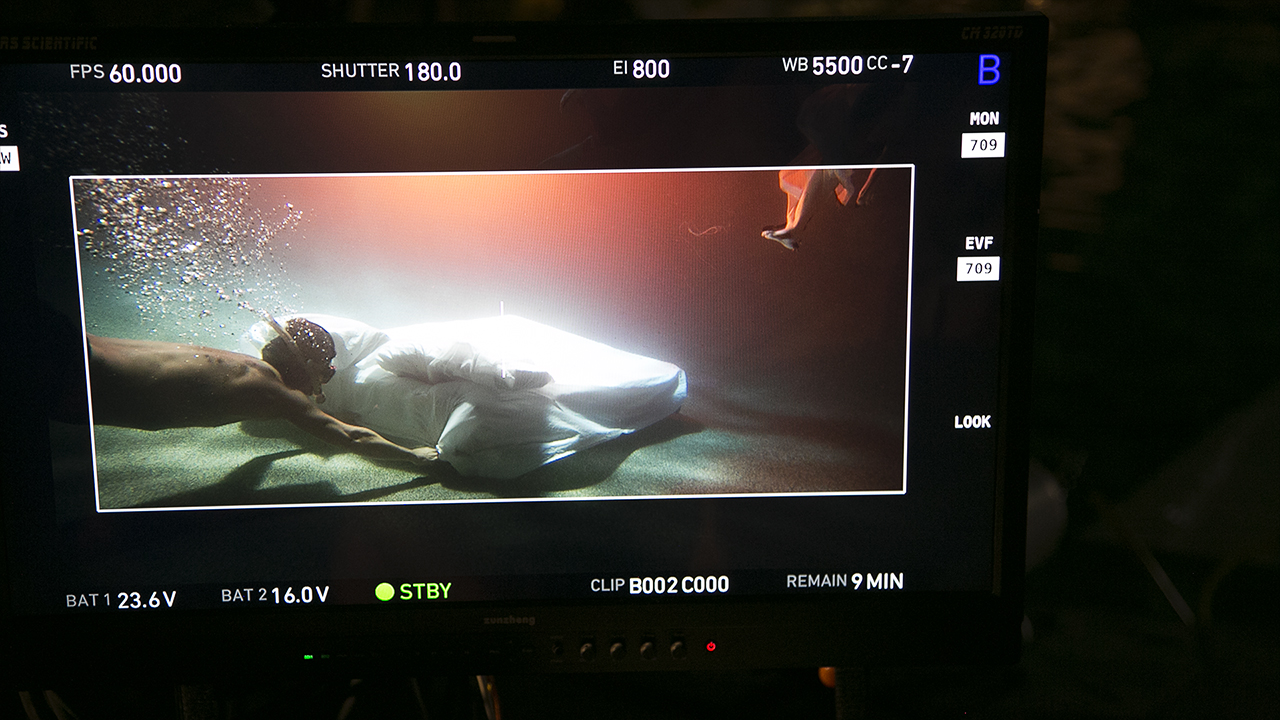

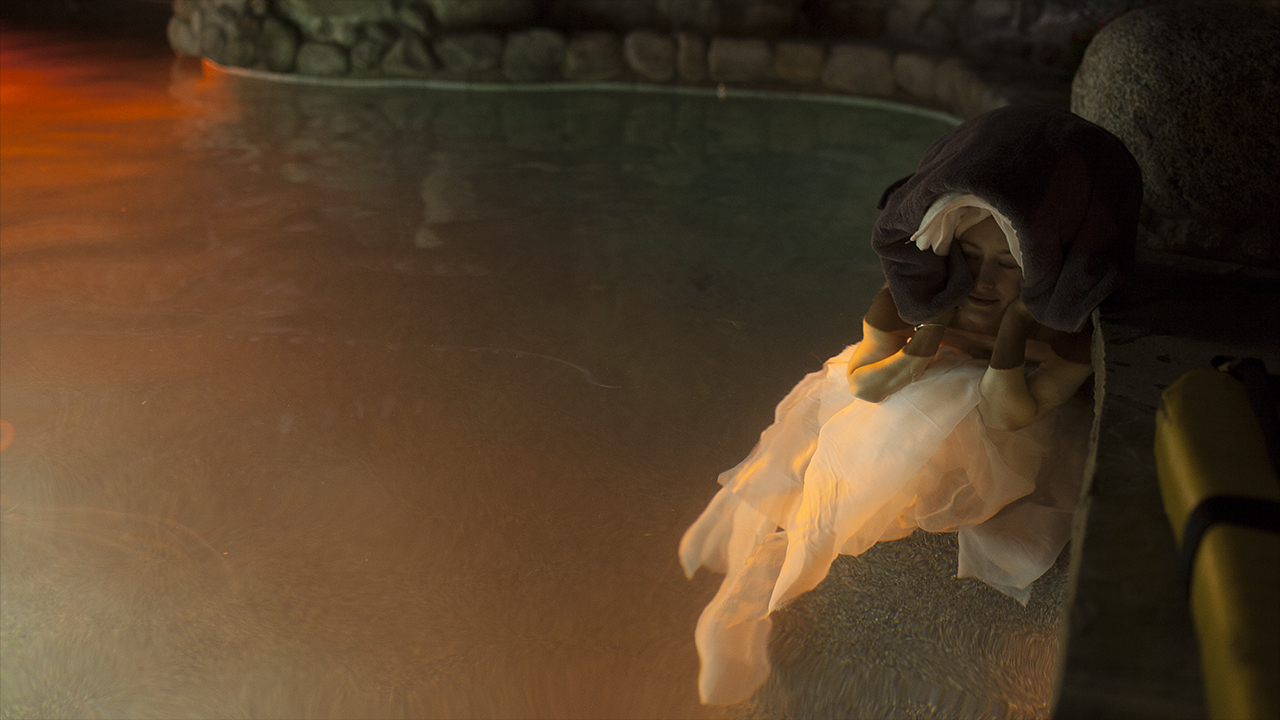

The Hallway Exit
–– 10As the protagonist leaves the chamber, things are calm yet odd, there is a feeling of exhaustion and confusion. He walks with his head down past the others waiting to enter - a familiar scene from the beginning of the film. Slowly, the others waiting are revealed as we cut to his POV and can now see that all the people waiting are essentially him - a recollection from the mirror scene earlier in the film. He follows the line until eventually standing in line is the woman from the underwater dream - they instantly locks eyes to conclude the film.
To shoot the multiplicity shots they used a Hot Gears Motion Control Slider with a pan tilt head. They staged the shot with all the extras, performed and recorded the camera move live with the hot gears controller and then were able to precisely repeat the camera path many times until they had captured the actor at each position in line. They took the selects to their friends at Spypost, where they rotoscoped and composited the material so it felt like one continuously impossible shot.
To shoot the multiplicity shots they used a Hot Gears Motion Control Slider with a pan tilt head. They staged the shot with all the extras, performed and recorded the camera move live with the hot gears controller and then were able to precisely repeat the camera path many times until they had captured the actor at each position in line. They took the selects to their friends at Spypost, where they rotoscoped and composited the material so it felt like one continuously impossible shot.
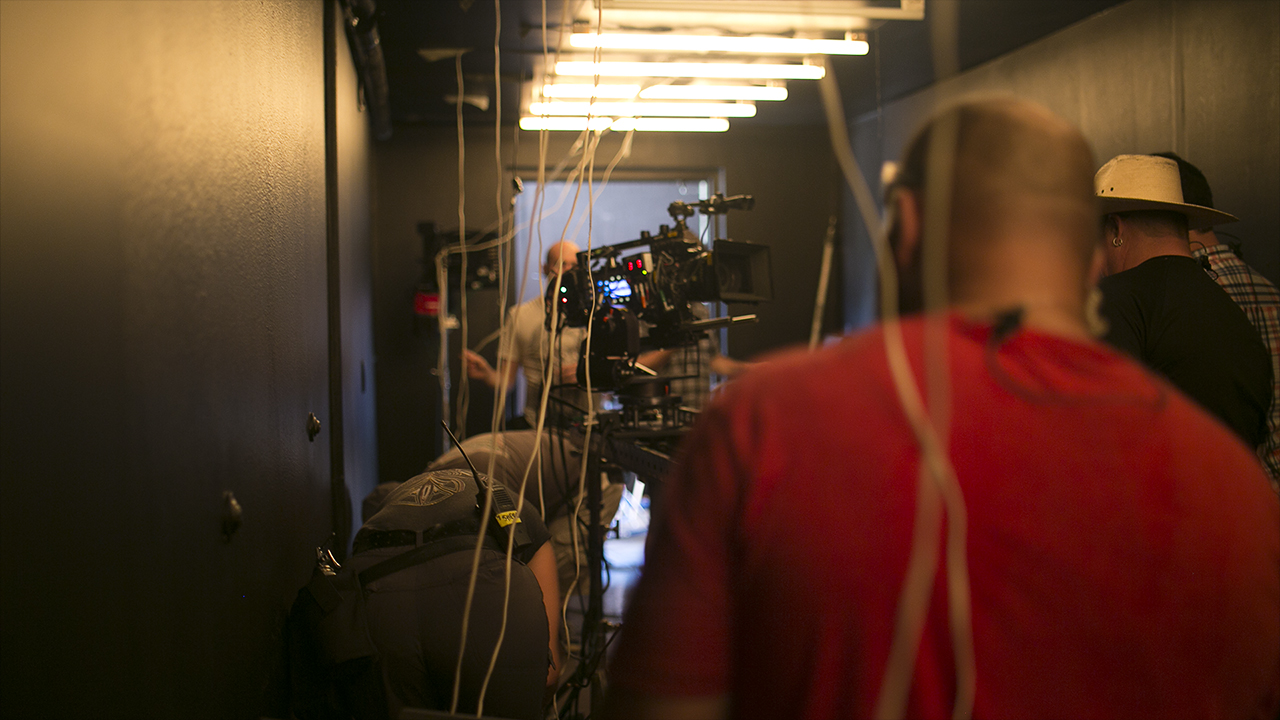
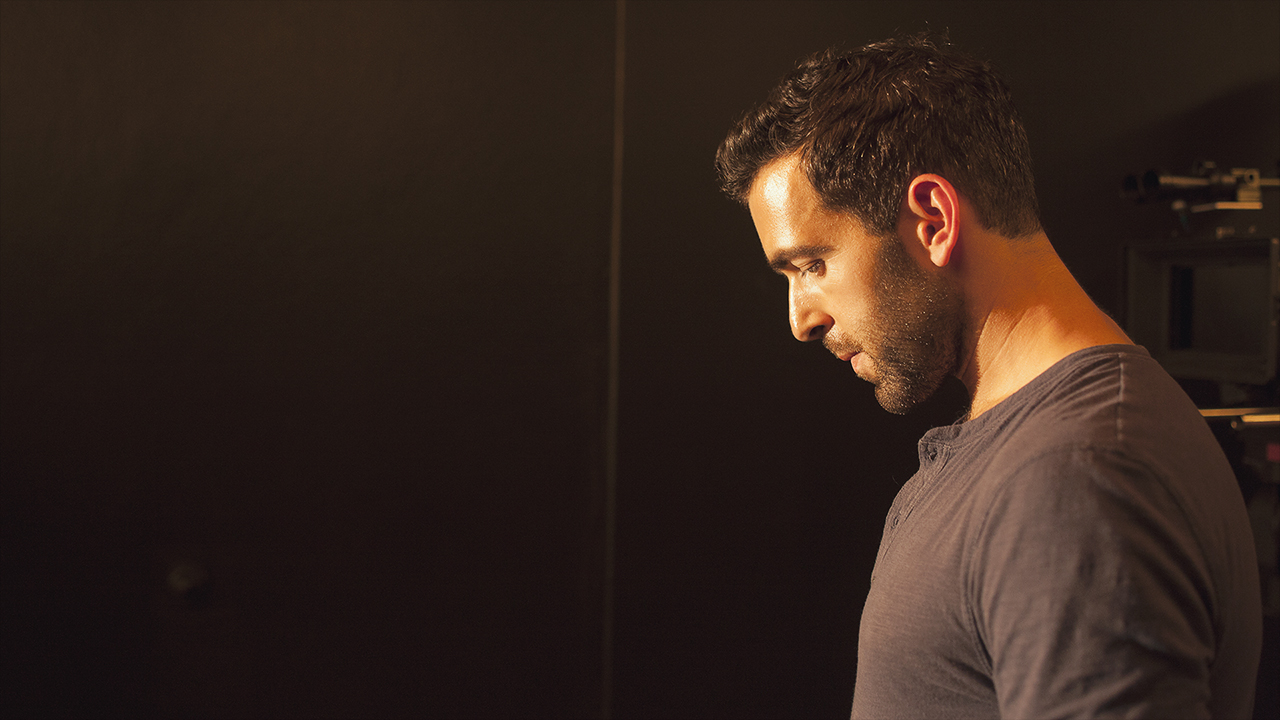
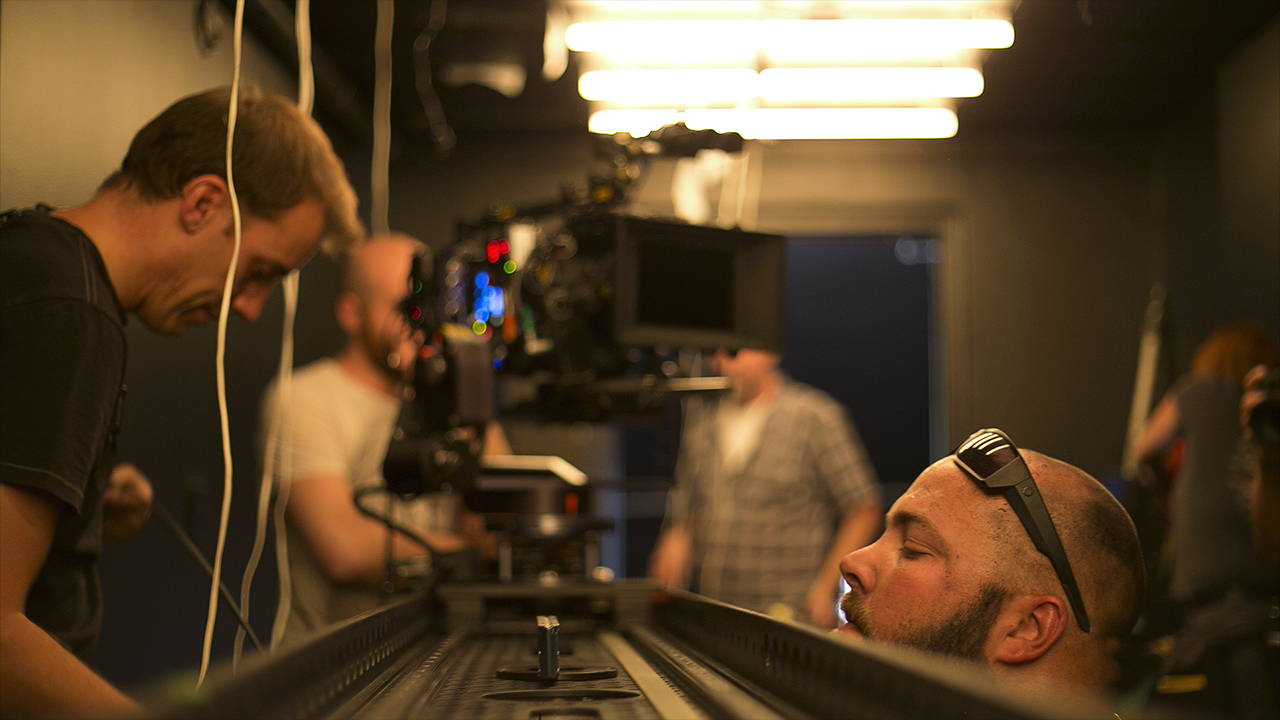
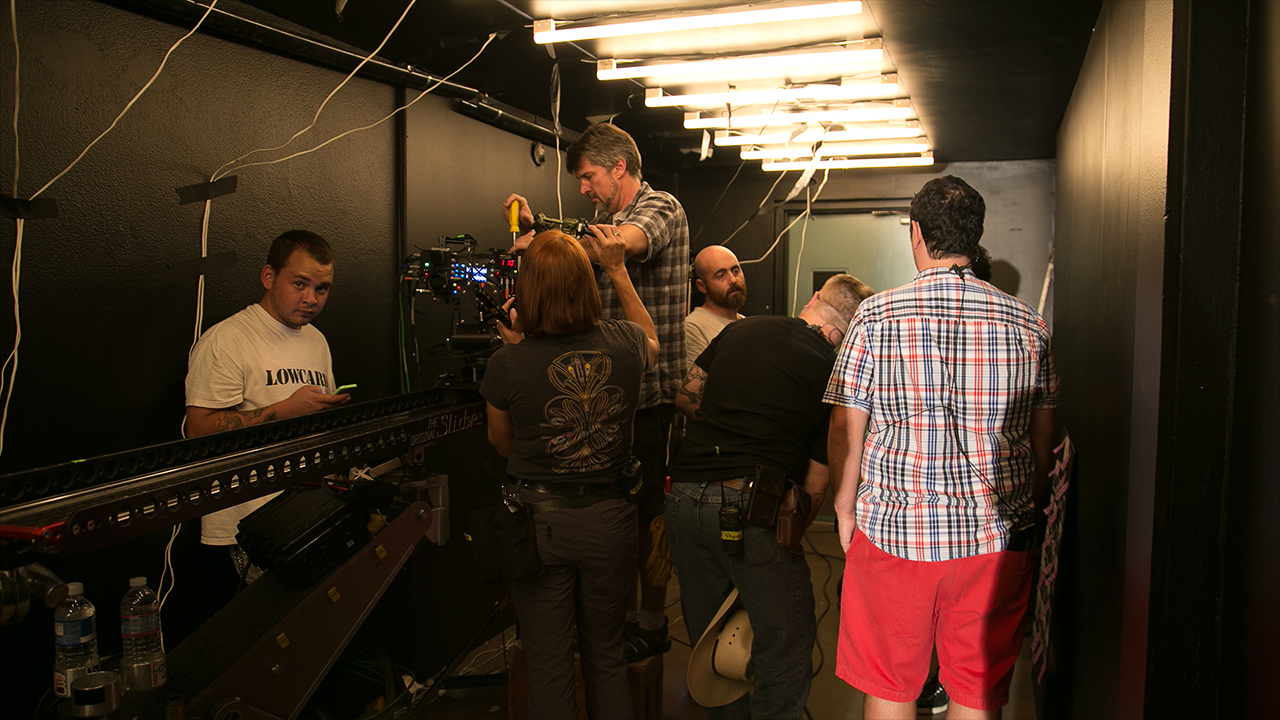
The Connected Series
–– 11Today, we all lead lives where our unique relationship to technology and the constant stream of new innovations keep us more connected. Day to day, we see the immediate impact that the connective capabilities of today’s communication devices and social applications have on society. E.g. we can send a file, text a photo to our friends, video chat remotely, or show a photo or video to the person next to us, no matter where we are.
For Samsung USA's ‘Connected’ series, the brand was looking to delve deeper by partnering with ten creatives who each offered a unique and original storytelling style. Together, the films would create a series of videos that offer compelling perspectives on the human connection with technology and innovation. With connection comes meaning - it was their goal to create a meaningful dialogue with every film produced and Mr. Munkowitz was happy to oblige them.
For Samsung USA's ‘Connected’ series, the brand was looking to delve deeper by partnering with ten creatives who each offered a unique and original storytelling style. Together, the films would create a series of videos that offer compelling perspectives on the human connection with technology and innovation. With connection comes meaning - it was their goal to create a meaningful dialogue with every film produced and Mr. Munkowitz was happy to oblige them.
–– 11
The Chamber - Credit List
Written & Directed by: GMUNK
Managing Director - Live Action: Oliver Fuselier
Managing Partner - Digital: Dustin Callif
Executive Producer - Live Action: Rob Helphand
Producer: Geno Imbriale
Production Supervisor: Jessica Clark
Assistant Production Supervisor: Devin Johnston
1st Assistant Director: Nathan McCoy
2nd Assistant Director: Bob Riley
VTR: Dylan Defelicis
Director of Photography: Joe Picard
1st Assistant Camera: Bob Smathers
Underwater Camera Operator: Bob Settlemire
2nd Assistant Camera: Sherri Miranda
DIT: Bobby Maruvada
Camera Utility: Magnus Persson
Gaffer: Shane Salyards
BB Electric: Gary Soloko
Electric: Mike Ursetta
Electric: Reid Anderson
Key Grip: Johnny Ziello
Grip: JayJay Jaramillo
Grip: Han Cholo
Grip: Cyle Huff
Principal Male: Victor Mazzone
Principal Female: Jessica Blackmore
Principal Boy: Austin Dean
Wardrobe Stylist: Danielle RaPue
Hair/Makeup: Vera Steimberg
Production Design: VT PRO Design
Design Director: Michael Fullman
Lead Designer / Animator: Michael Rigley
Production Assistant: Sergio Valencia LED Tape Install: Barry Bradshaw
Post Production: Glassworks London
VFX Supervisor: James MacLachlan
Colorist: Matt Hare
Editor: Bradley G Munkowitz
Music by: Keith Ruggiero
Post Production: SpyPost
VFX Artists: Ben Hawkins, Todd Gill
Art Department: Arne Knudsen
Typography Design: Rowan Ogden
Title Animation: Peter Clark
Writers: Bradley G Munkowitz, Taylor Van Arsdale
1st References: Bruno Dayan, Brendon Burton
2nd References: Christian Boltanski, Aaron Draper
Process Film Editor: Sam Cividanis
Process Photographers: Diani Sutherland, Jeff Lee
Process Music by: PILOTPRIEST
Production Assistant (Office): Anneke Barrie
Production Assistant (Cam/Prod): Trey Butler
Production Assistant: Crystal Katancharoen
Production Assistant: Jesse Barba
Production Assistant: Cody Ross
Gang Boss: Tony Wood
Locations: Doug Disanti
Site Rep: Kyle Hollinger
Studio Teacher: Randy Hoffman
Lifeguard: Wes Hatfield
Scuba Diver: Chris Poppajon
Scuba Diver: Janes Clyde
Craft Service: Danny Crowley
Air Courier: Bellair
Camera: The Camera House
Casting: ASG Casting
Crafty: McCrafty’s
Dolly: JL Fisher
Electric Equipment: Bronco Lighting
Extras: ACT Inc.
Generator: Camerama
Grip Equipment: Camerama
Insurance: Aon/Albert G. Ruben
Messenger Service: Harry’s Run
Payroll: CAPS Universal
Permit: Film LA
Production Supplies: Camerama
Shipping: Fedex
Water Truck: Agua Dulce
Trucking (Prod/Cam): Quixote
VTR: Lucky Jackson
Walkies: Camerama
Extras: Per Act Inc.
Special Thanks: Erich Joiner, Matrix Visual
Written & Directed by: GMUNK
Managing Director - Live Action: Oliver Fuselier
Managing Partner - Digital: Dustin Callif
Executive Producer - Live Action: Rob Helphand
Producer: Geno Imbriale
Production Supervisor: Jessica Clark
Assistant Production Supervisor: Devin Johnston
1st Assistant Director: Nathan McCoy
2nd Assistant Director: Bob Riley
VTR: Dylan Defelicis
Director of Photography: Joe Picard
1st Assistant Camera: Bob Smathers
Underwater Camera Operator: Bob Settlemire
2nd Assistant Camera: Sherri Miranda
DIT: Bobby Maruvada
Camera Utility: Magnus Persson
Gaffer: Shane Salyards
BB Electric: Gary Soloko
Electric: Mike Ursetta
Electric: Reid Anderson
Key Grip: Johnny Ziello
Grip: JayJay Jaramillo
Grip: Han Cholo
Grip: Cyle Huff
Principal Male: Victor Mazzone
Principal Female: Jessica Blackmore
Principal Boy: Austin Dean
Wardrobe Stylist: Danielle RaPue
Hair/Makeup: Vera Steimberg
Production Design: VT PRO Design
Design Director: Michael Fullman
Lead Designer / Animator: Michael Rigley
Production Assistant: Sergio Valencia LED Tape Install: Barry Bradshaw
Post Production: Glassworks London
VFX Supervisor: James MacLachlan
Colorist: Matt Hare
Editor: Bradley G Munkowitz
Music by: Keith Ruggiero
Post Production: SpyPost
VFX Artists: Ben Hawkins, Todd Gill
Art Department: Arne Knudsen
Typography Design: Rowan Ogden
Title Animation: Peter Clark
Writers: Bradley G Munkowitz, Taylor Van Arsdale
1st References: Bruno Dayan, Brendon Burton
2nd References: Christian Boltanski, Aaron Draper
Process Film Editor: Sam Cividanis
Process Photographers: Diani Sutherland, Jeff Lee
Process Music by: PILOTPRIEST
Production Assistant (Office): Anneke Barrie
Production Assistant (Cam/Prod): Trey Butler
Production Assistant: Crystal Katancharoen
Production Assistant: Jesse Barba
Production Assistant: Cody Ross
Gang Boss: Tony Wood
Locations: Doug Disanti
Site Rep: Kyle Hollinger
Studio Teacher: Randy Hoffman
Lifeguard: Wes Hatfield
Scuba Diver: Chris Poppajon
Scuba Diver: Janes Clyde
Craft Service: Danny Crowley
Air Courier: Bellair
Camera: The Camera House
Casting: ASG Casting
Crafty: McCrafty’s
Dolly: JL Fisher
Electric Equipment: Bronco Lighting
Extras: ACT Inc.
Generator: Camerama
Grip Equipment: Camerama
Insurance: Aon/Albert G. Ruben
Messenger Service: Harry’s Run
Payroll: CAPS Universal
Permit: Film LA
Production Supplies: Camerama
Shipping: Fedex
Water Truck: Agua Dulce
Trucking (Prod/Cam): Quixote
VTR: Lucky Jackson
Walkies: Camerama
Extras: Per Act Inc.
Special Thanks: Erich Joiner, Matrix Visual
Press Links
Motionographer –– “The Chamber” a short film by GMUNK StashMedia –– Behind the Scenes on GMUNK'S 'The CHAMBER' Creative Planet –– GMUNK Creates 'The Chamber' for Samsung Mobile's 'Connected' Series
DesignCollector –– “The Chamber” a short film by GMUNK
Samsung Connected Series Tumblr –– Featured Projects
Gunpowder & Sky –– Sci-Fi Short Film "The Chamber" presented by DUST
Motionographer –– “The Chamber” a short film by GMUNK StashMedia –– Behind the Scenes on GMUNK'S 'The CHAMBER' Creative Planet –– GMUNK Creates 'The Chamber' for Samsung Mobile's 'Connected' Series
DesignCollector –– “The Chamber” a short film by GMUNK
Samsung Connected Series Tumblr –– Featured Projects
Gunpowder & Sky –– Sci-Fi Short Film "The Chamber" presented by DUST